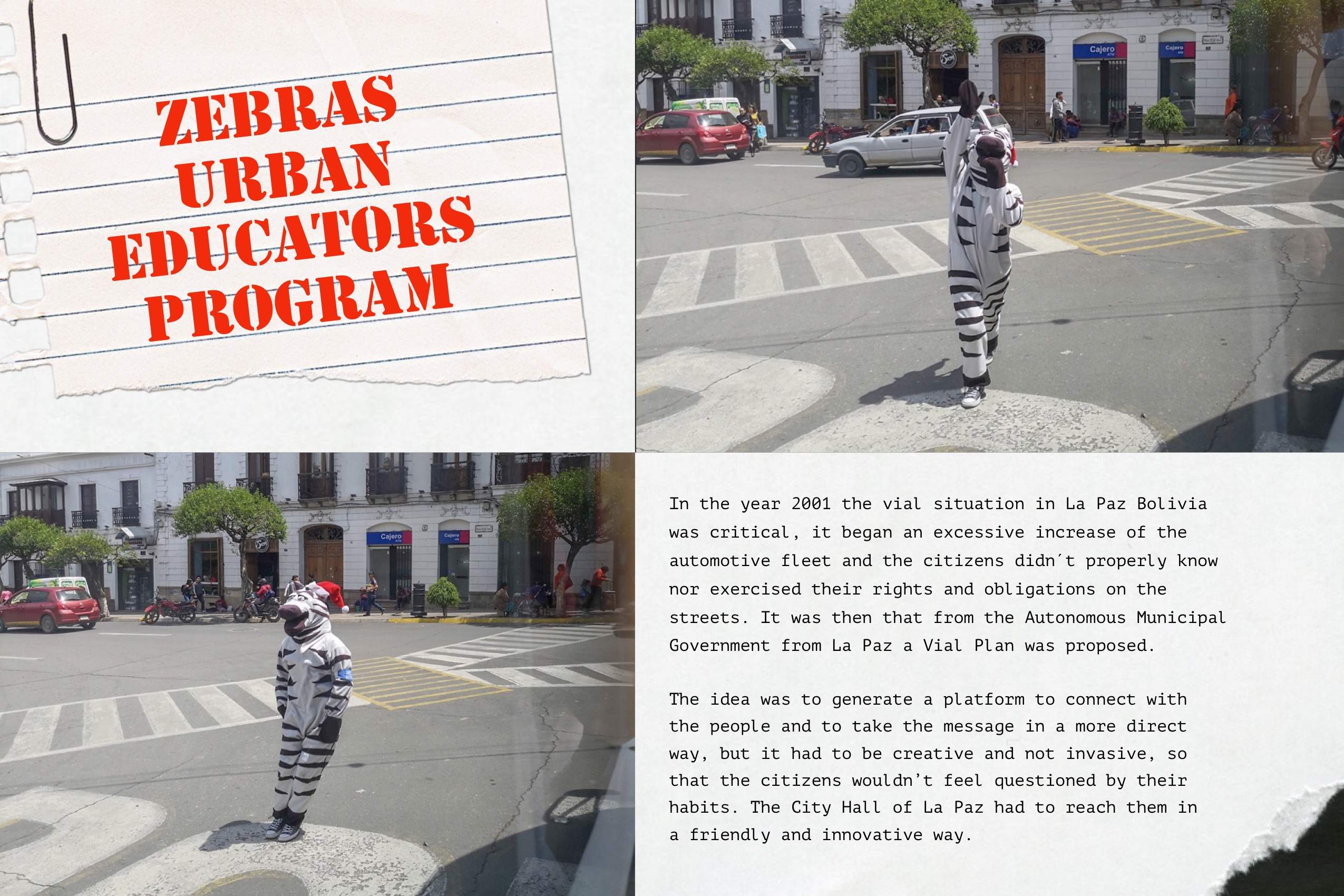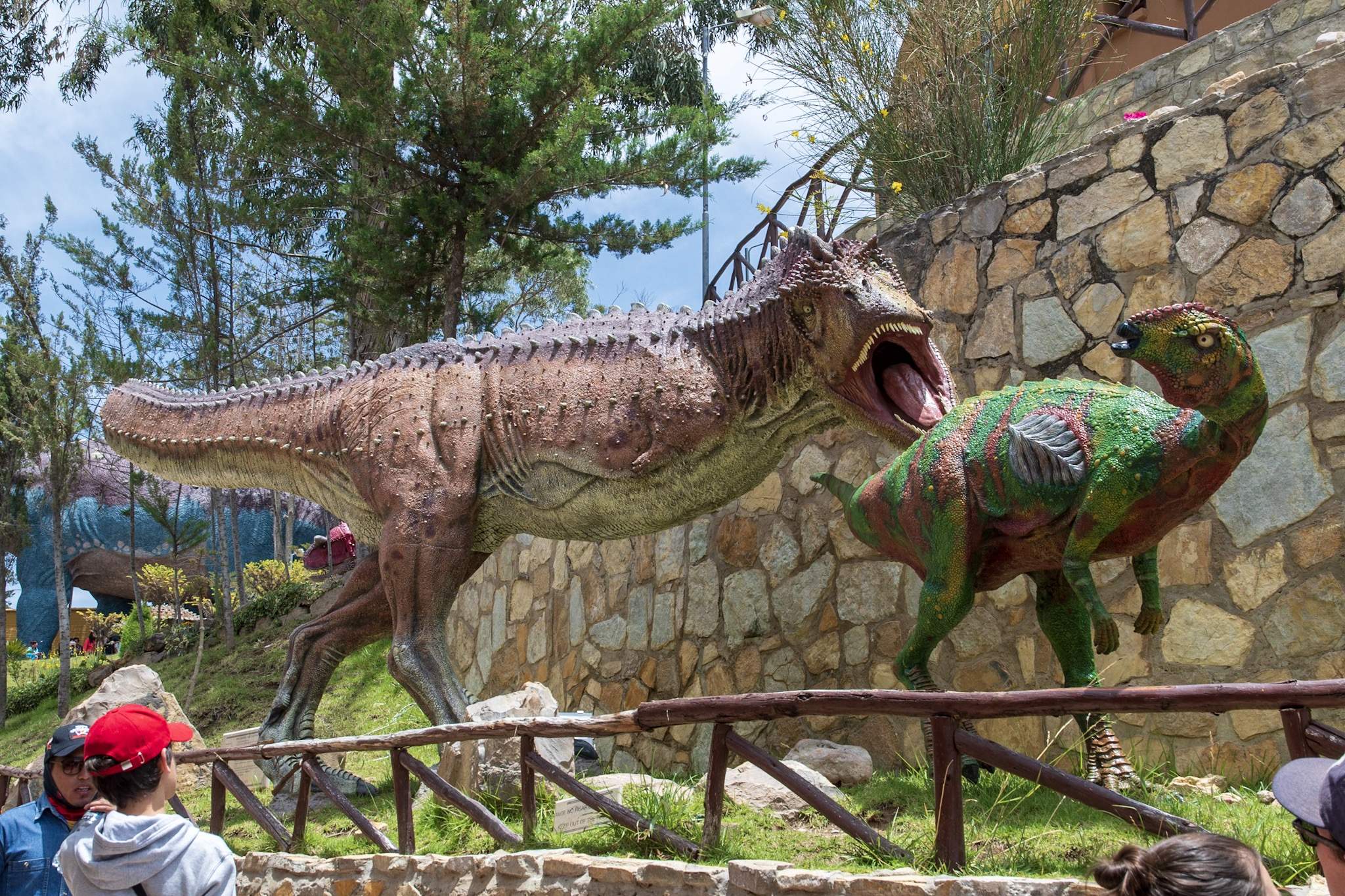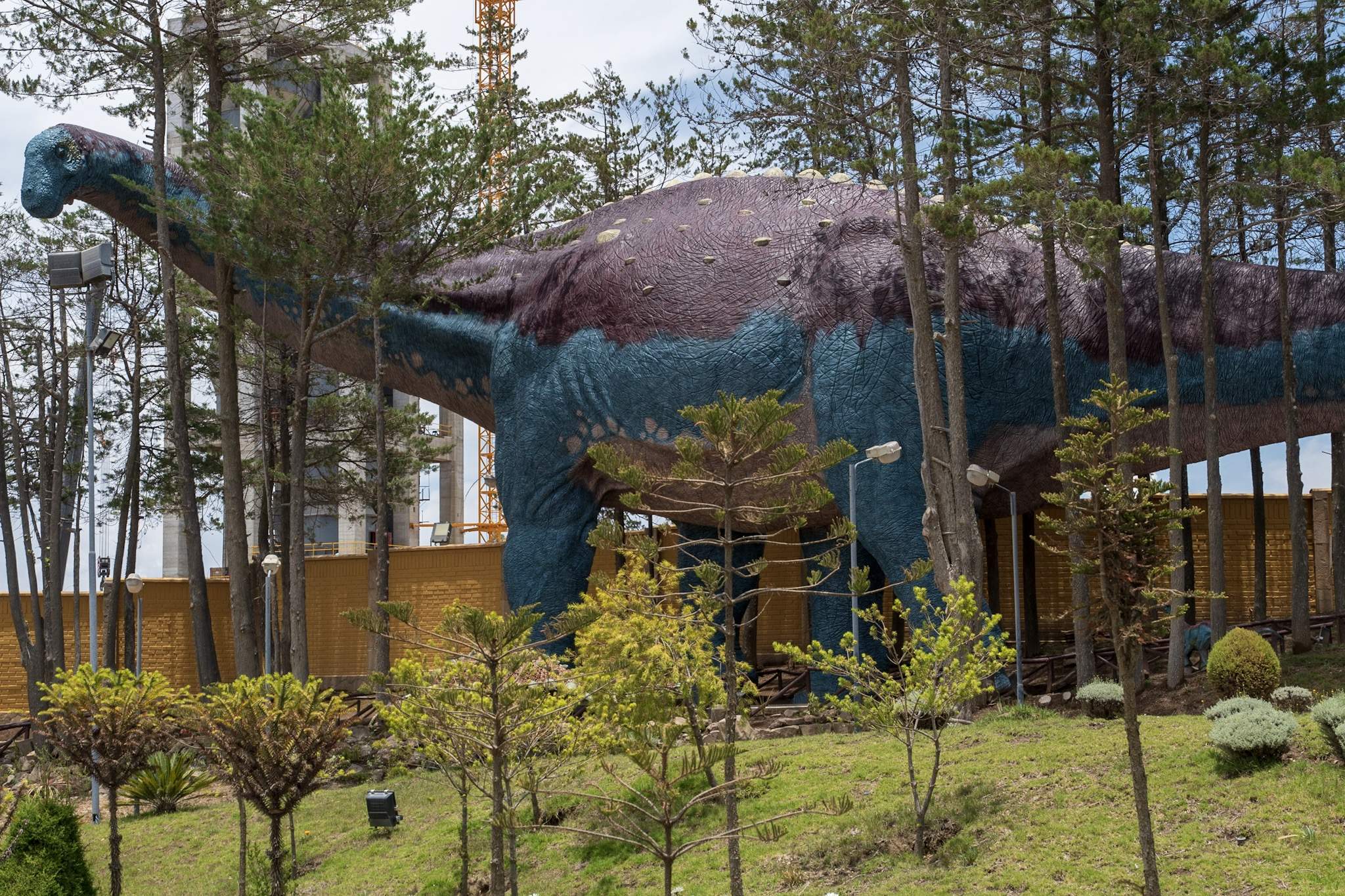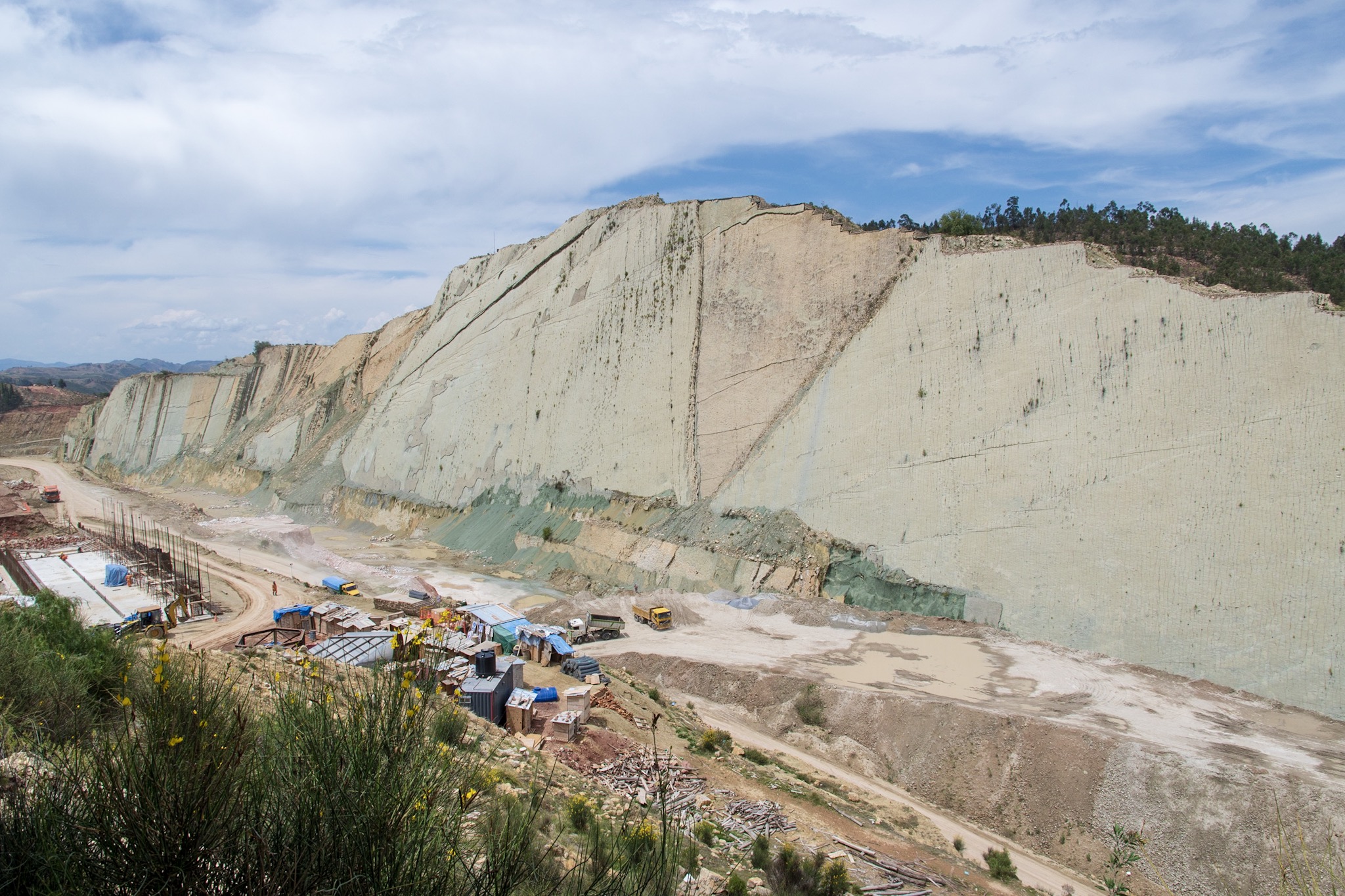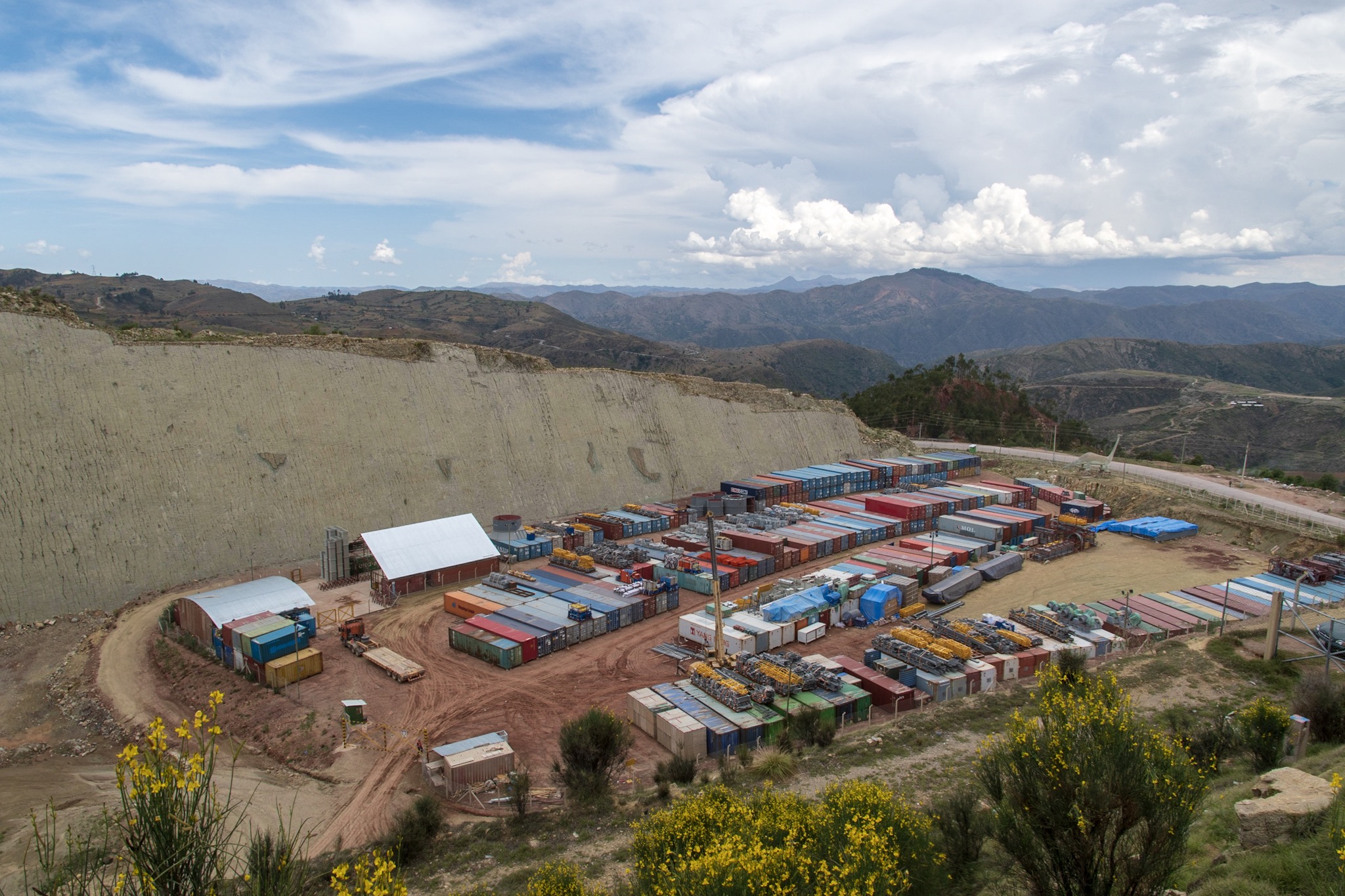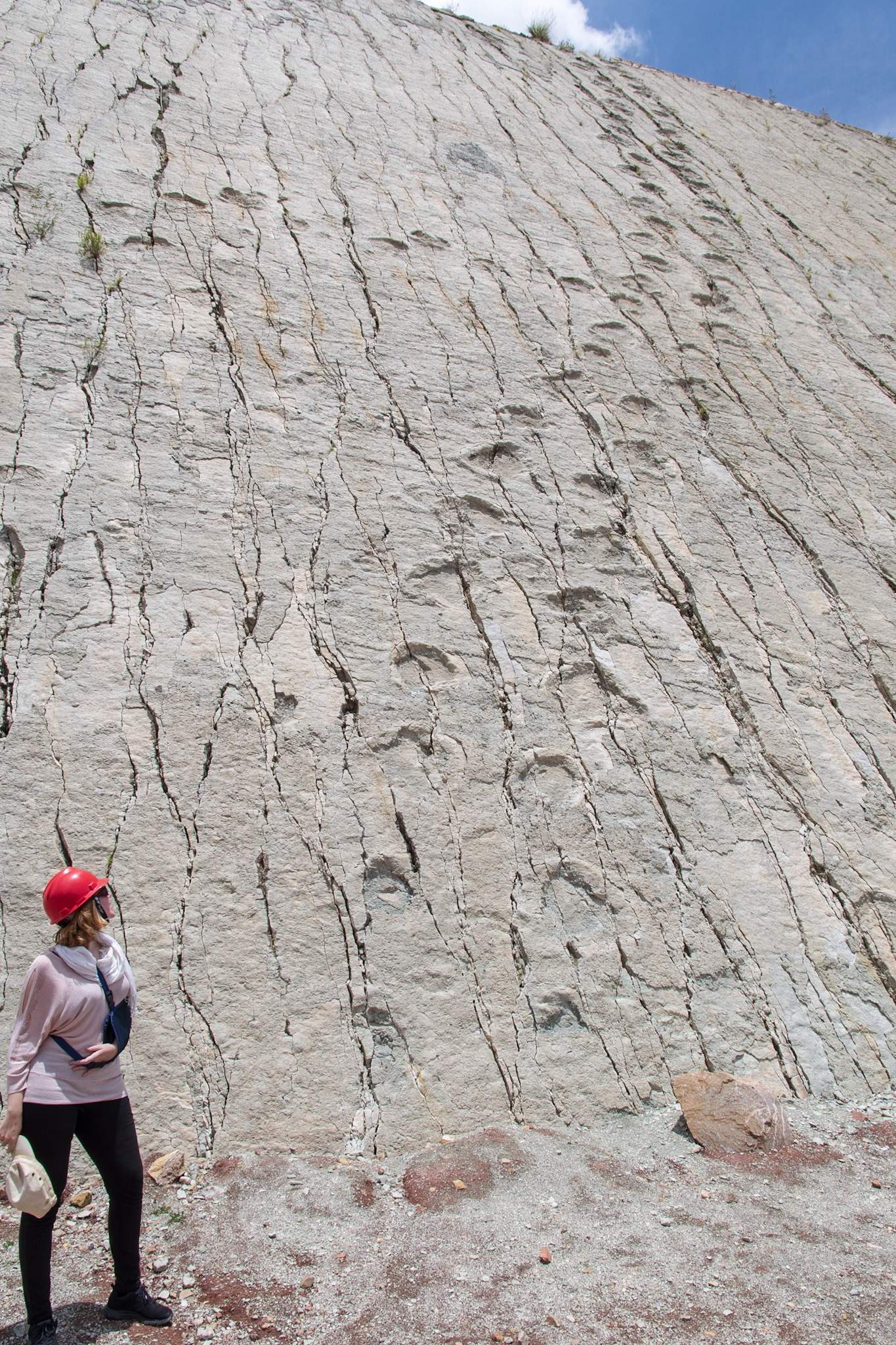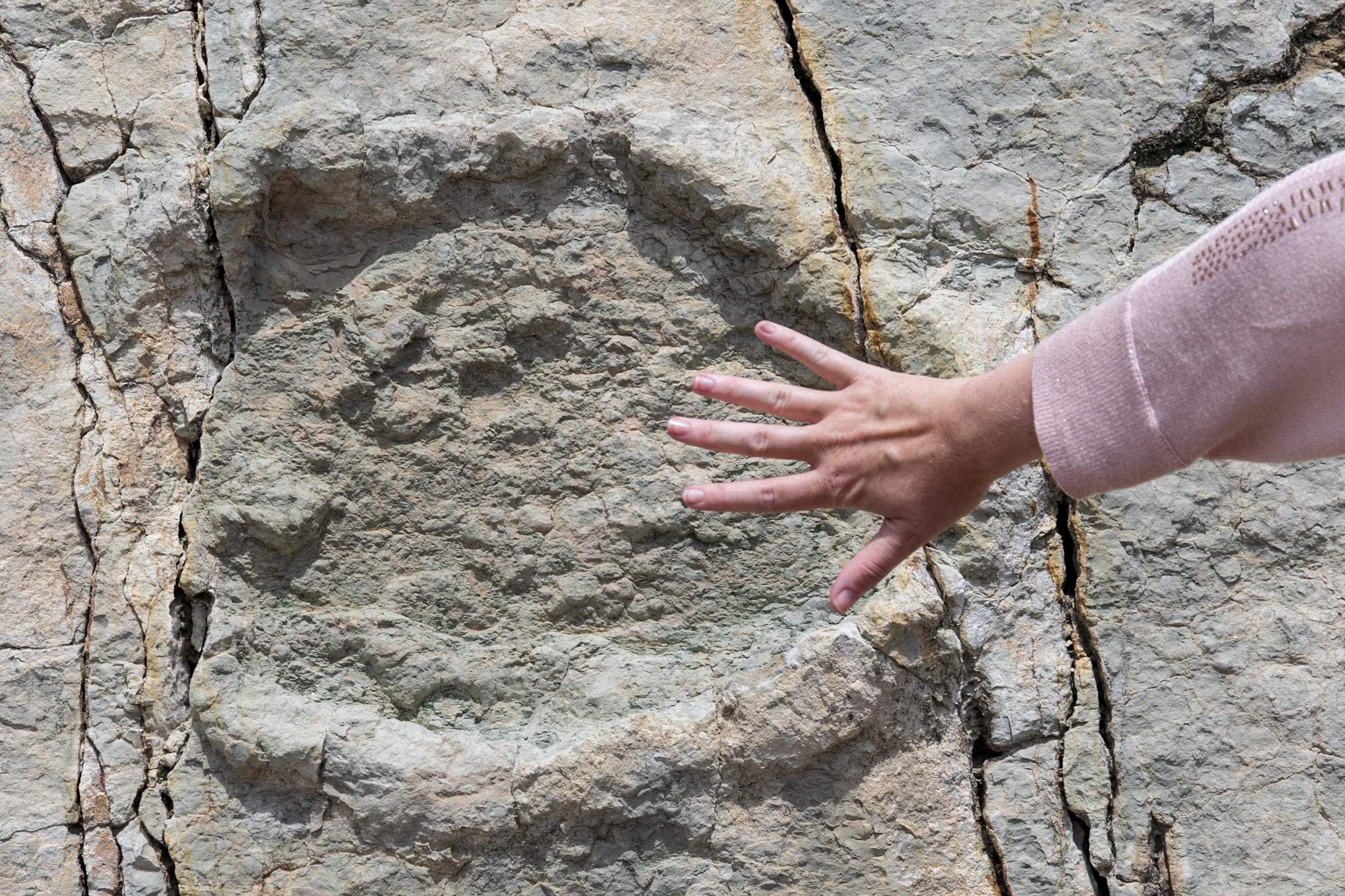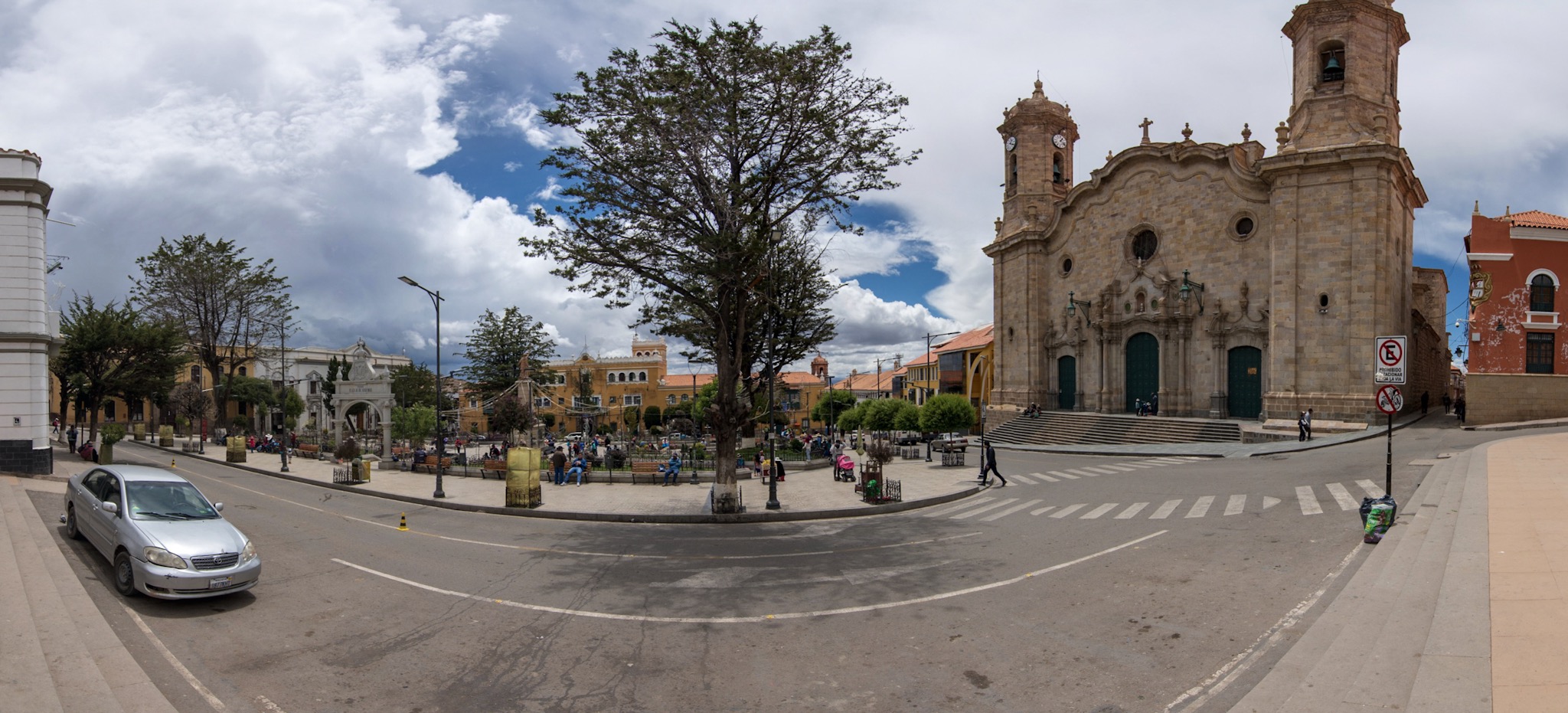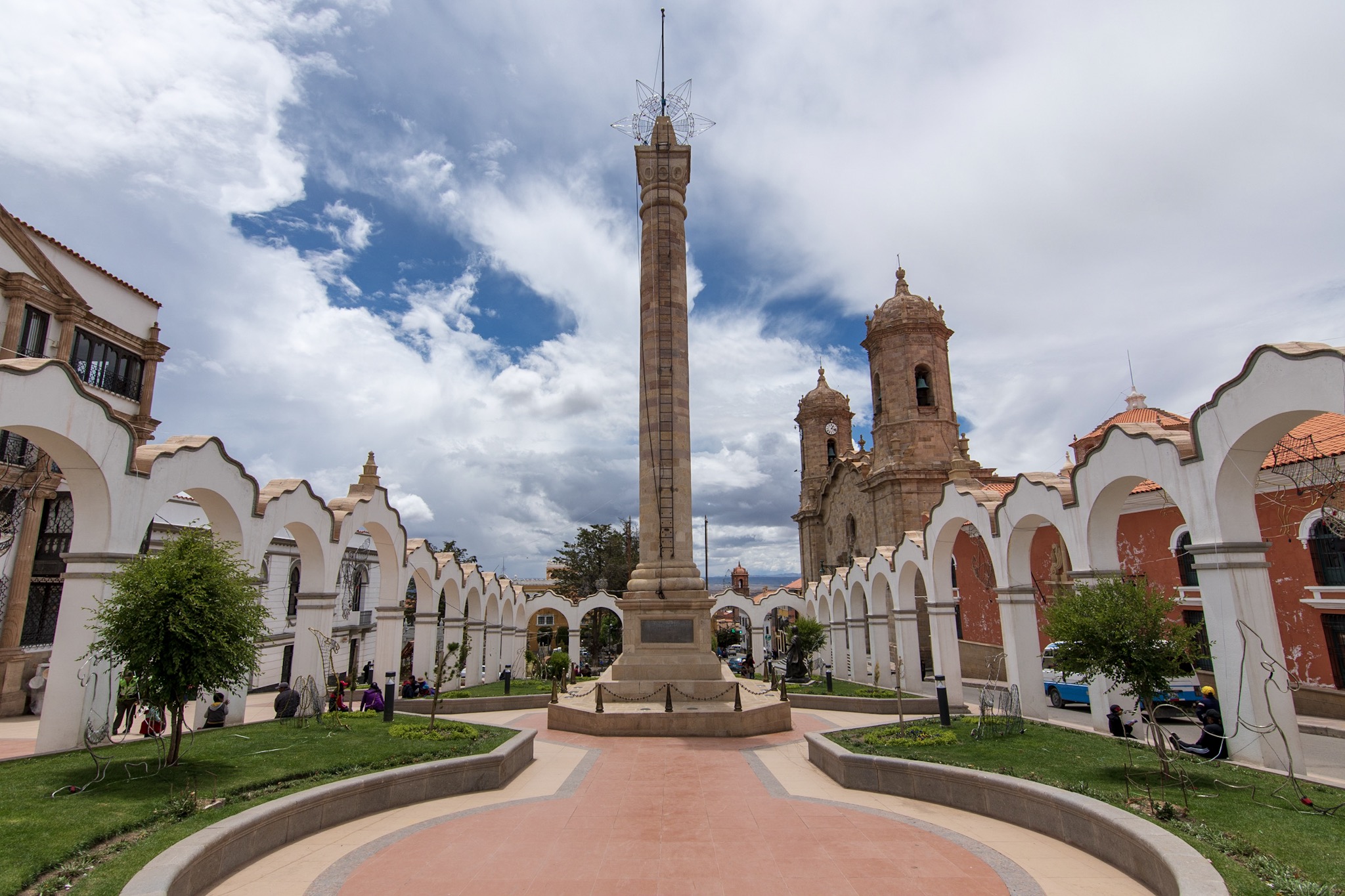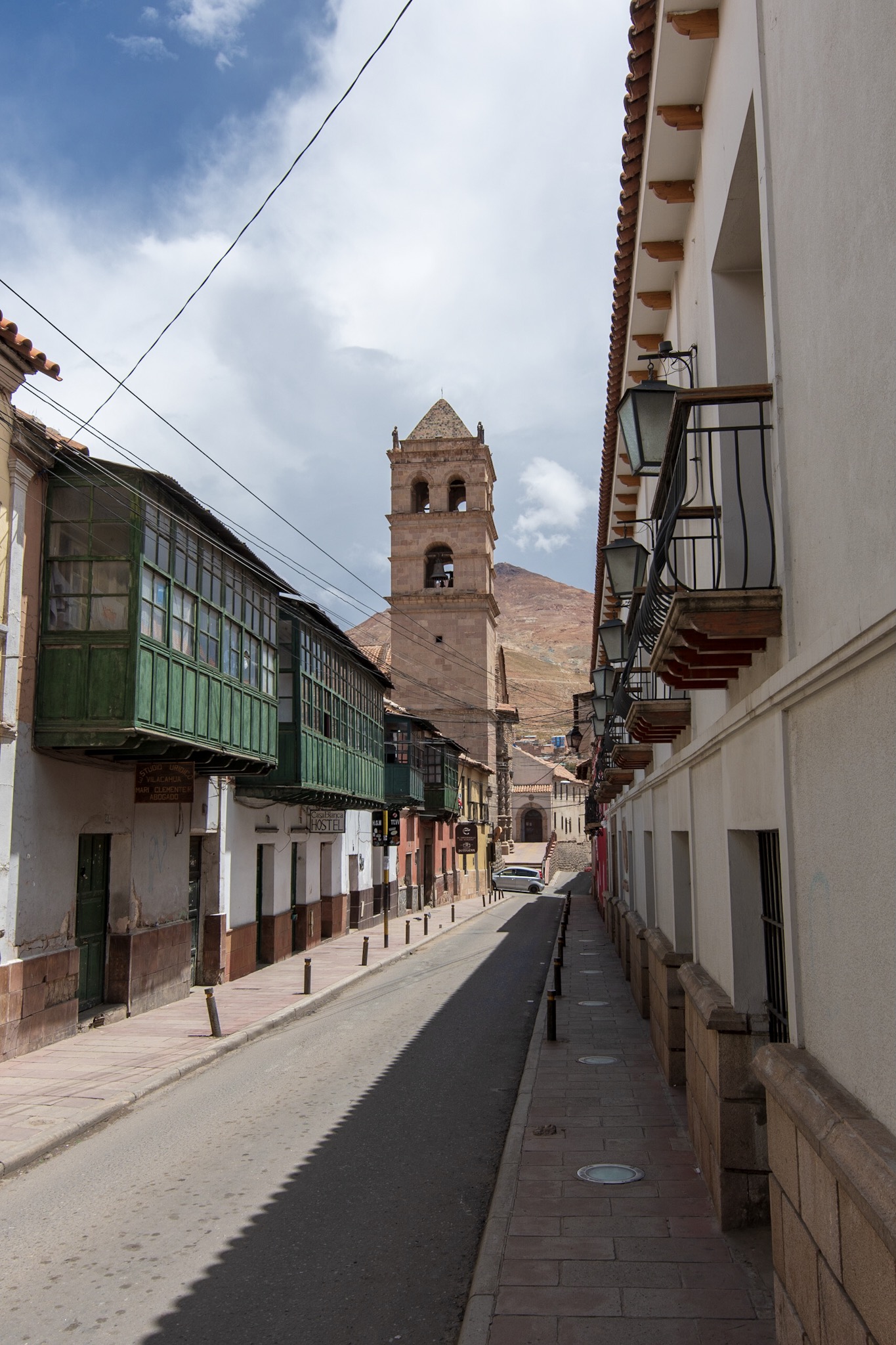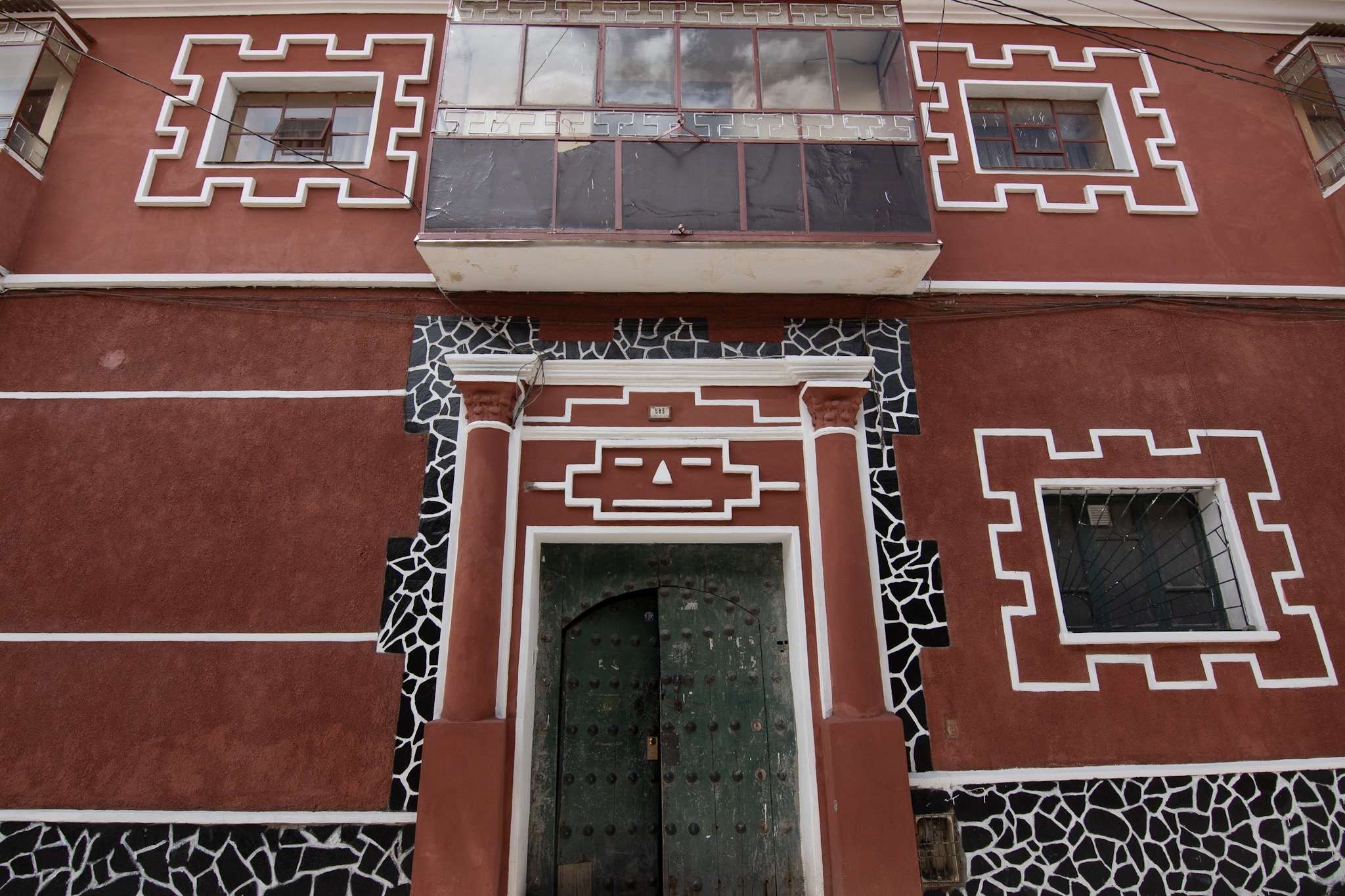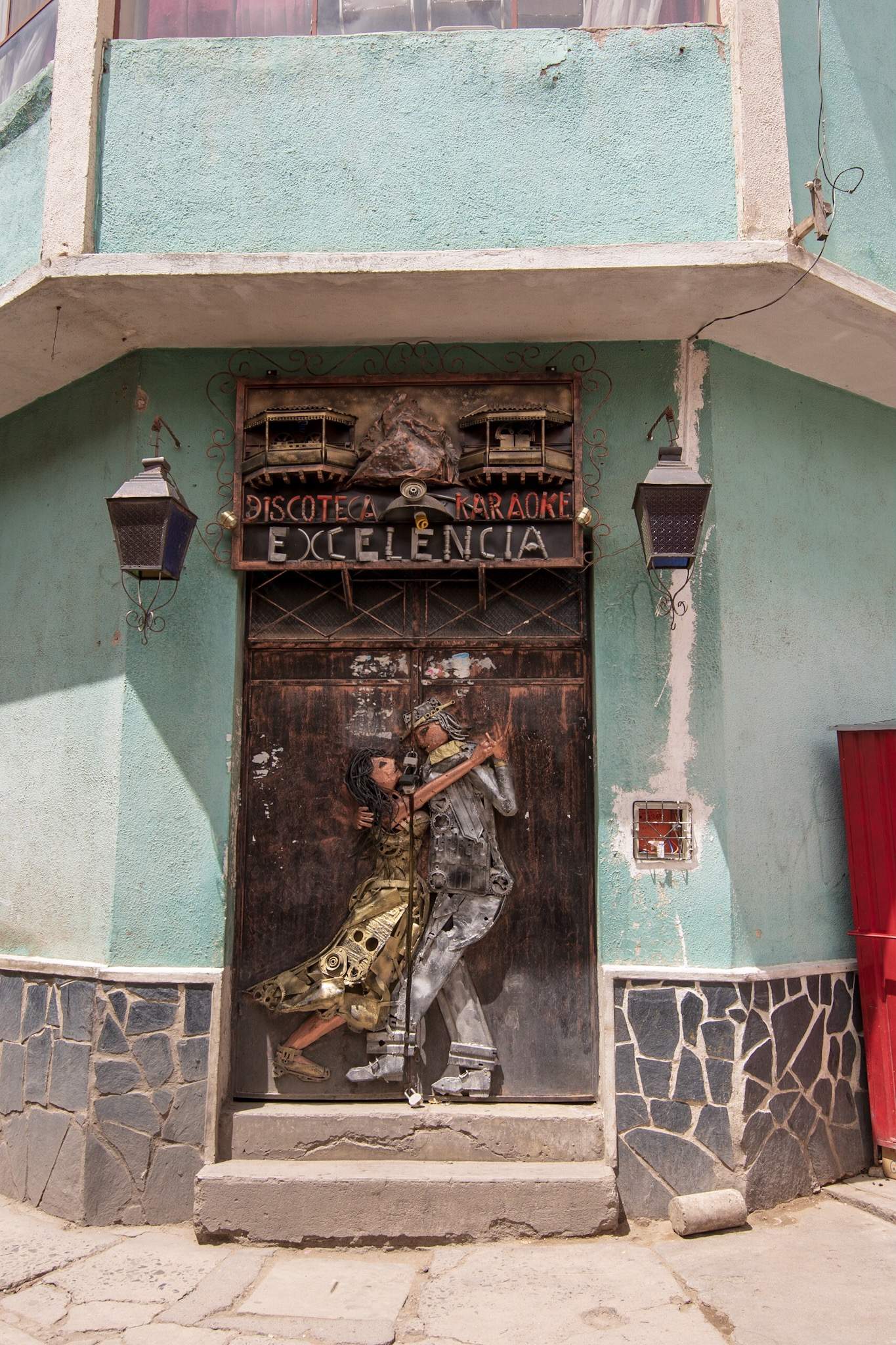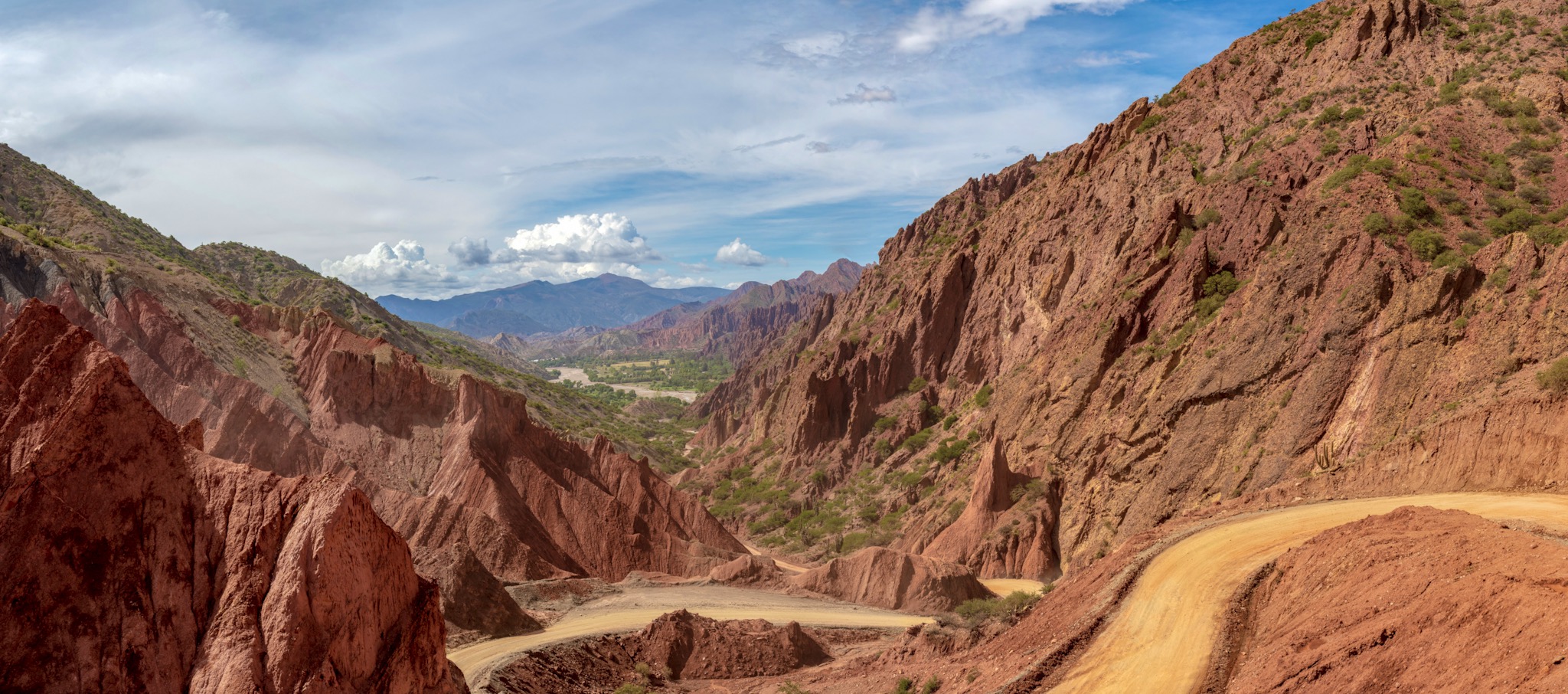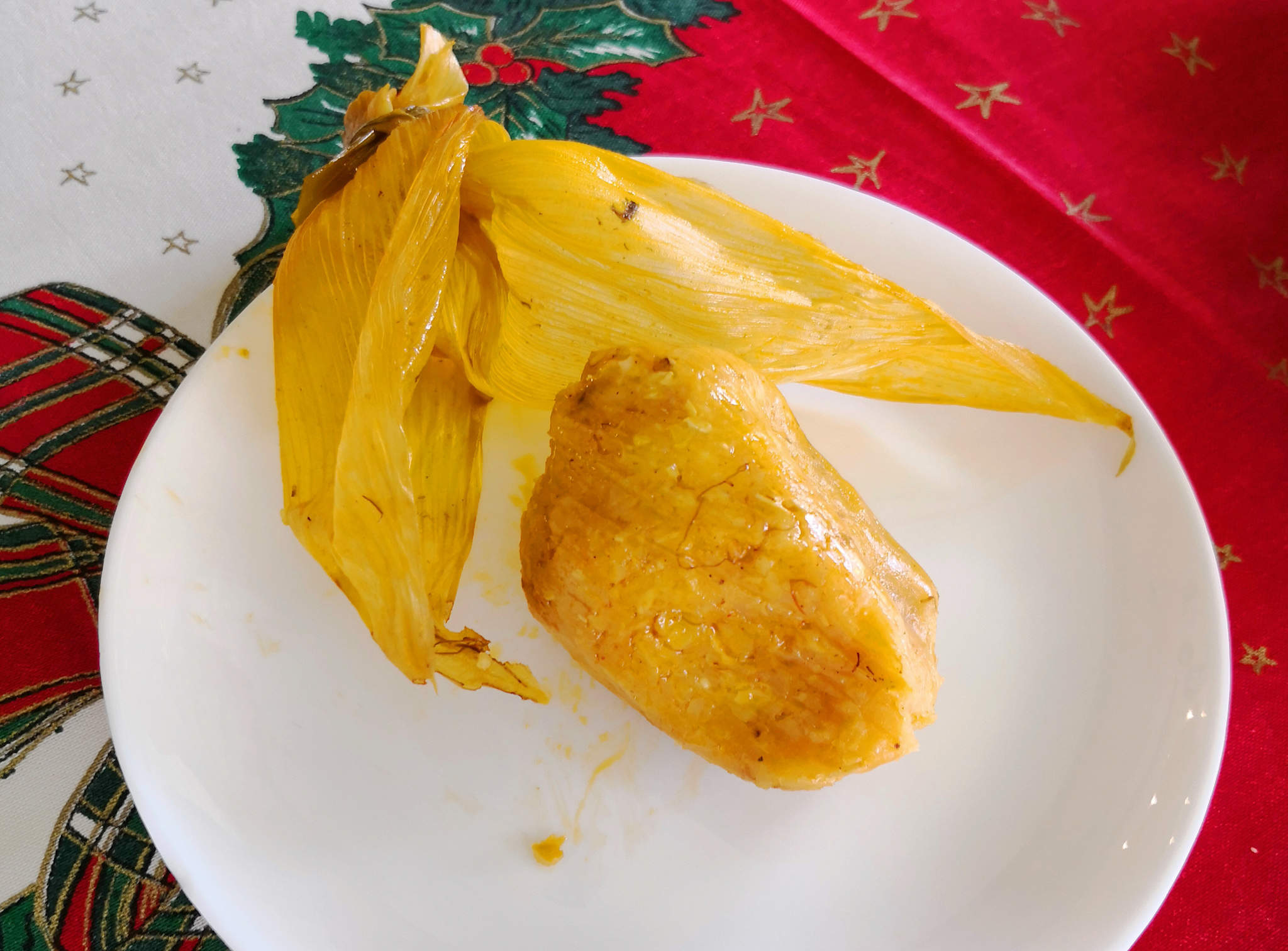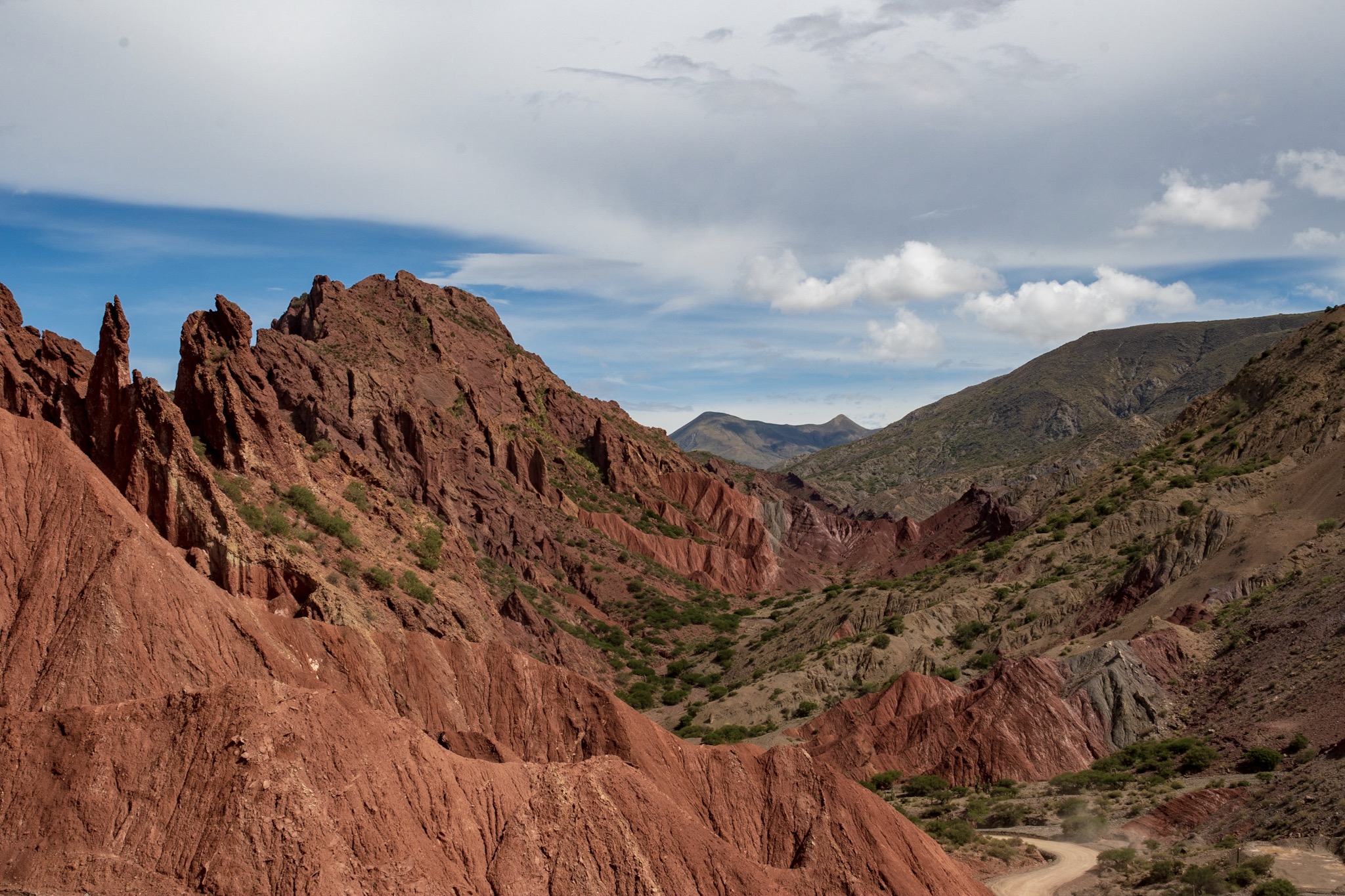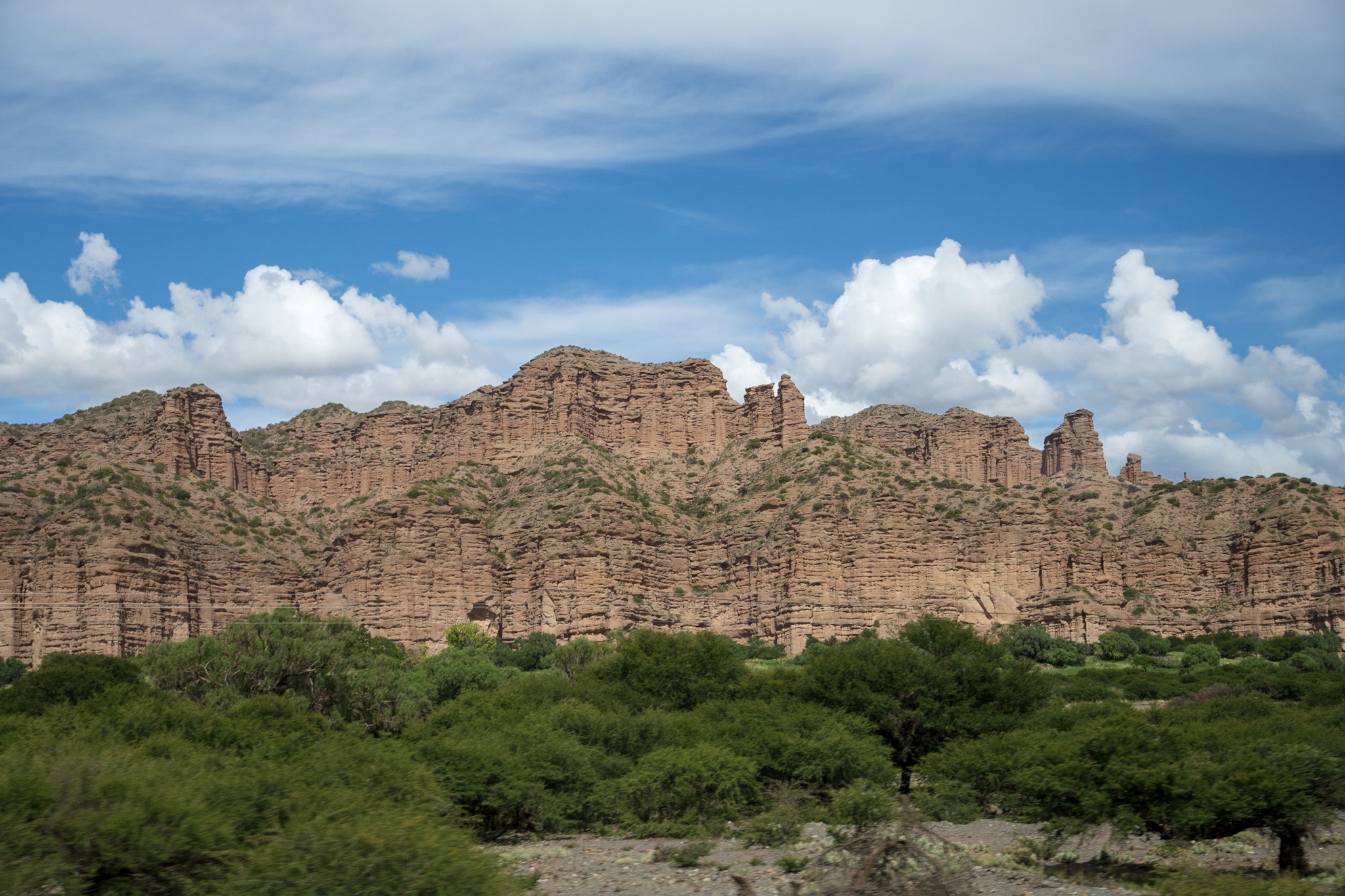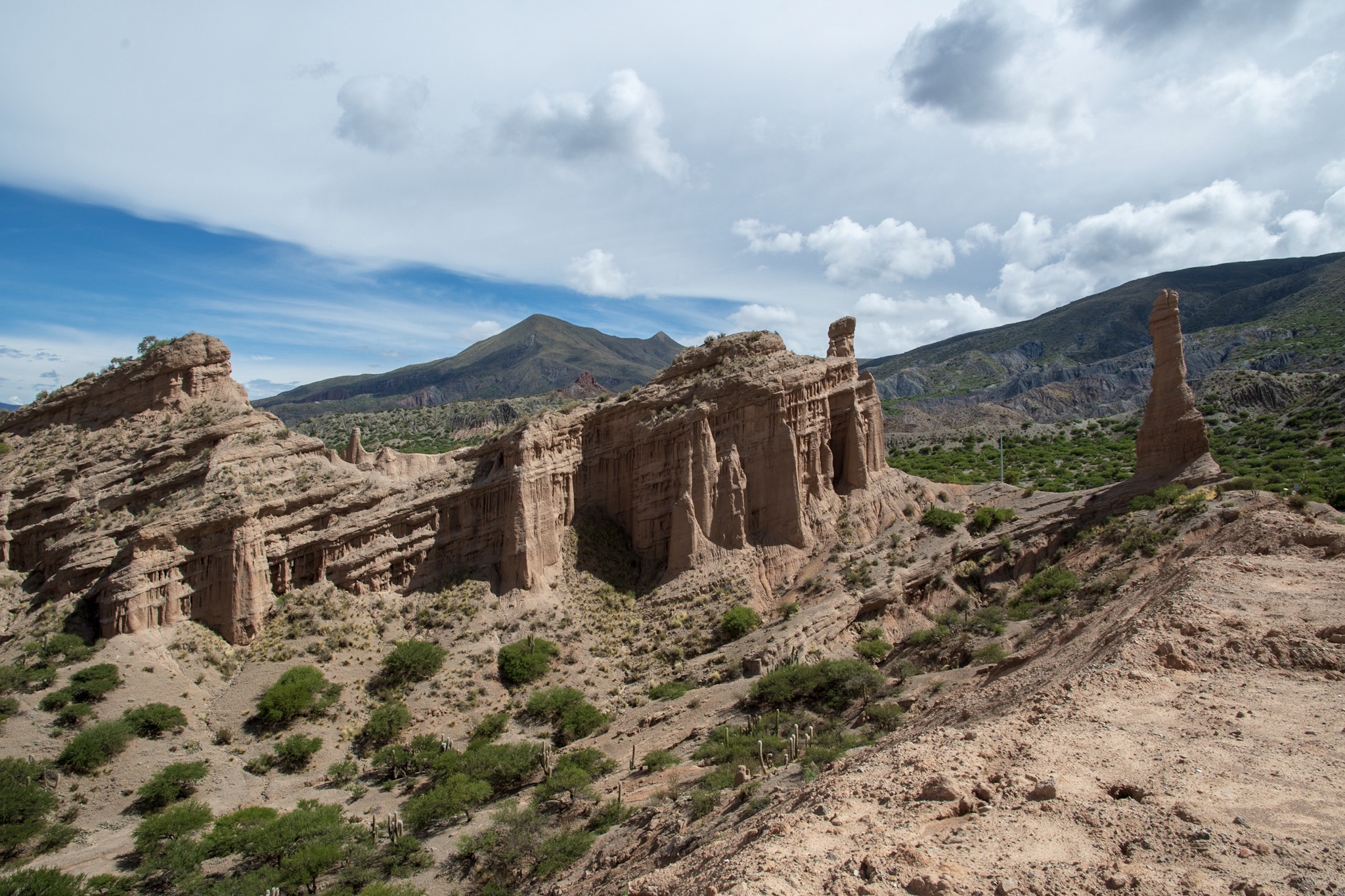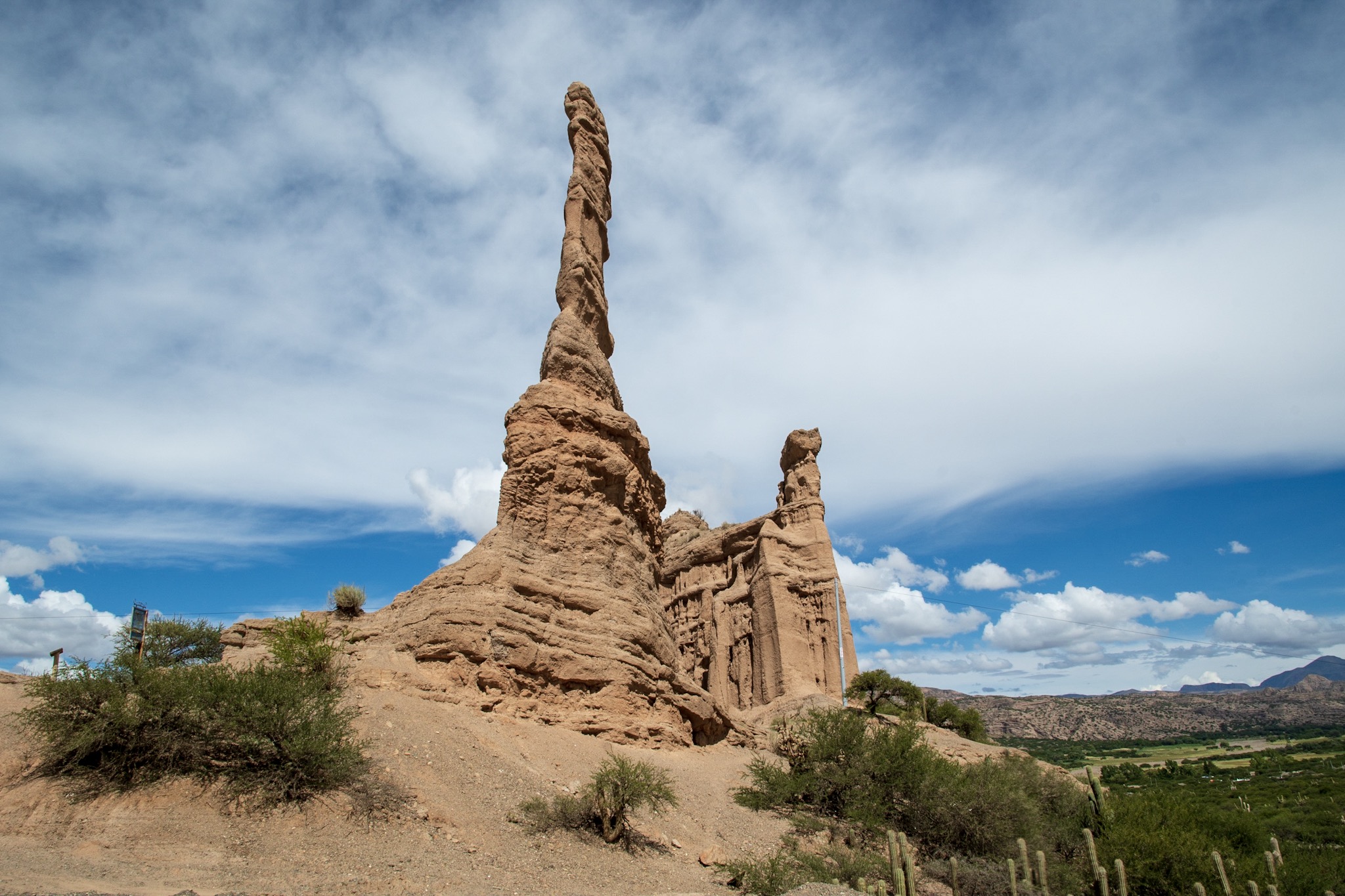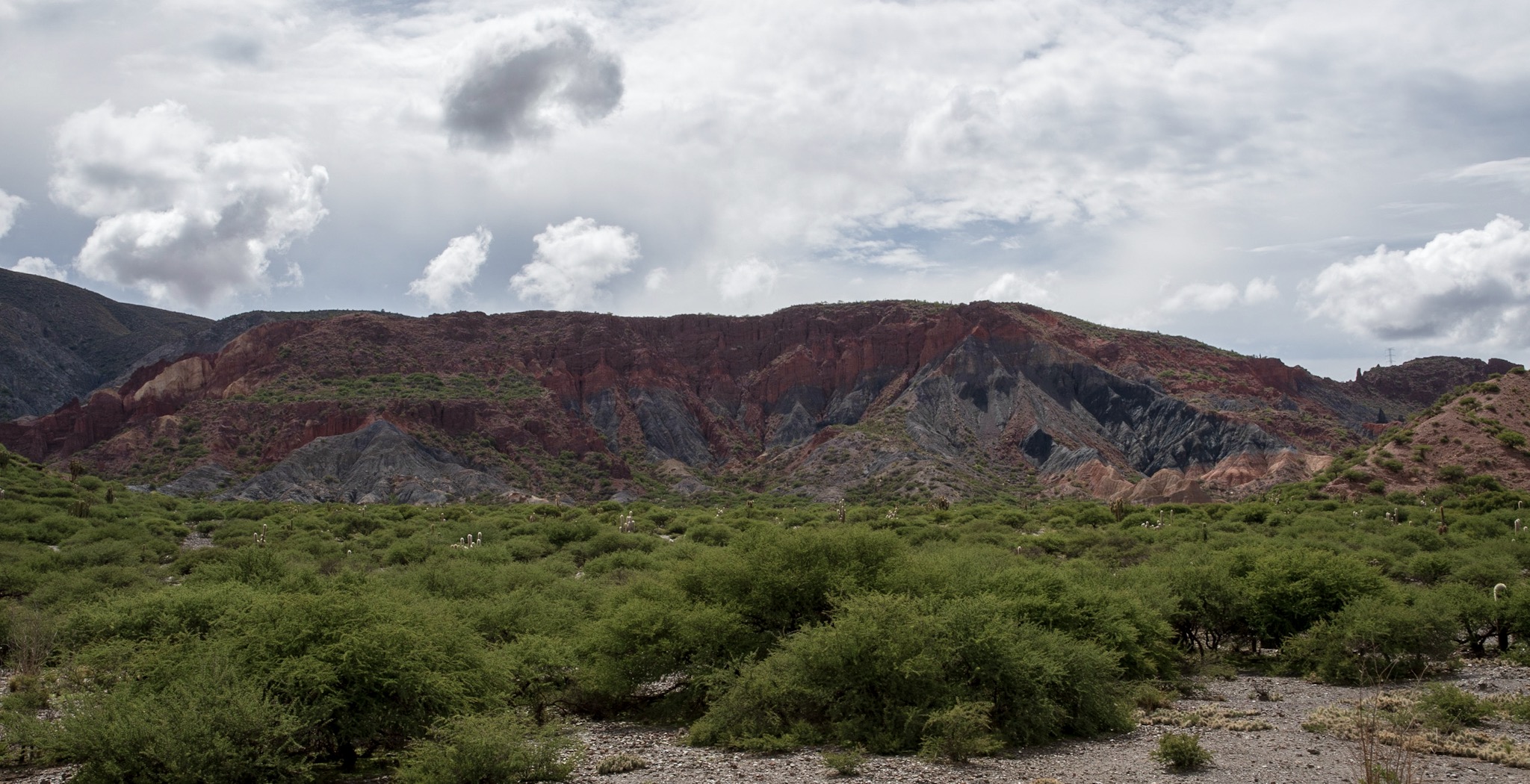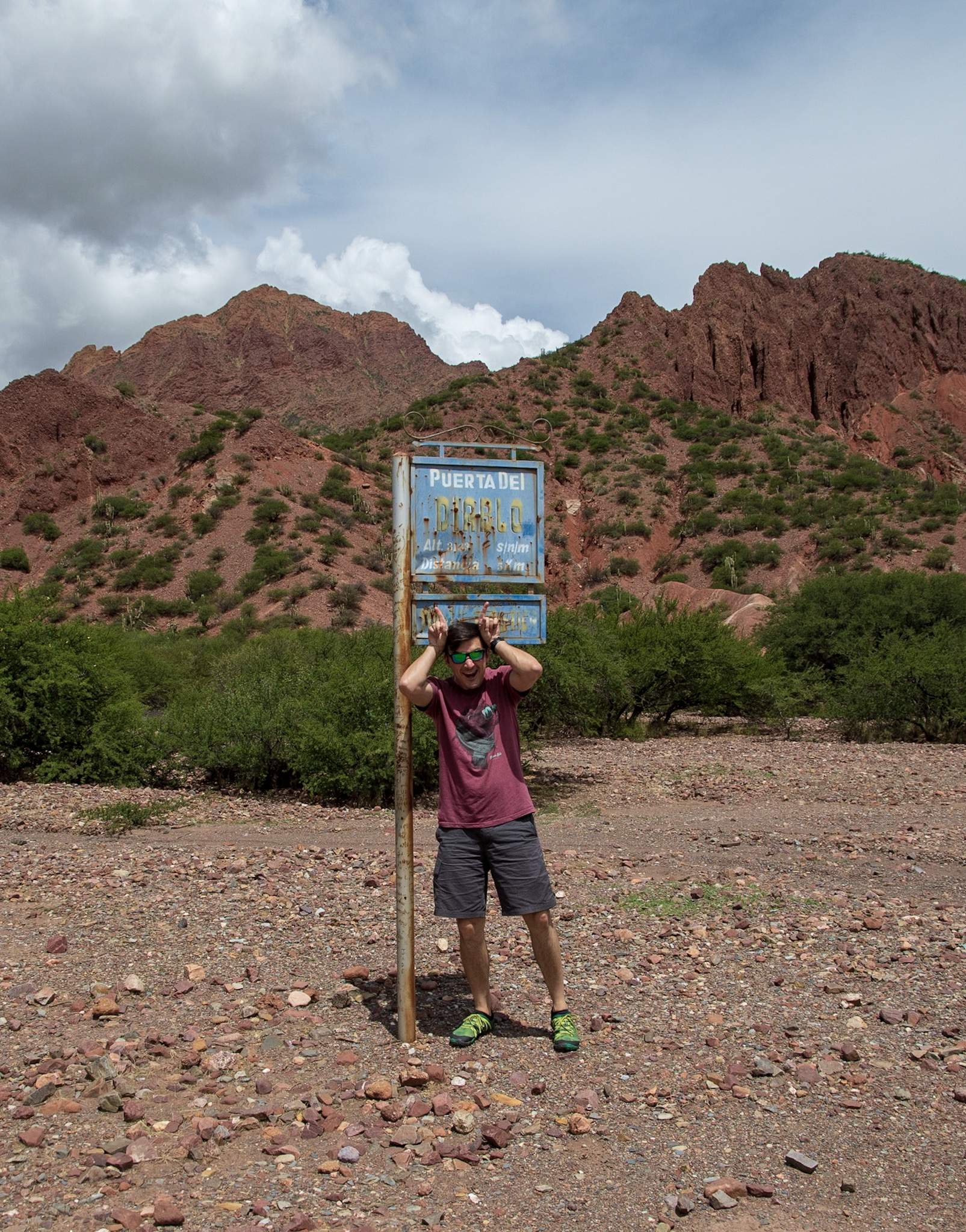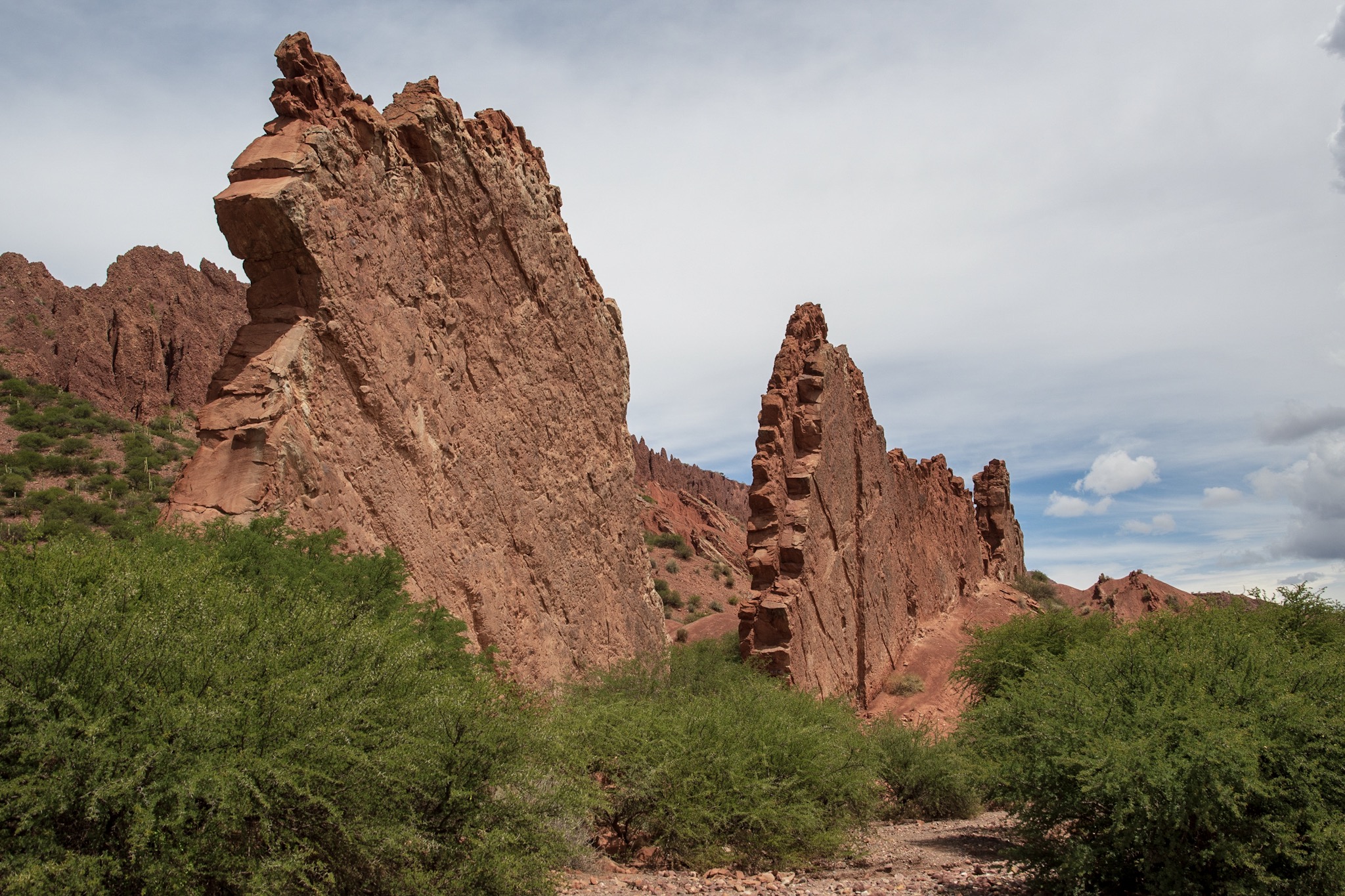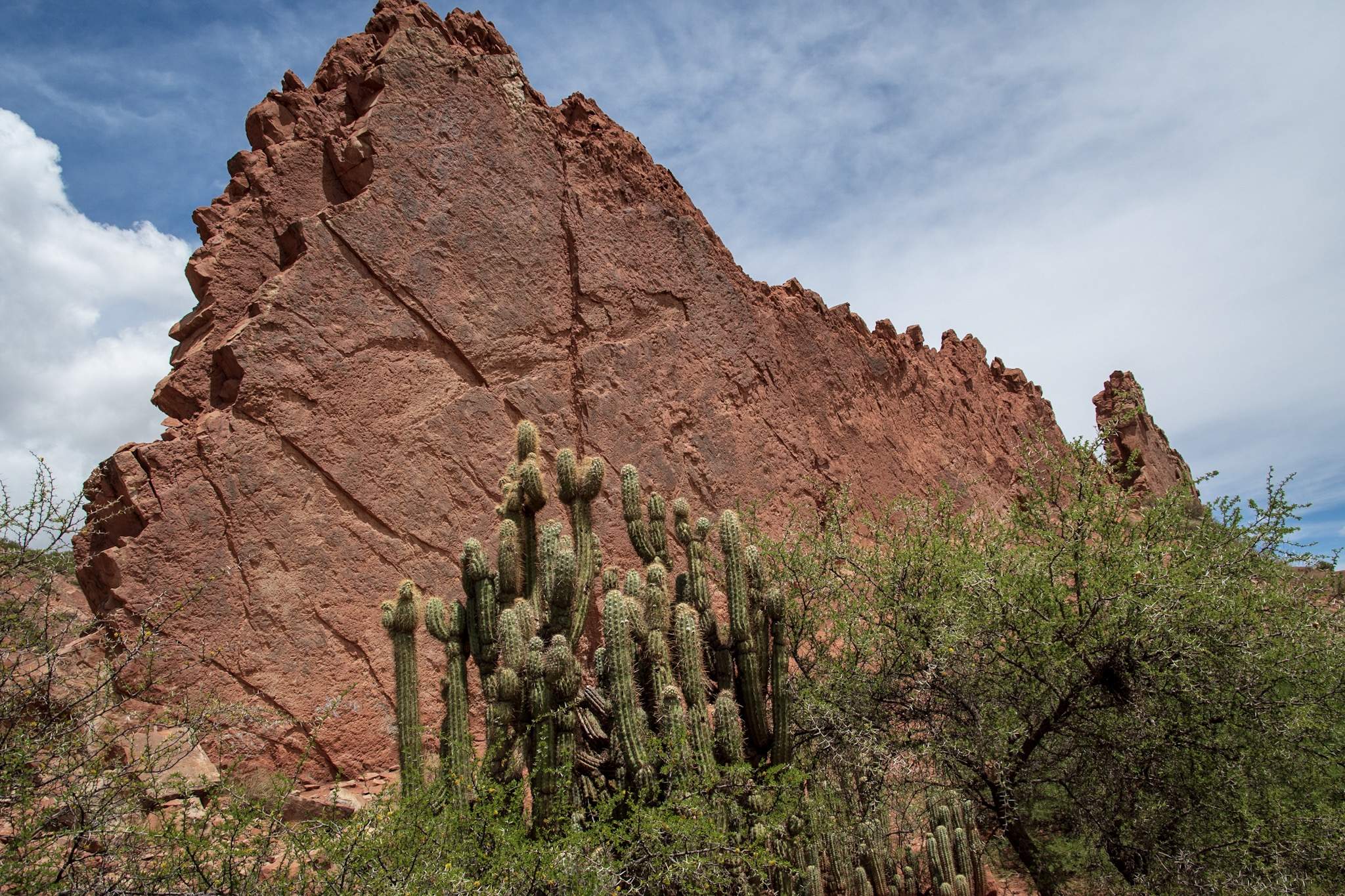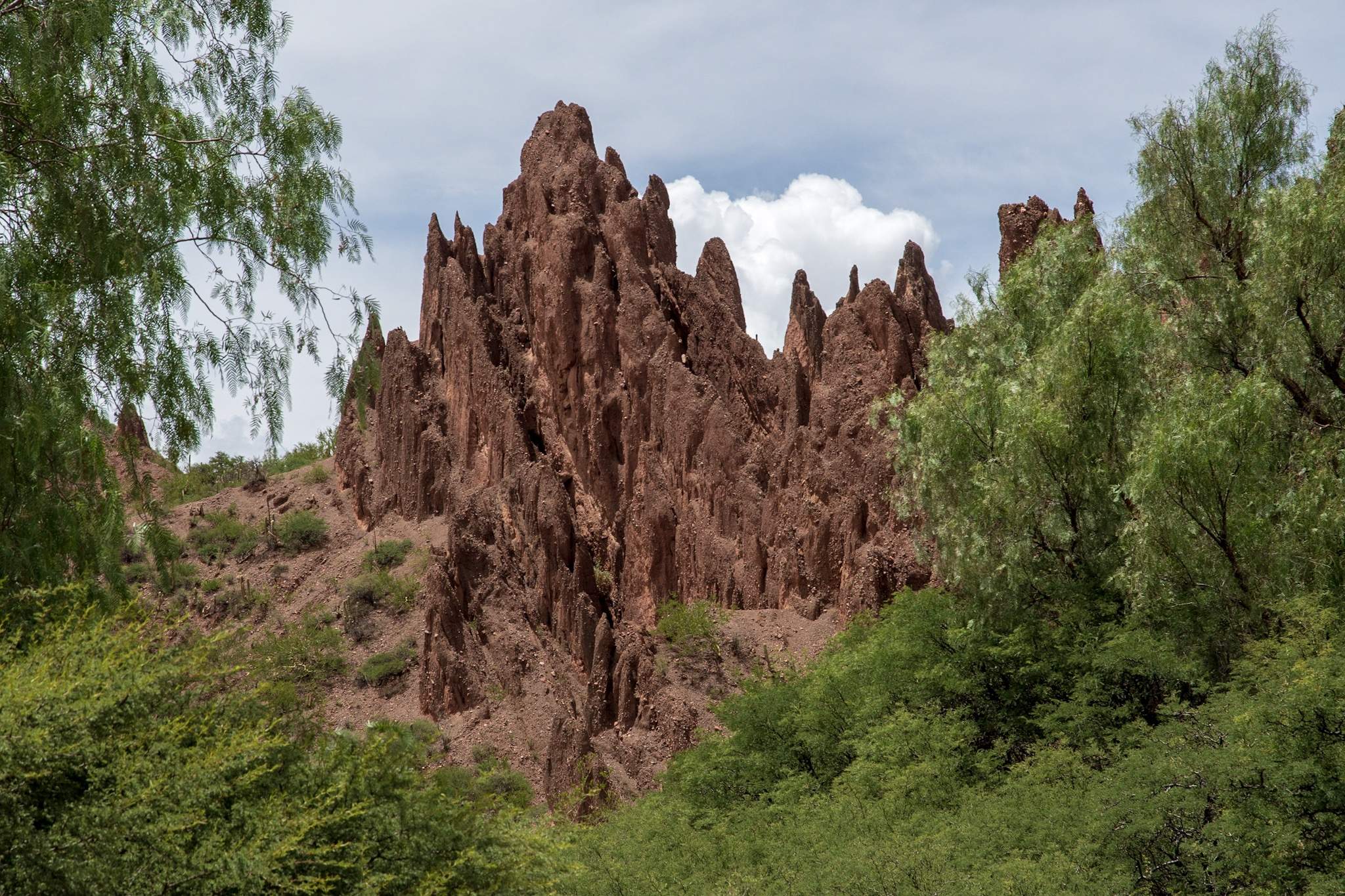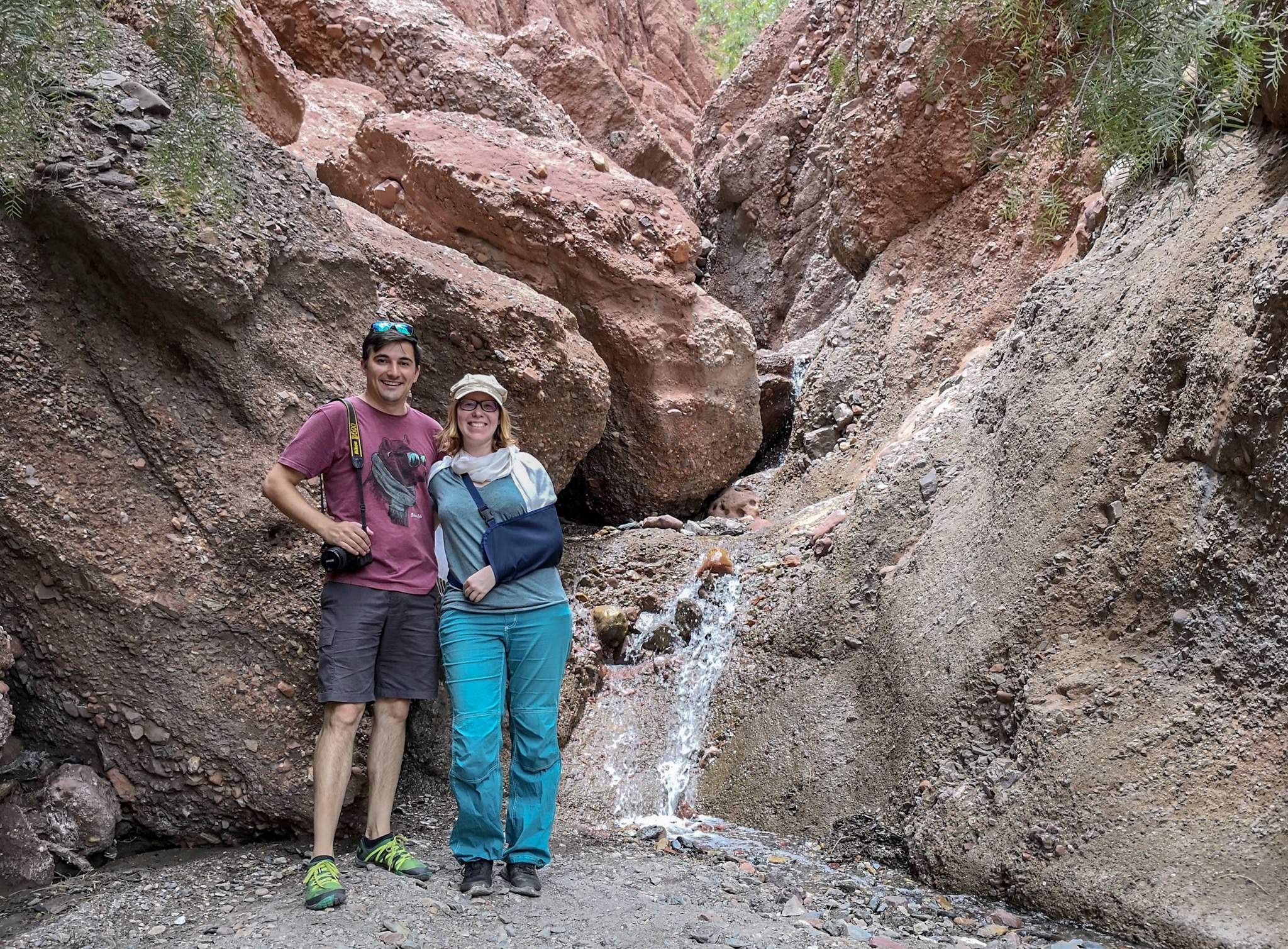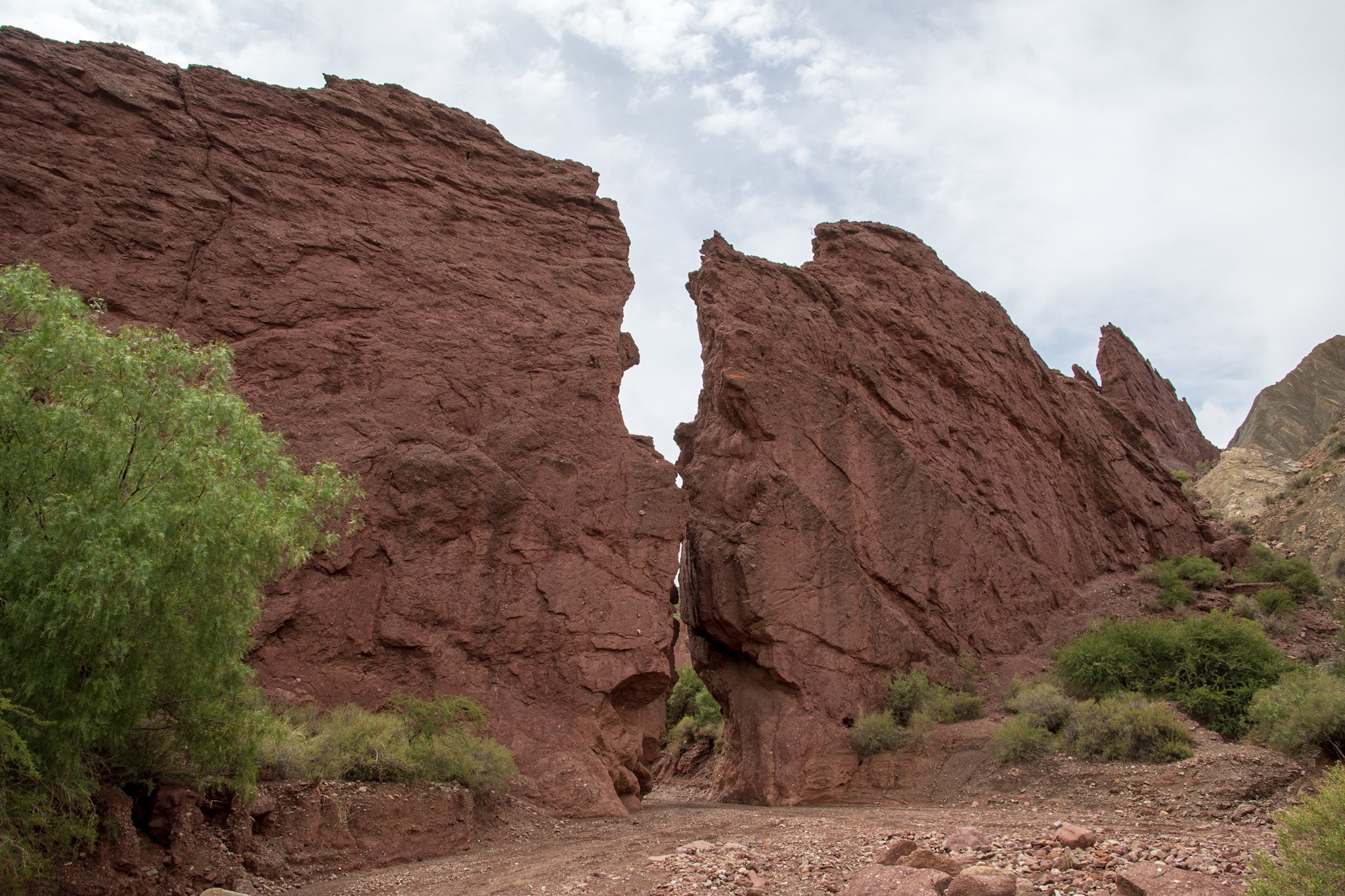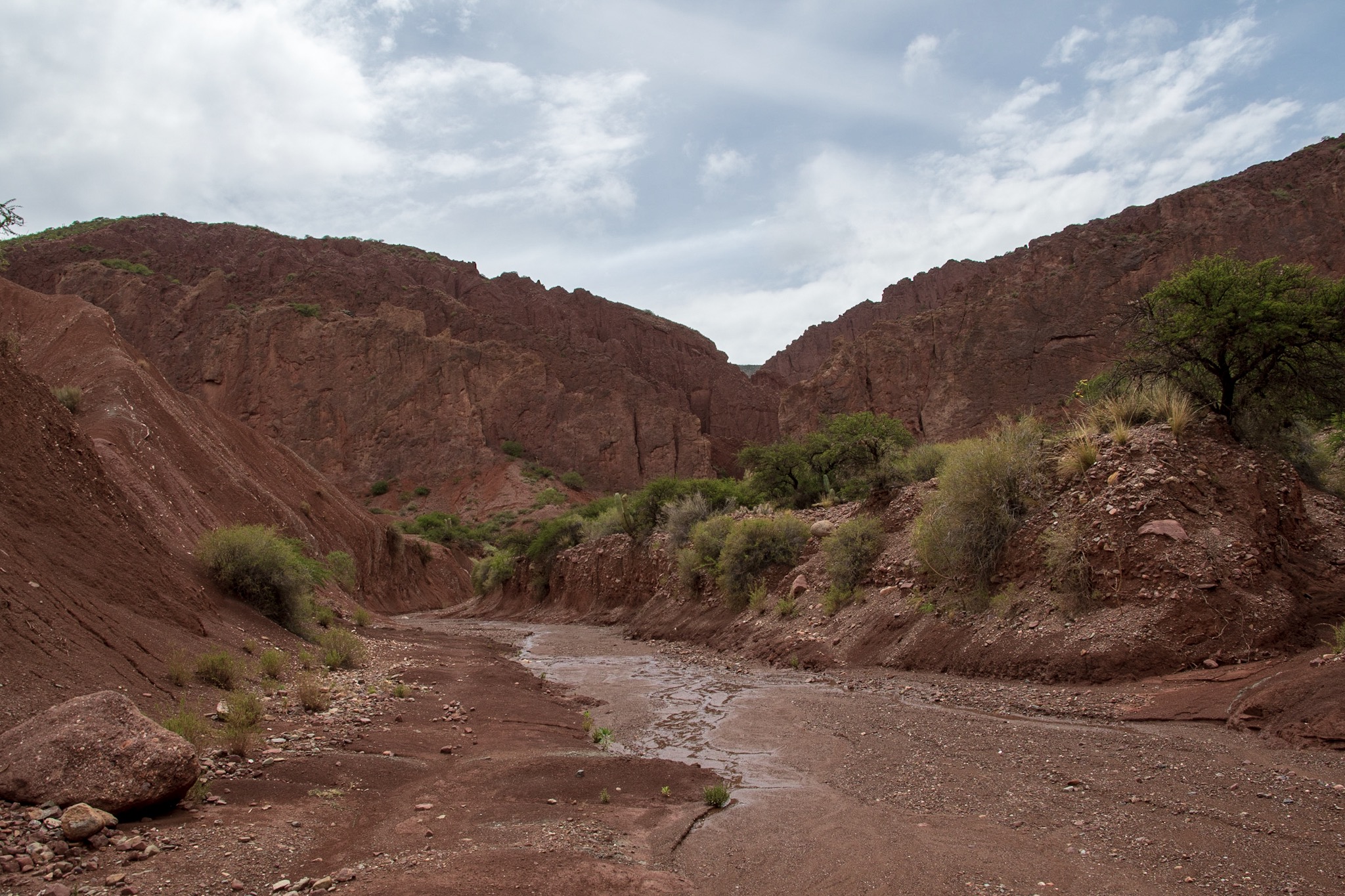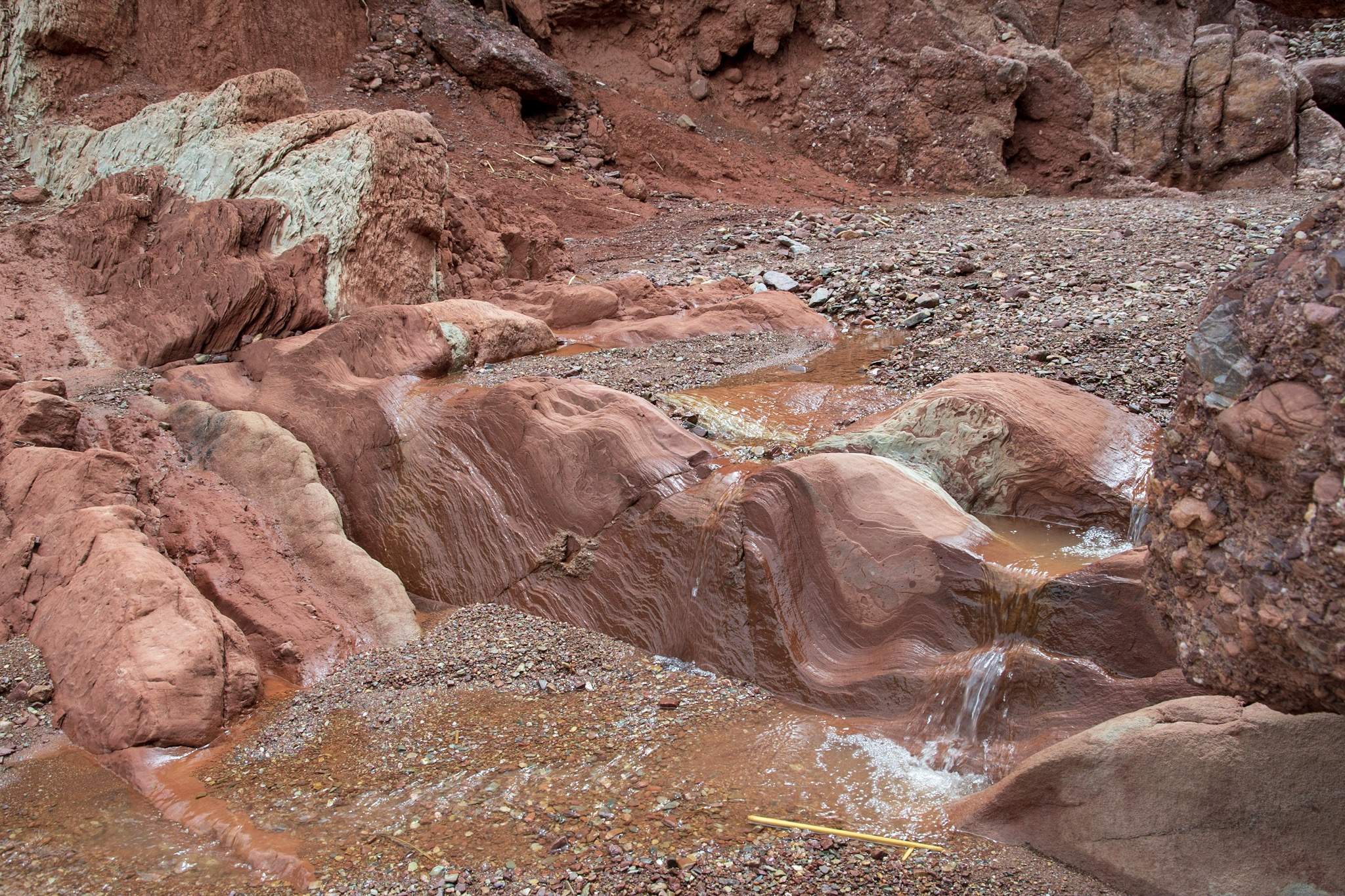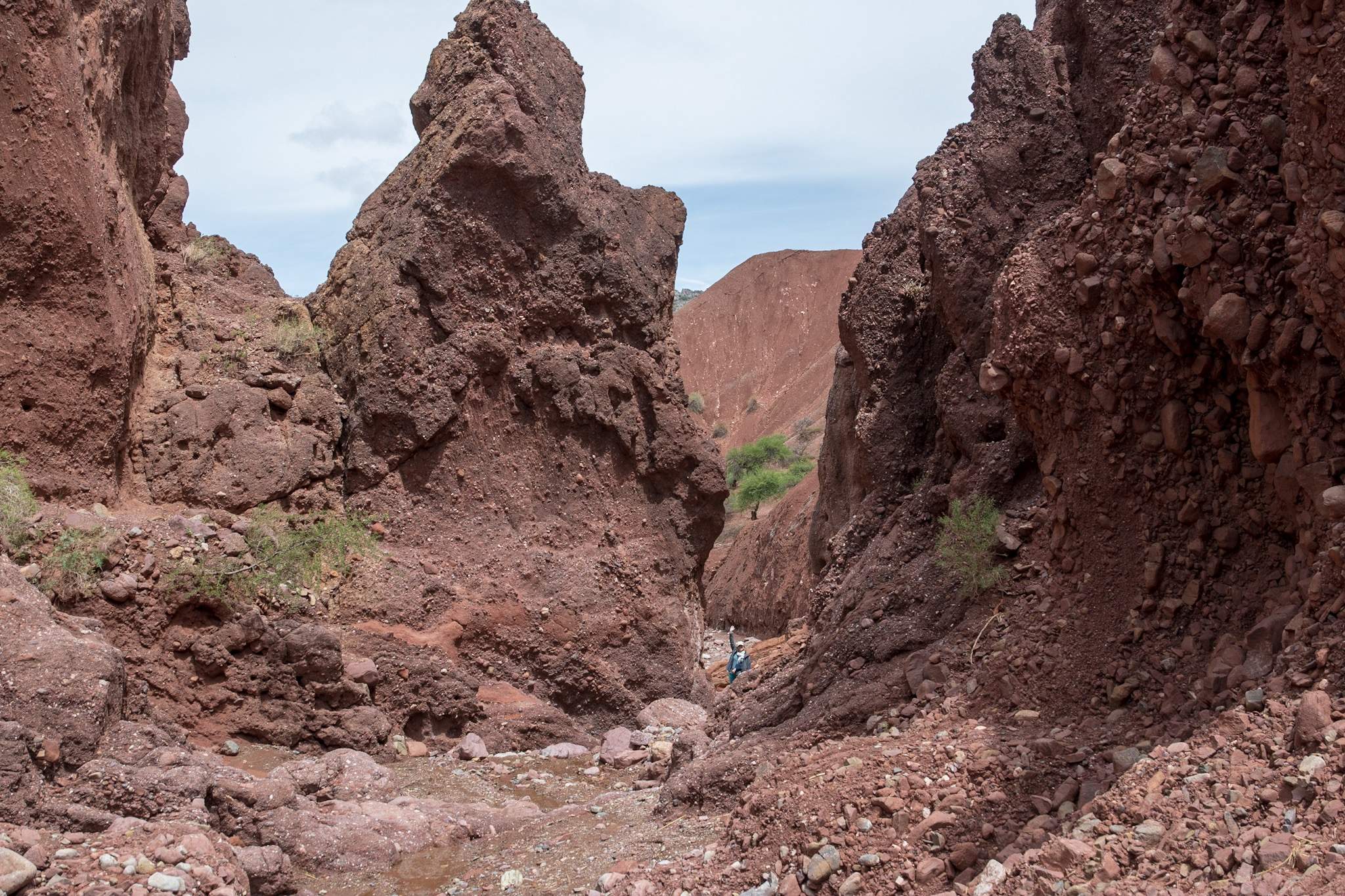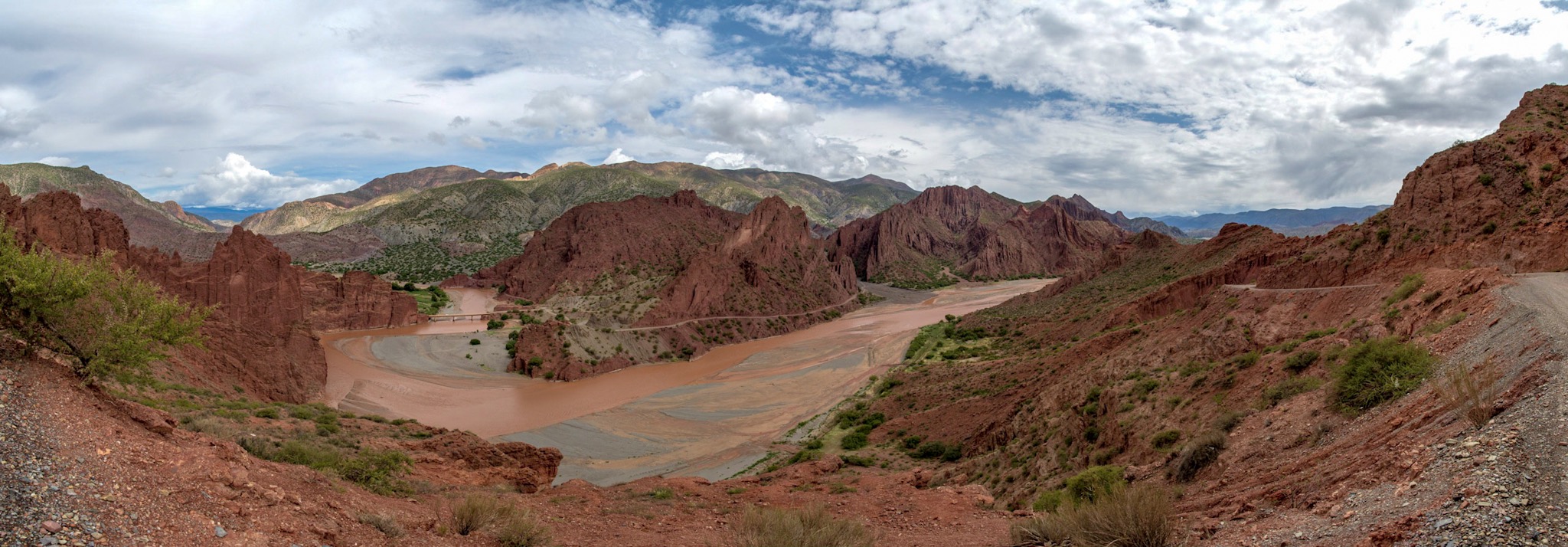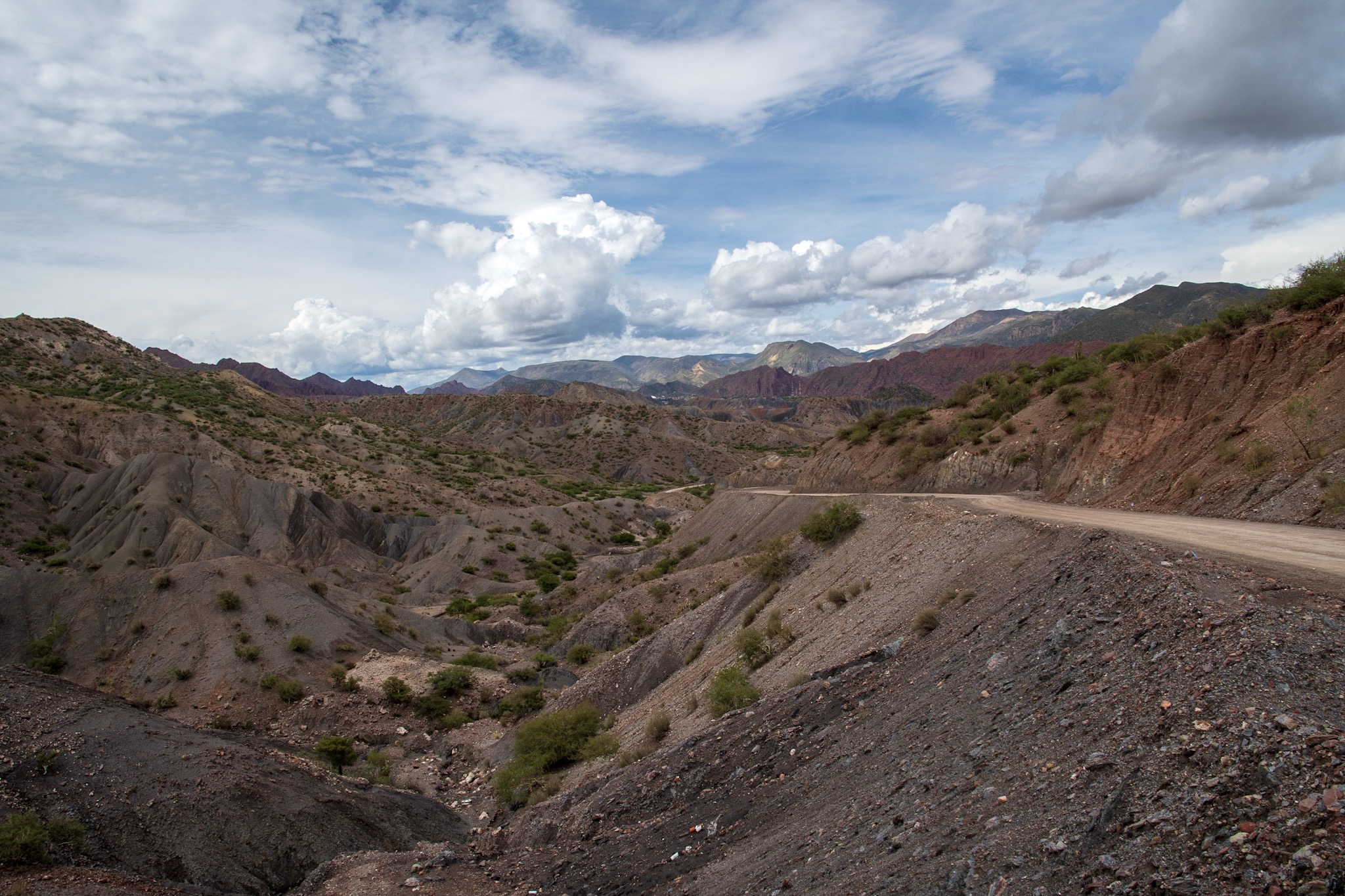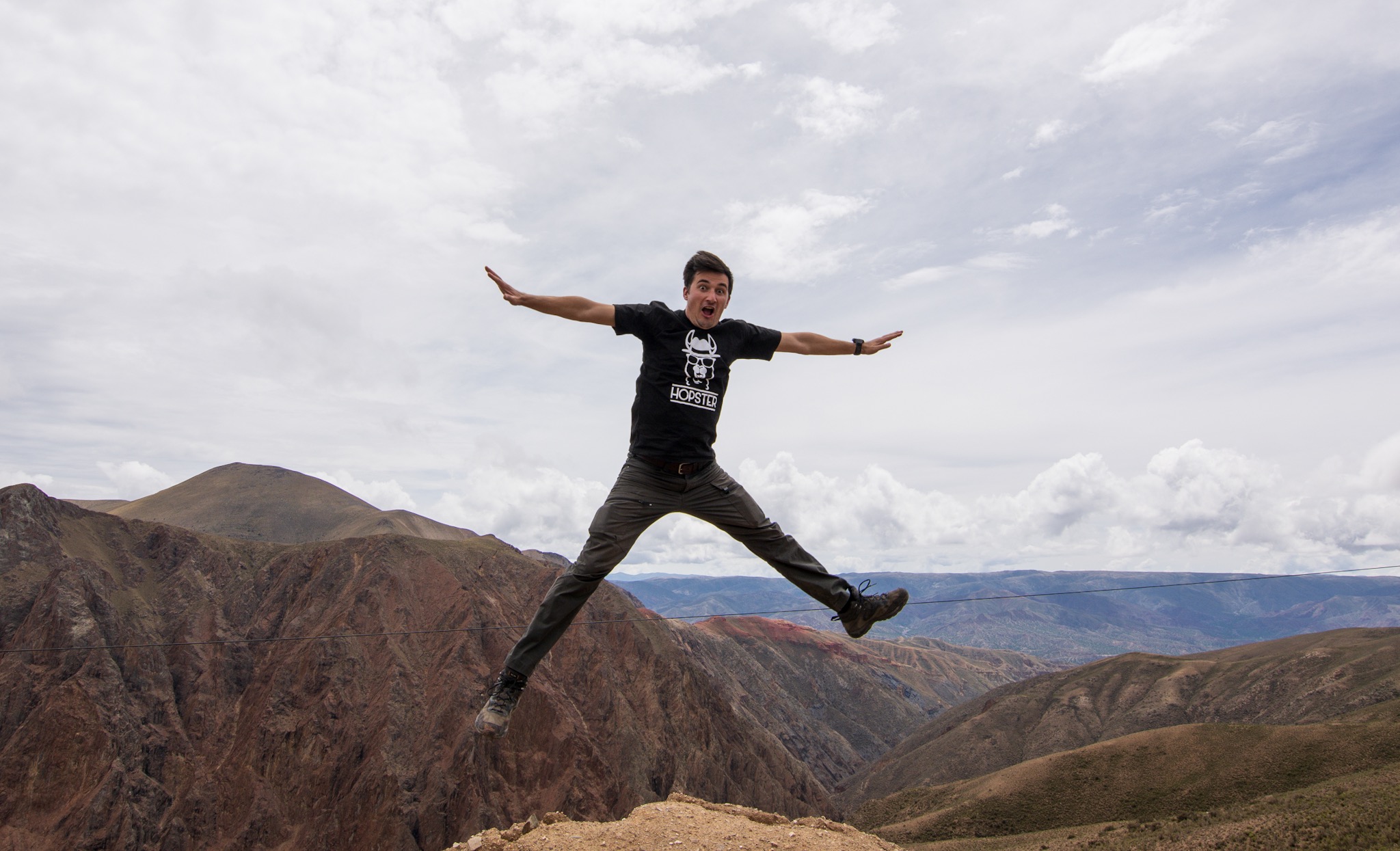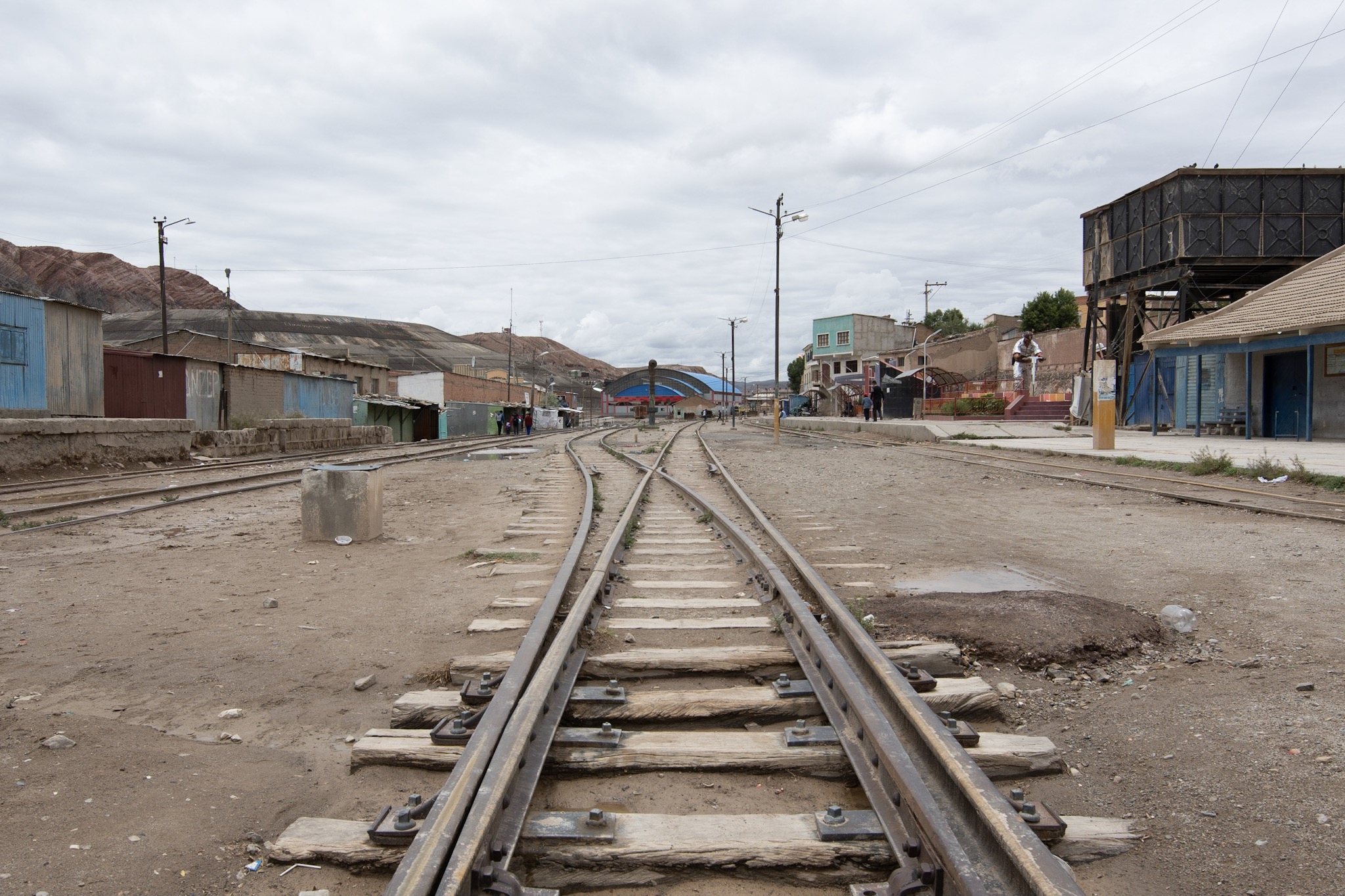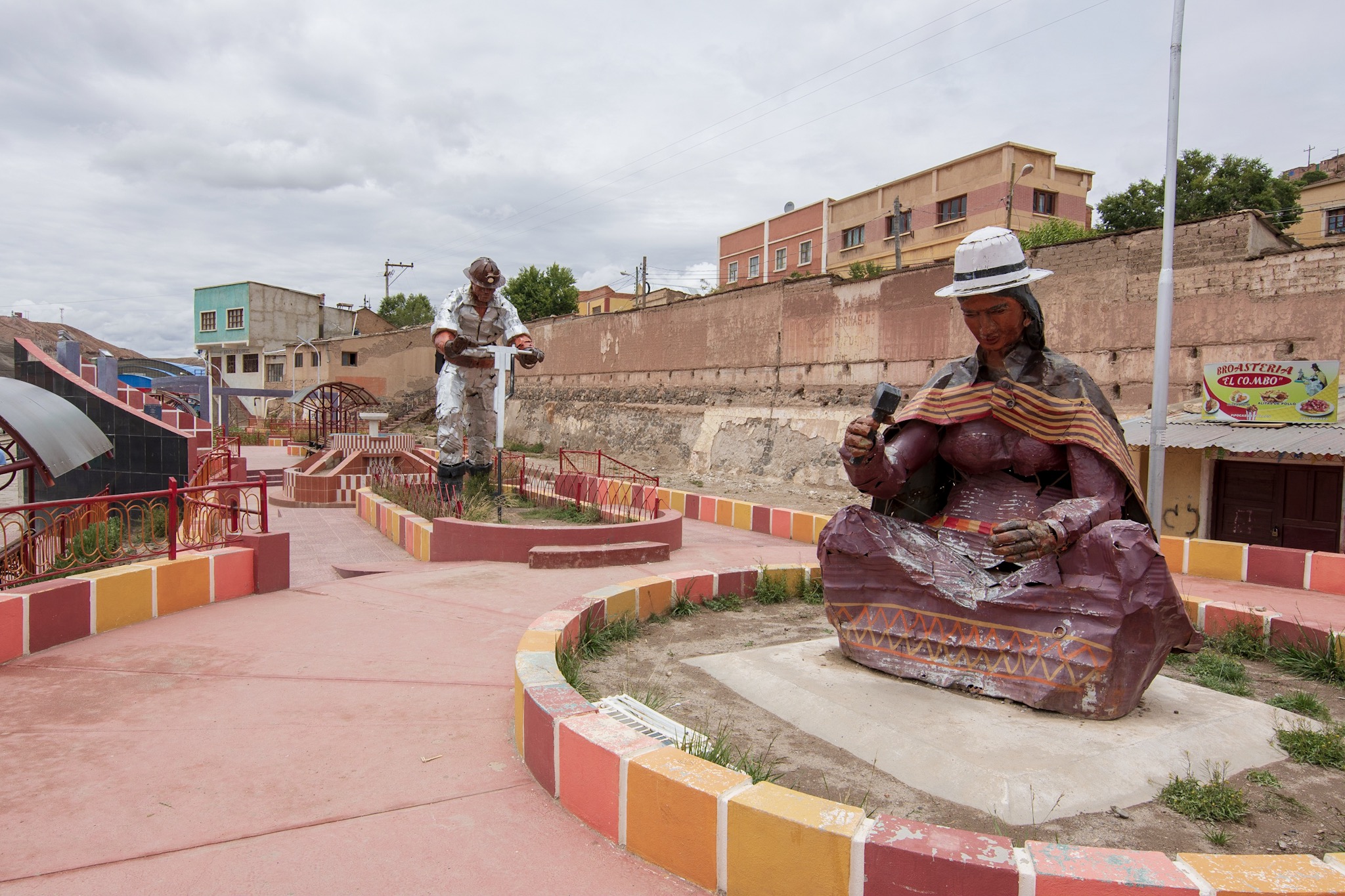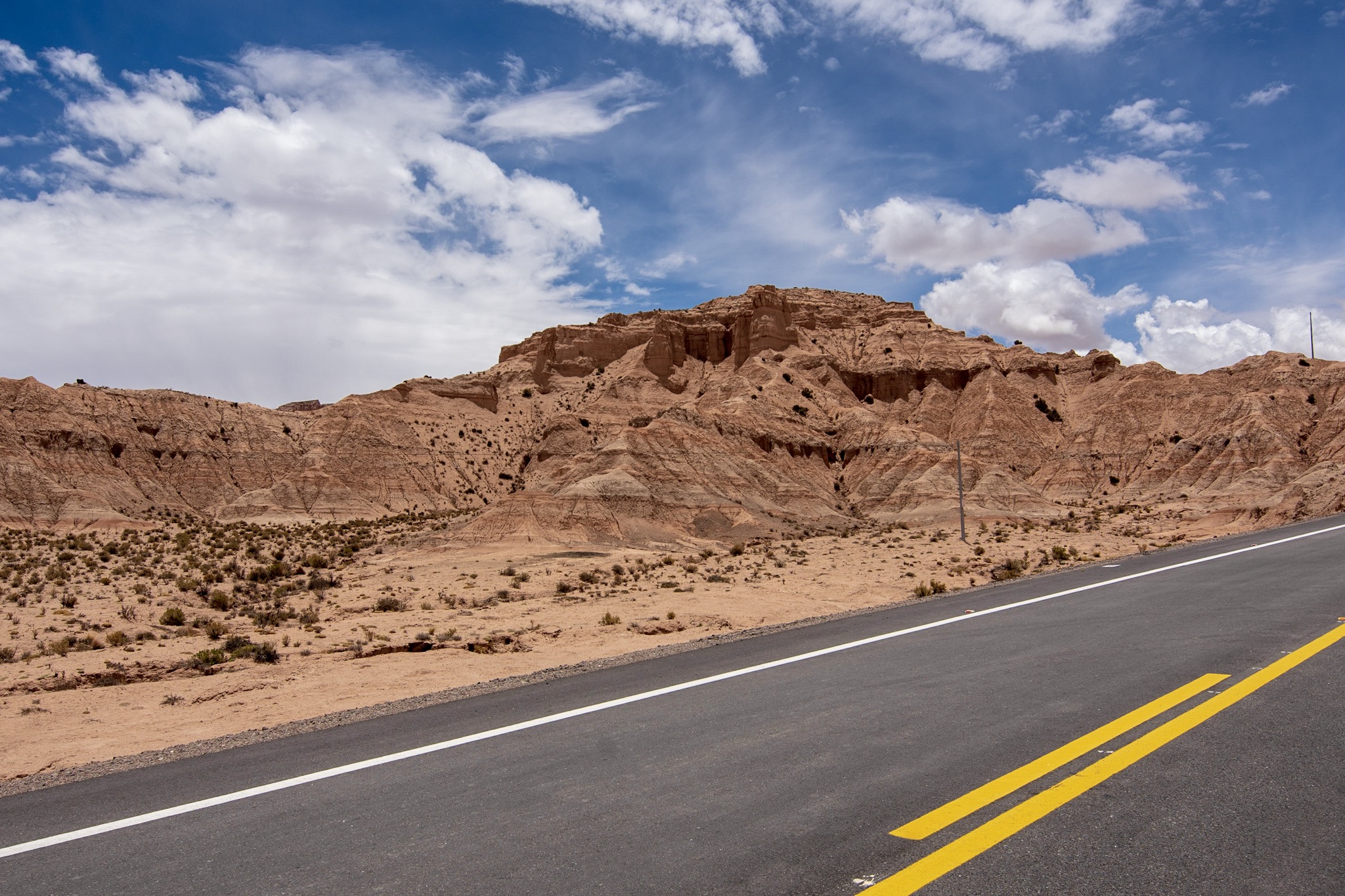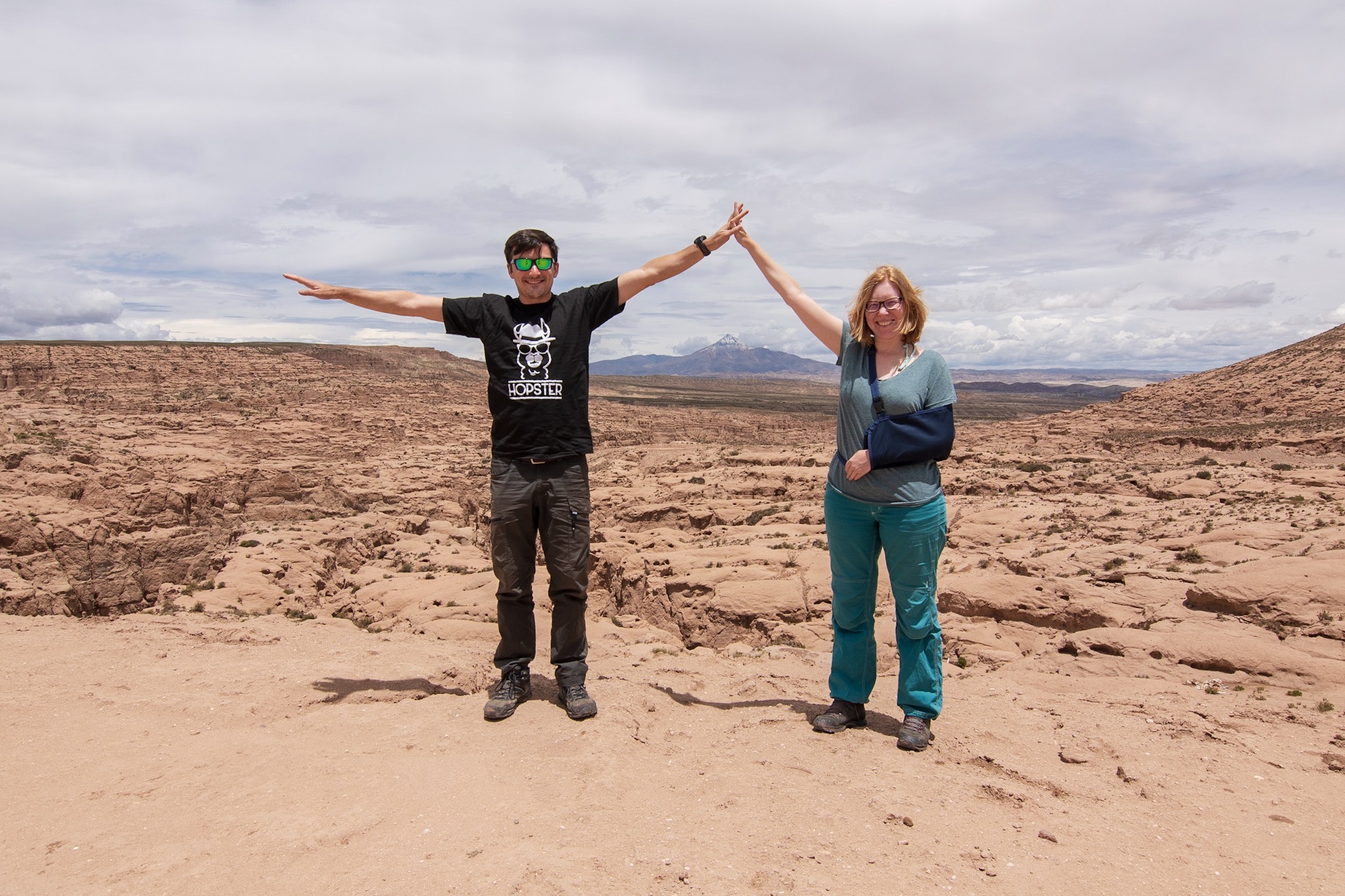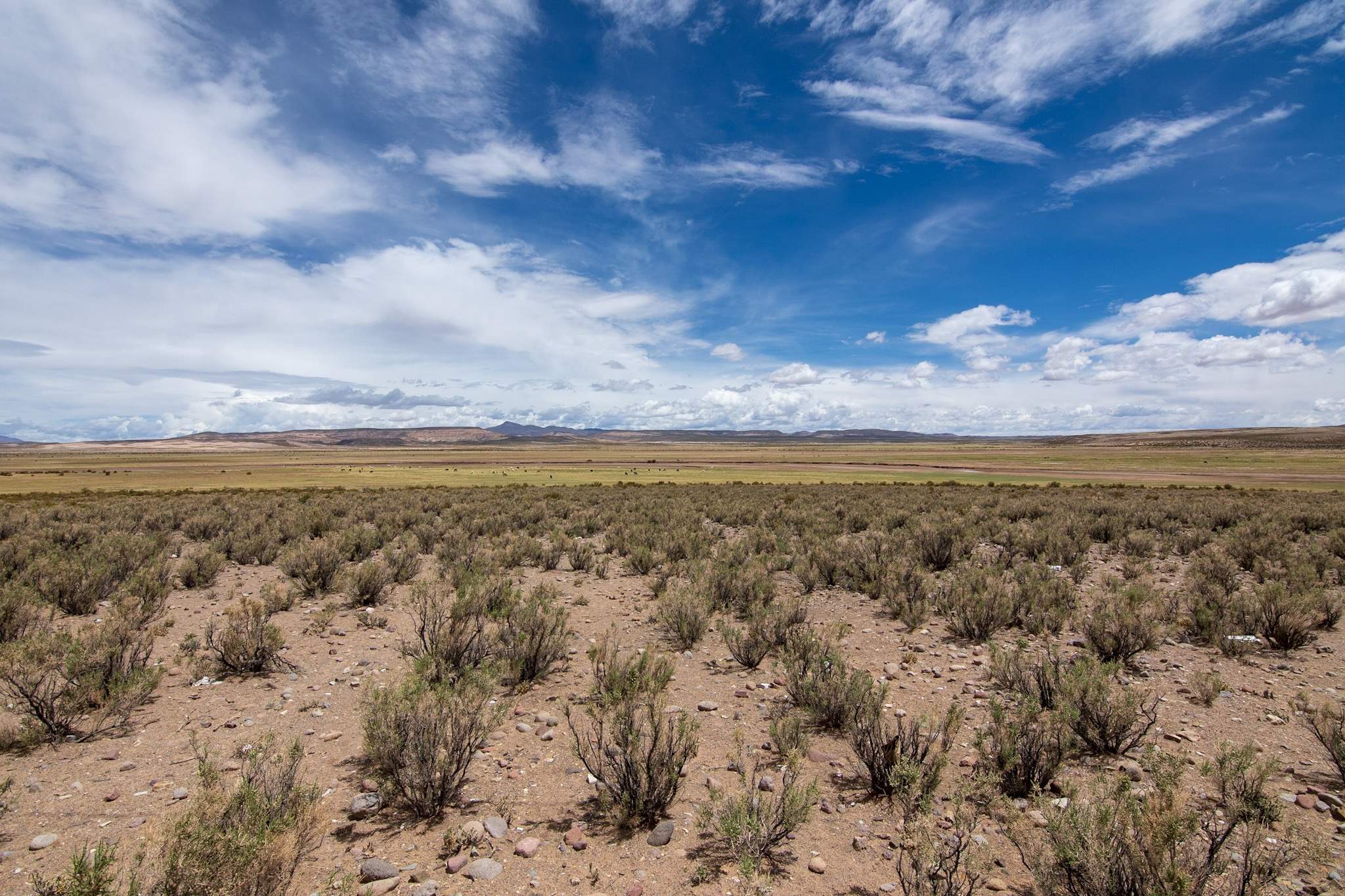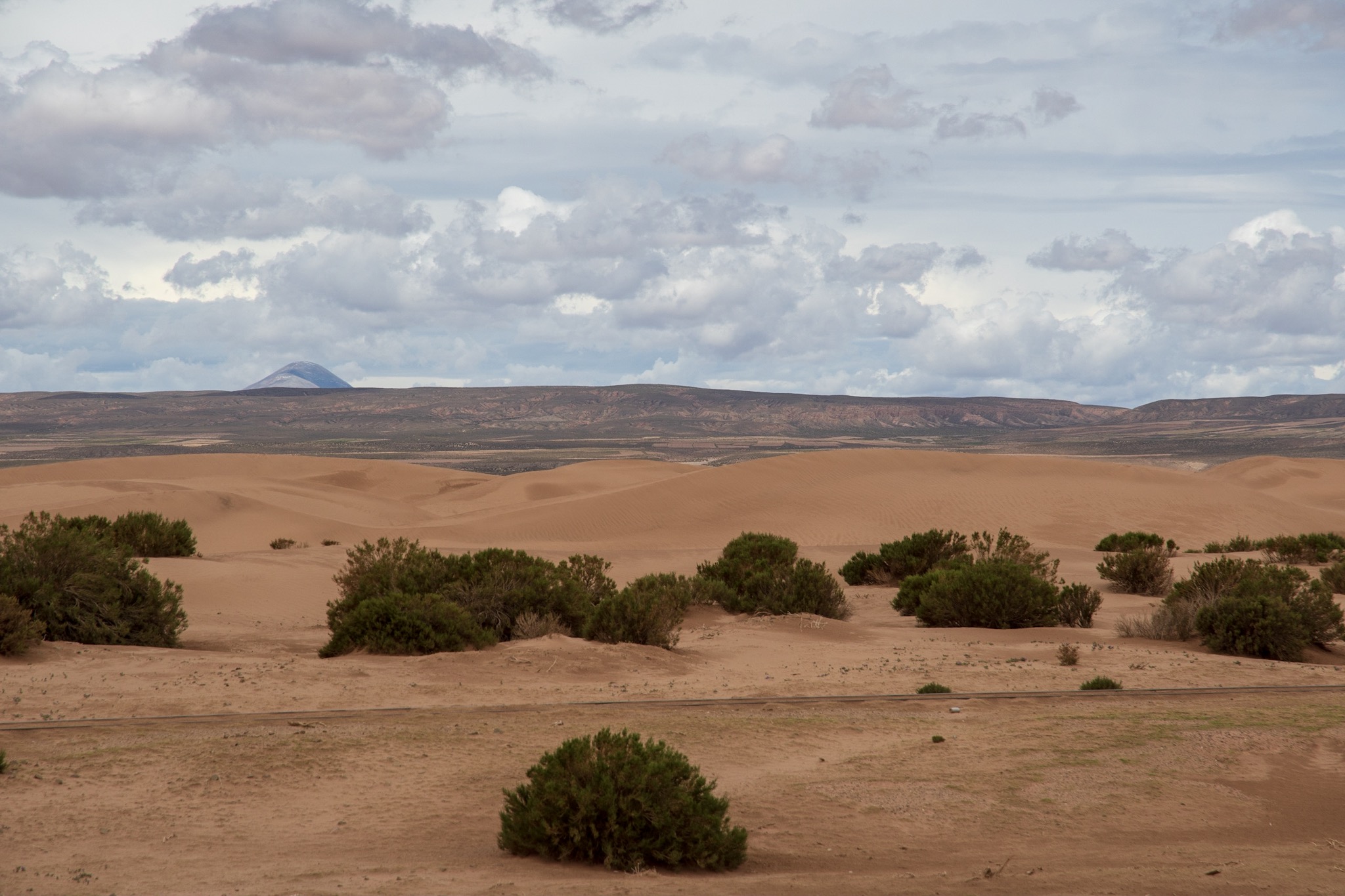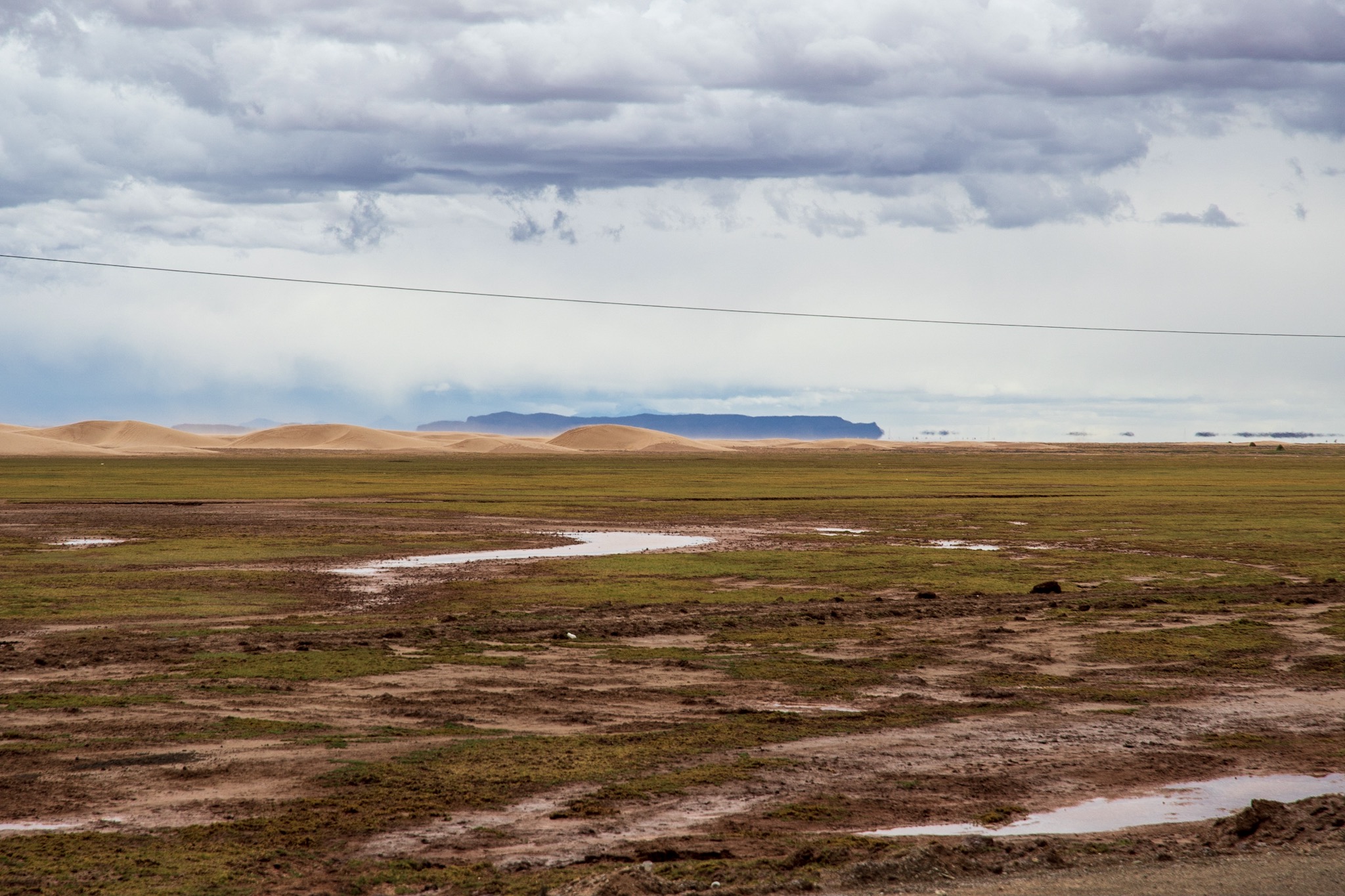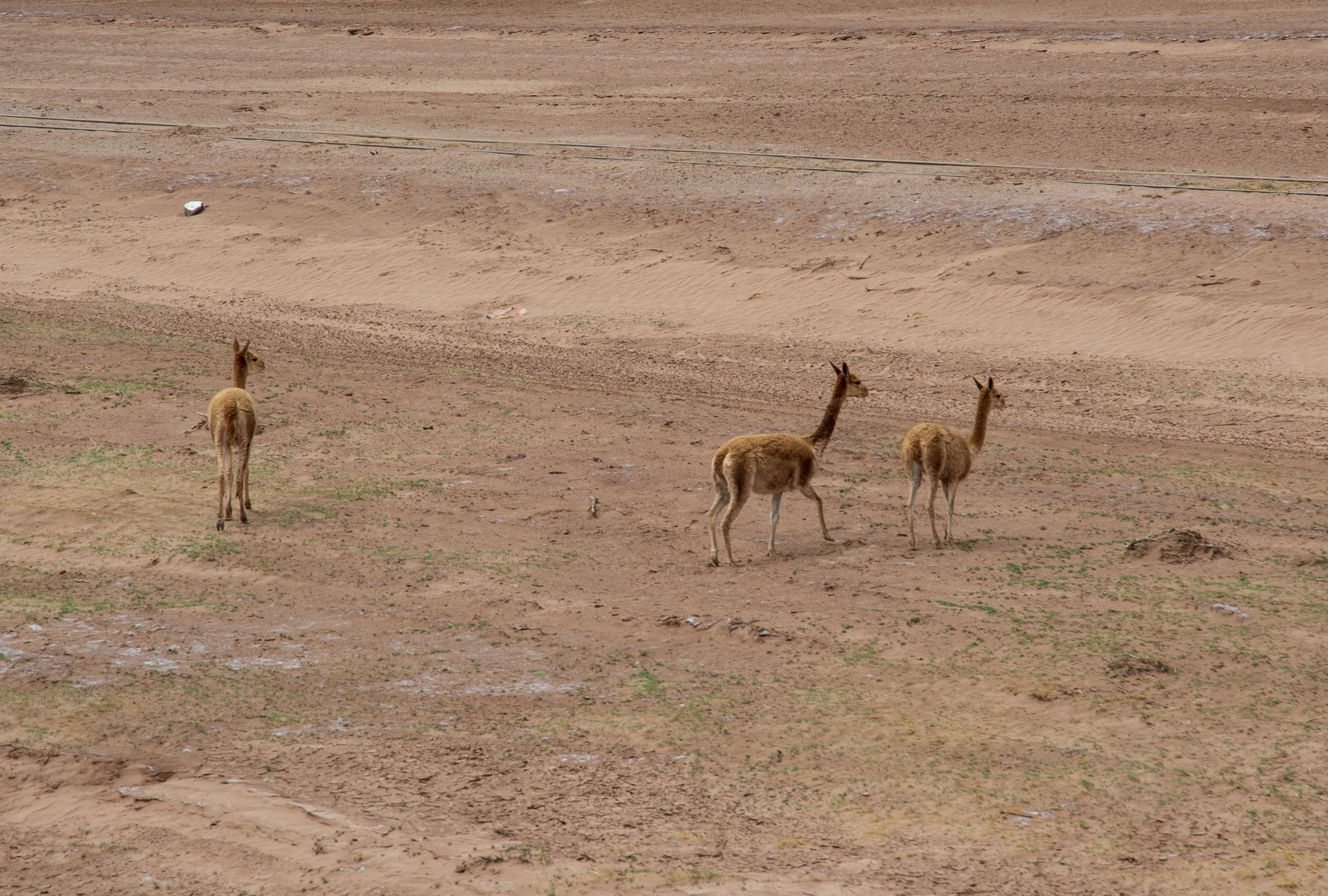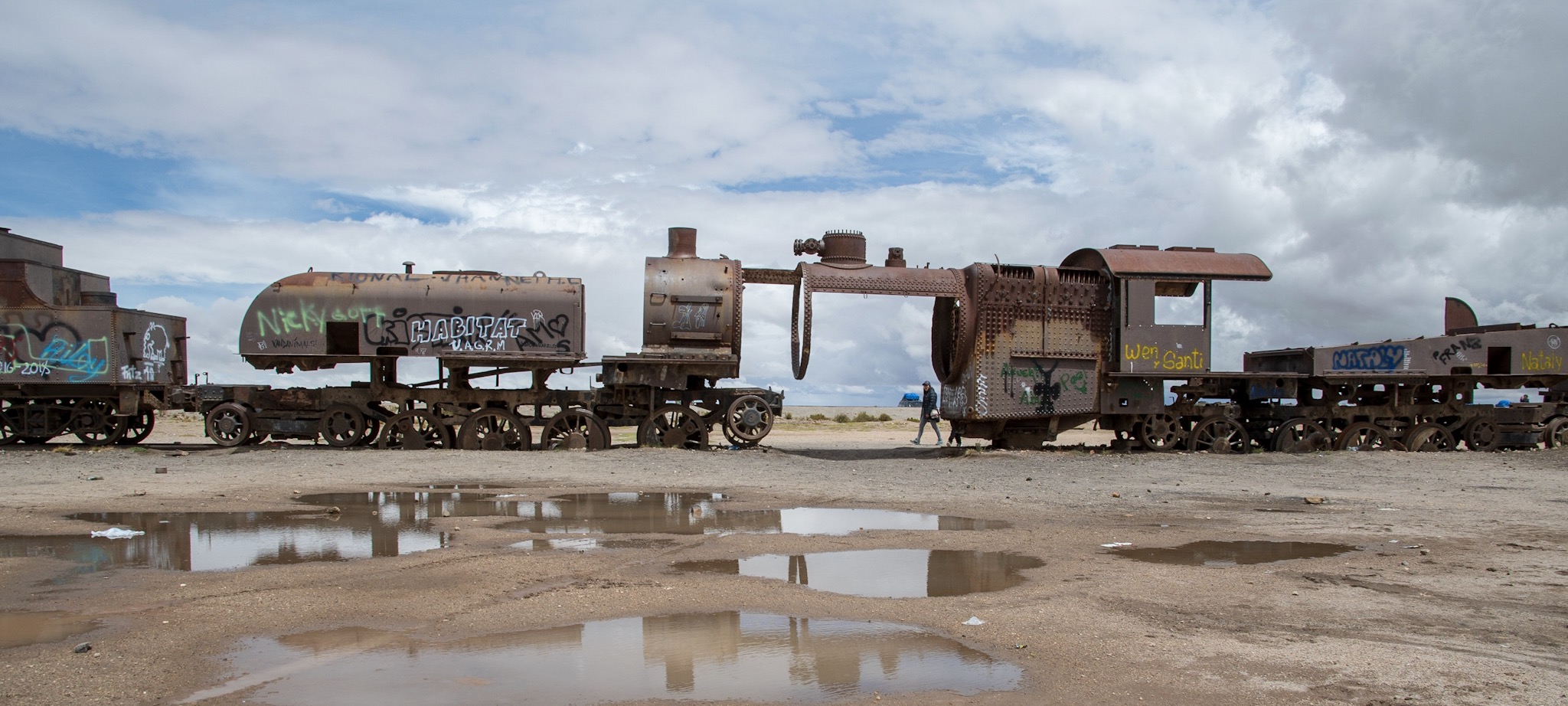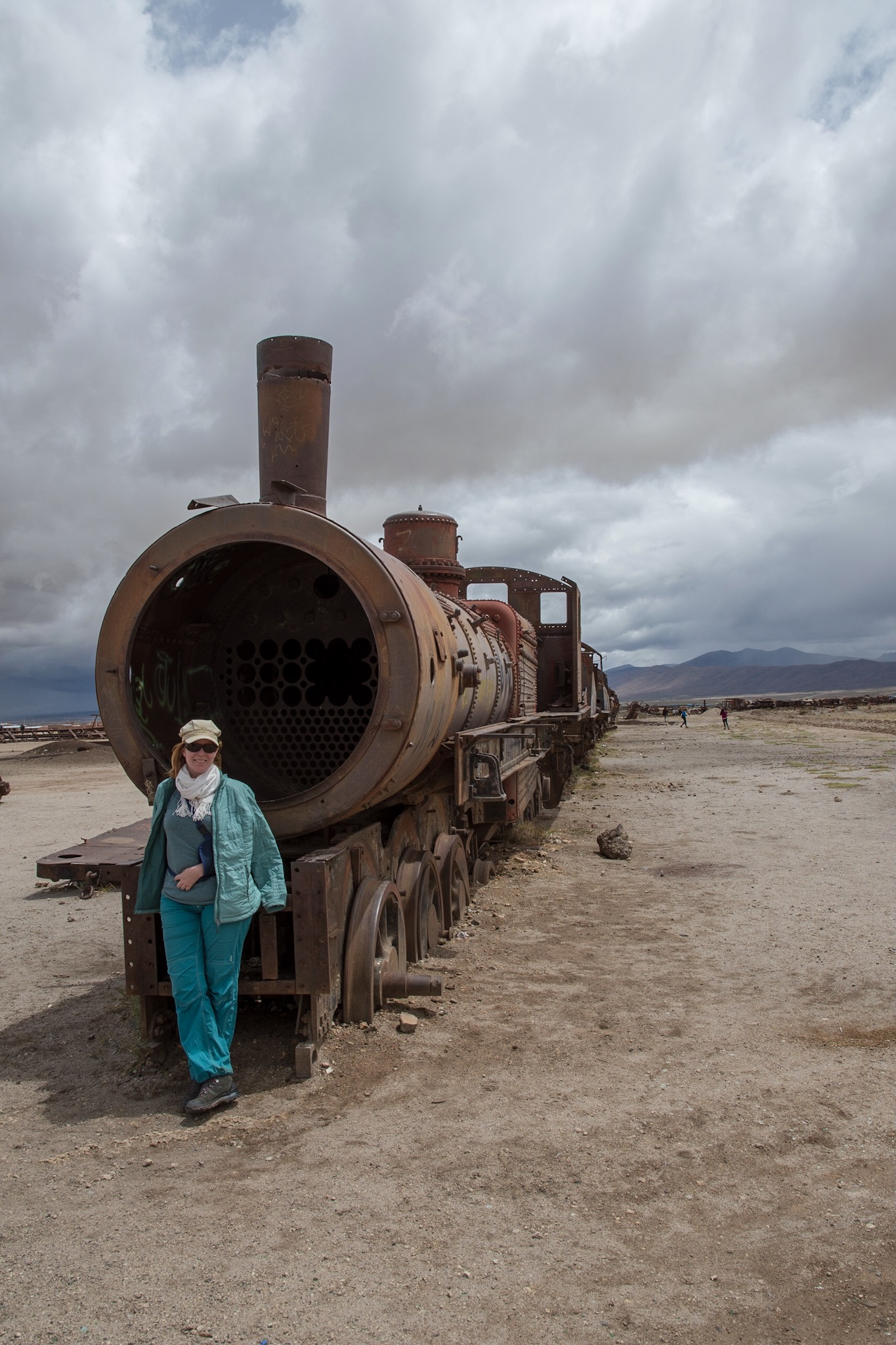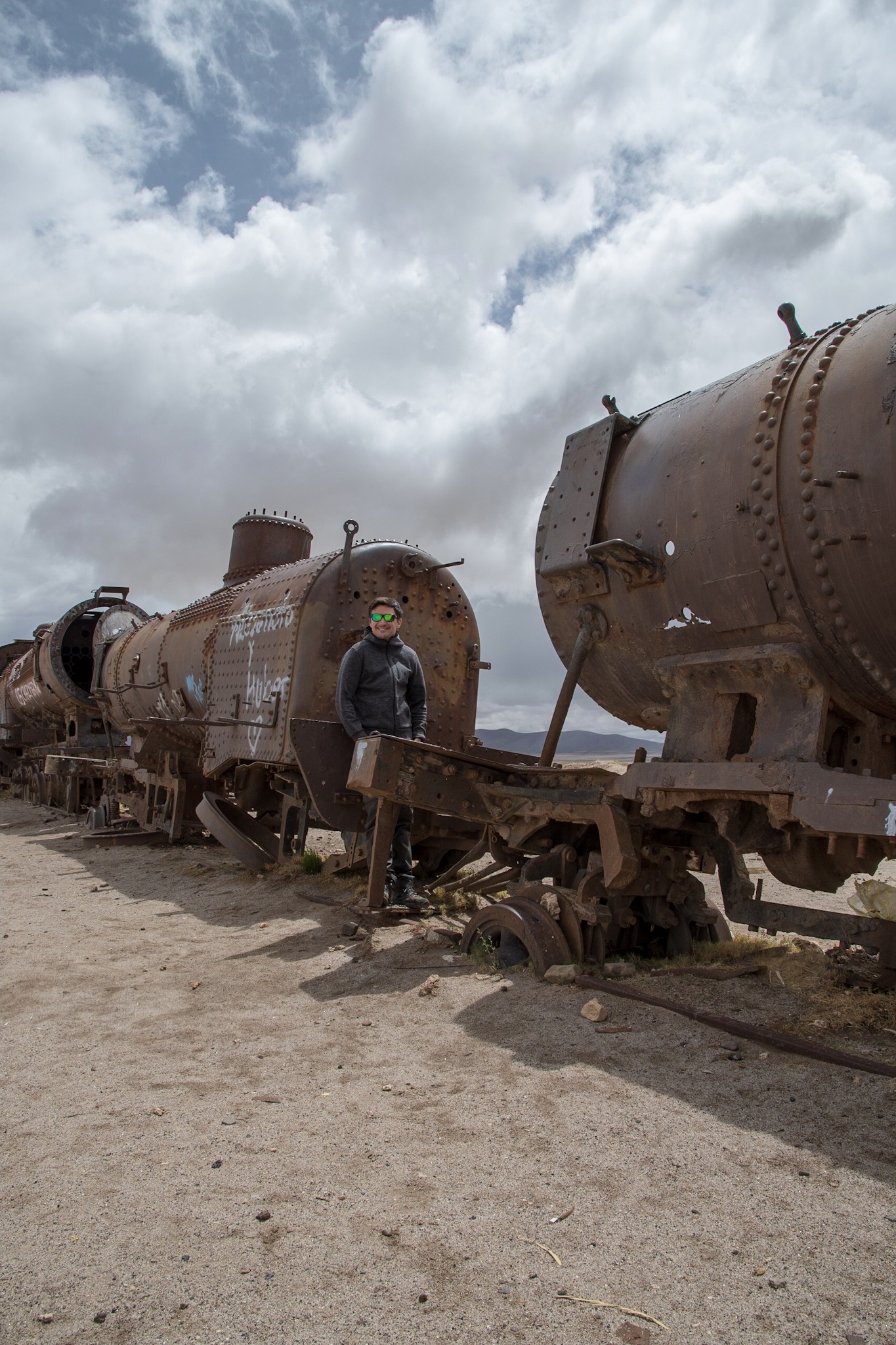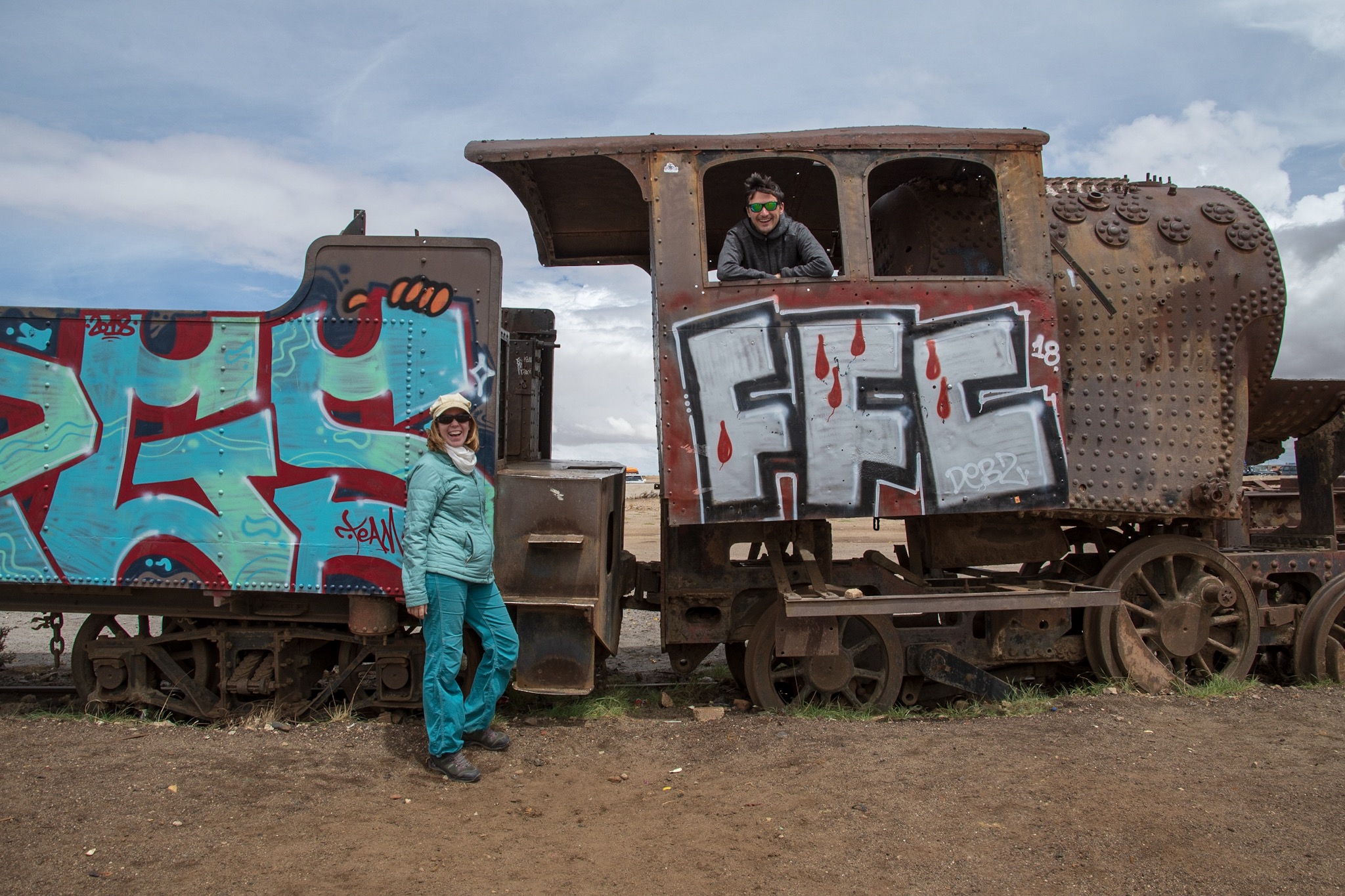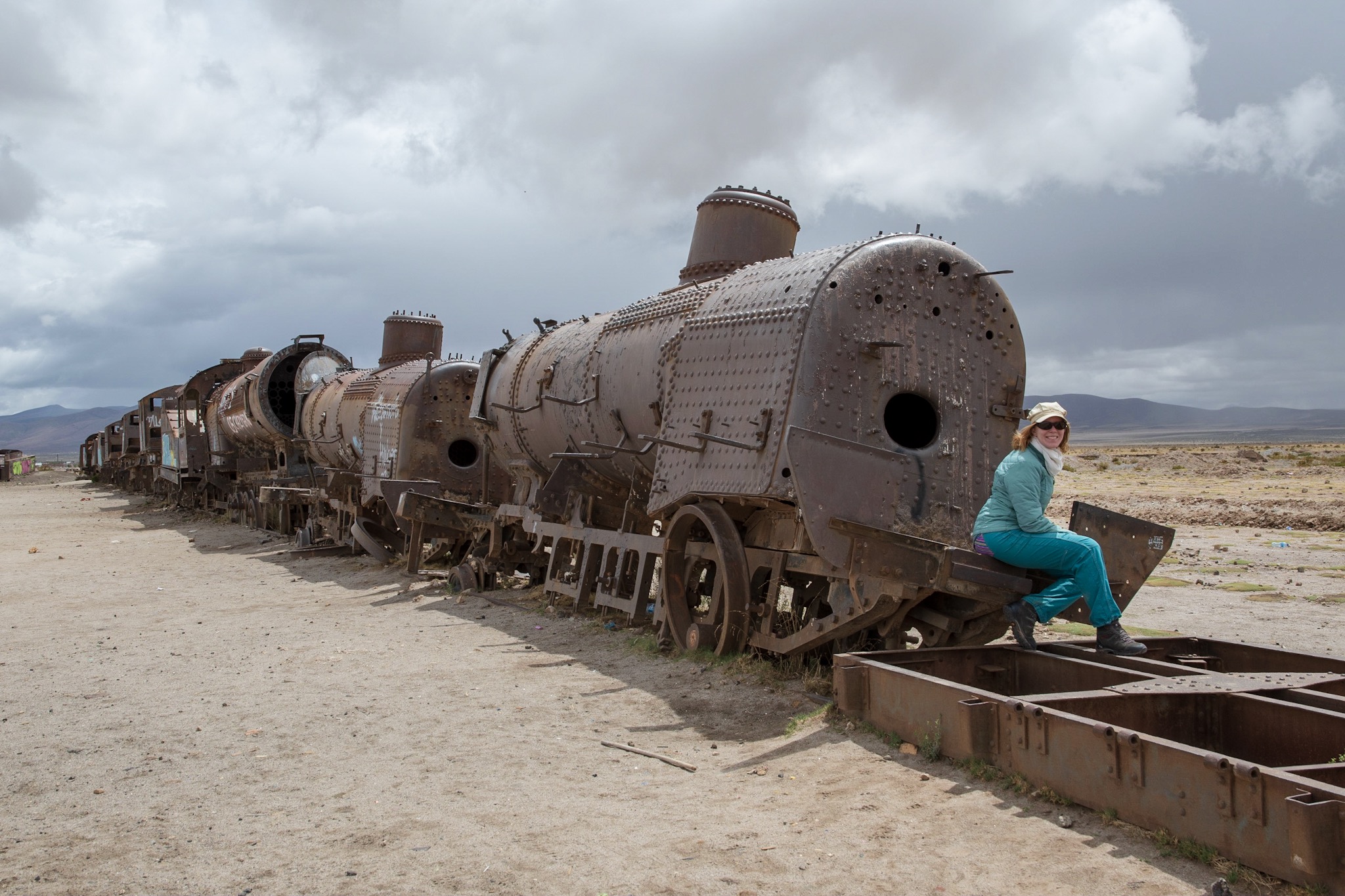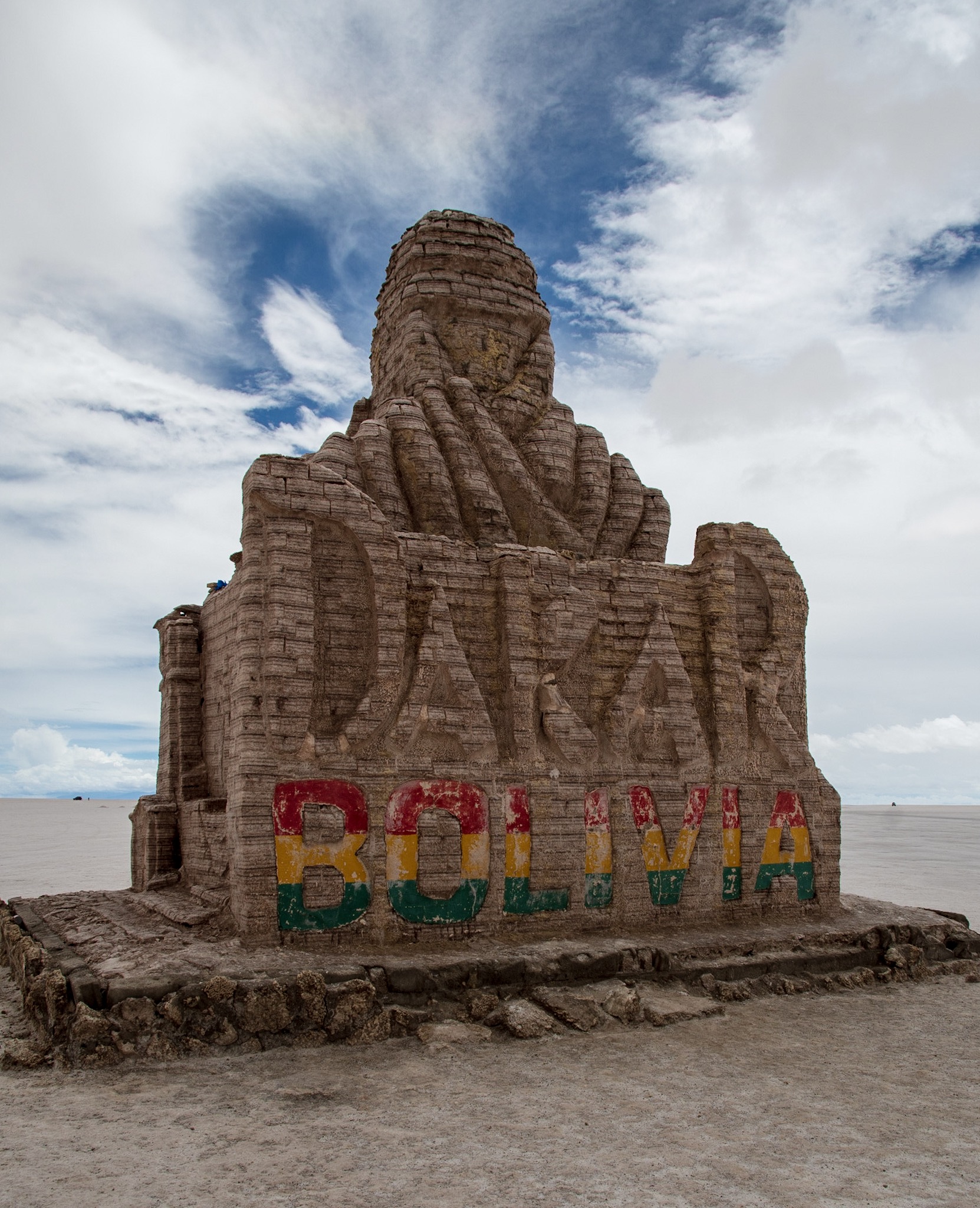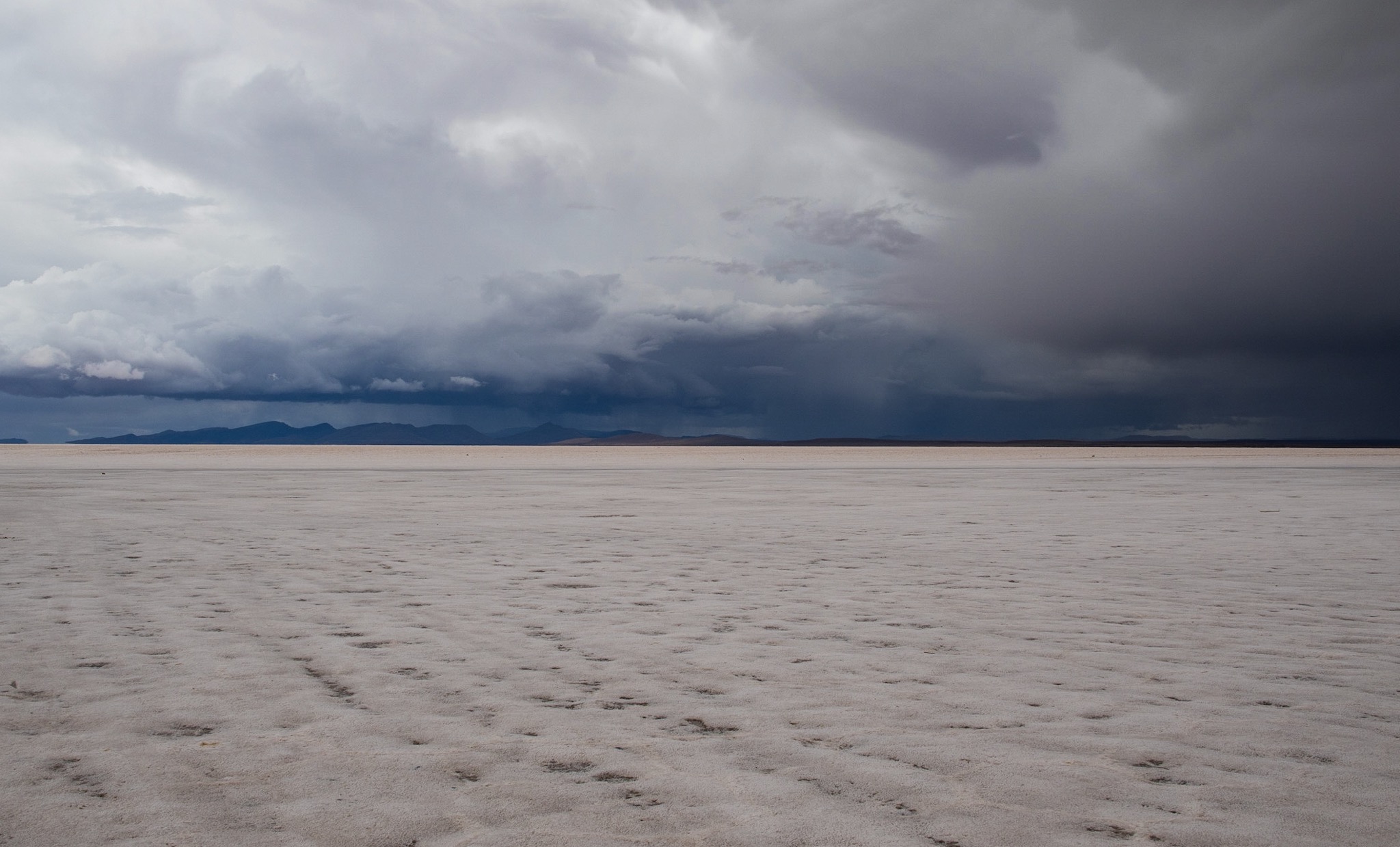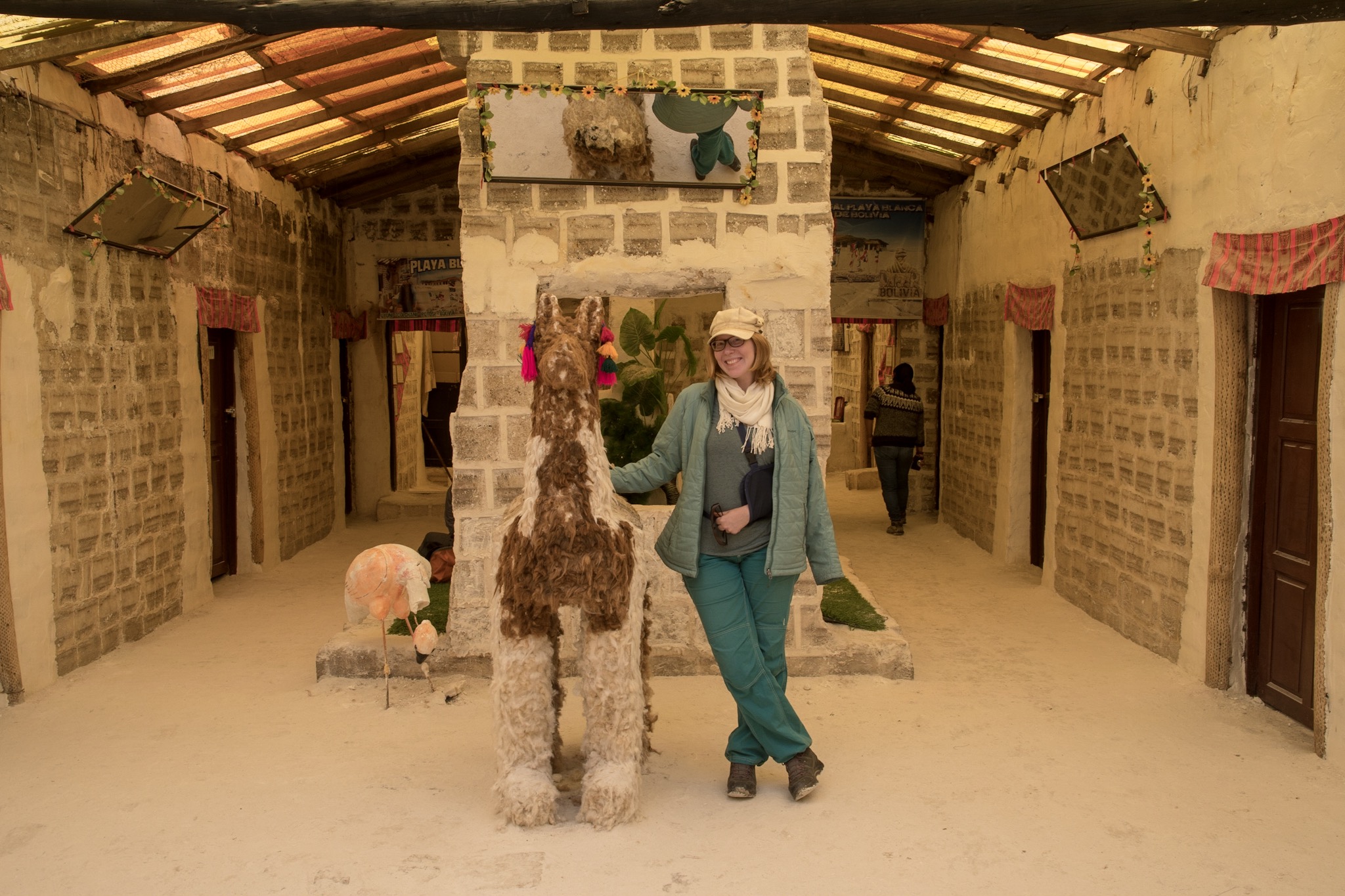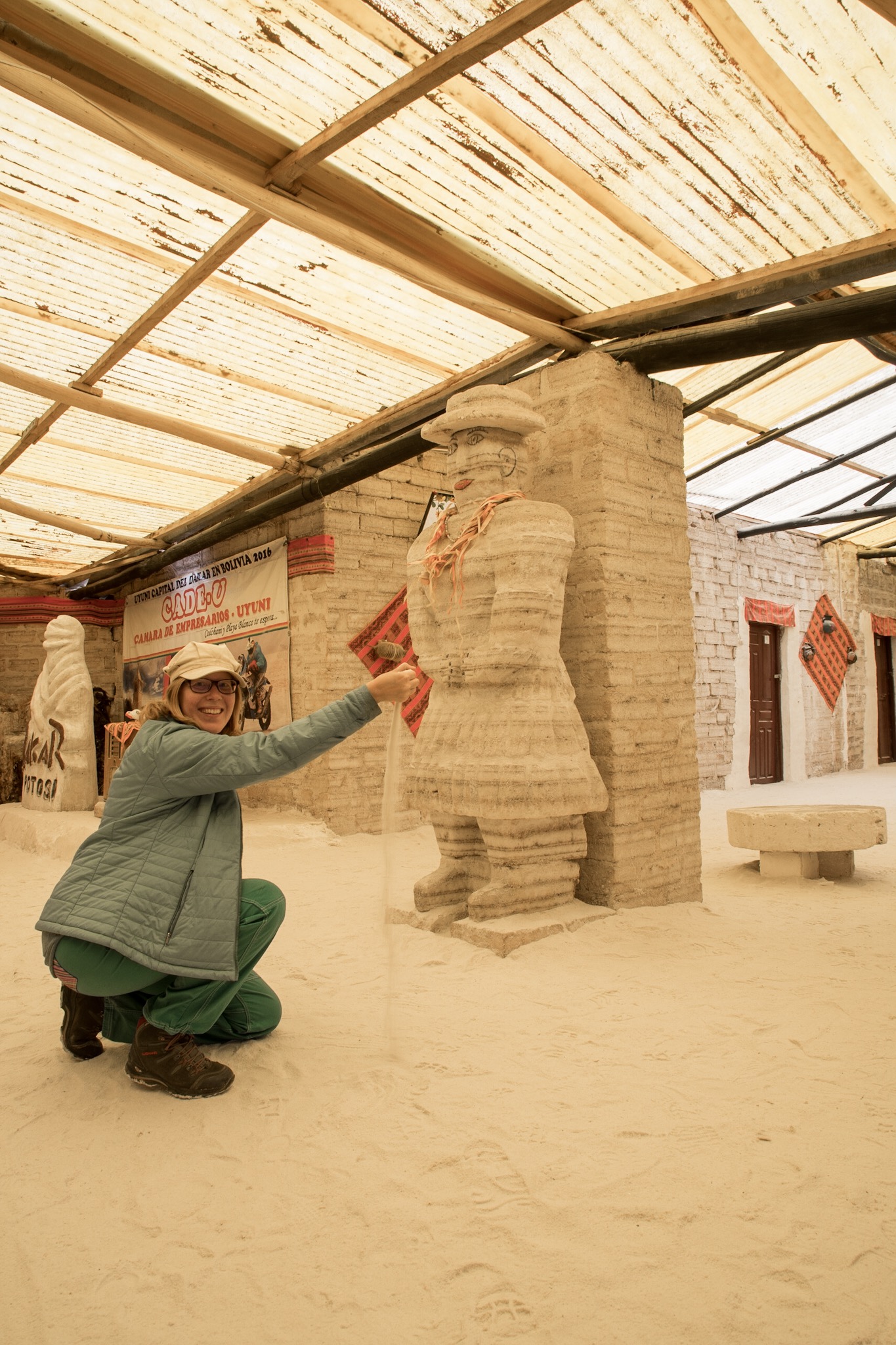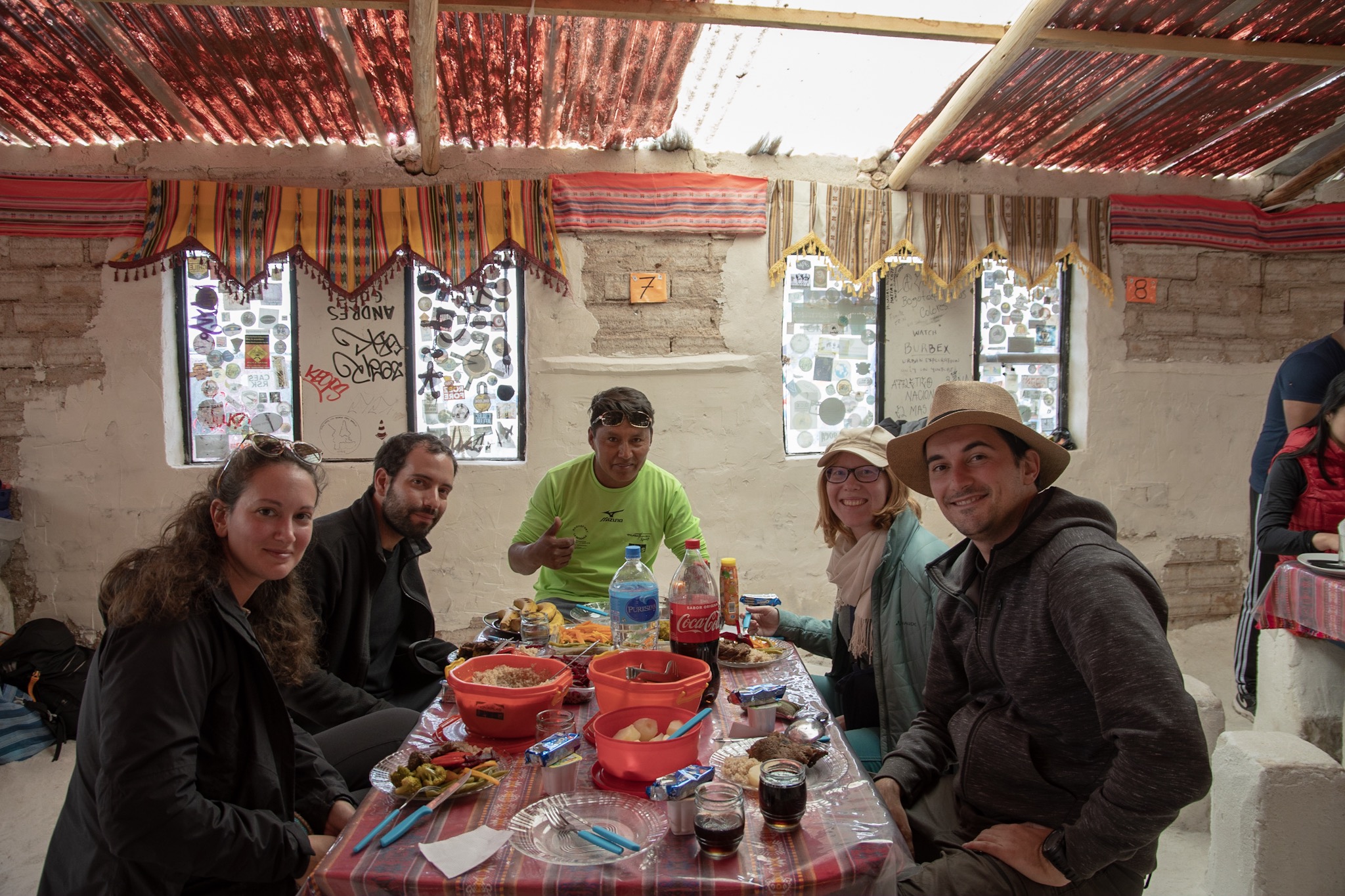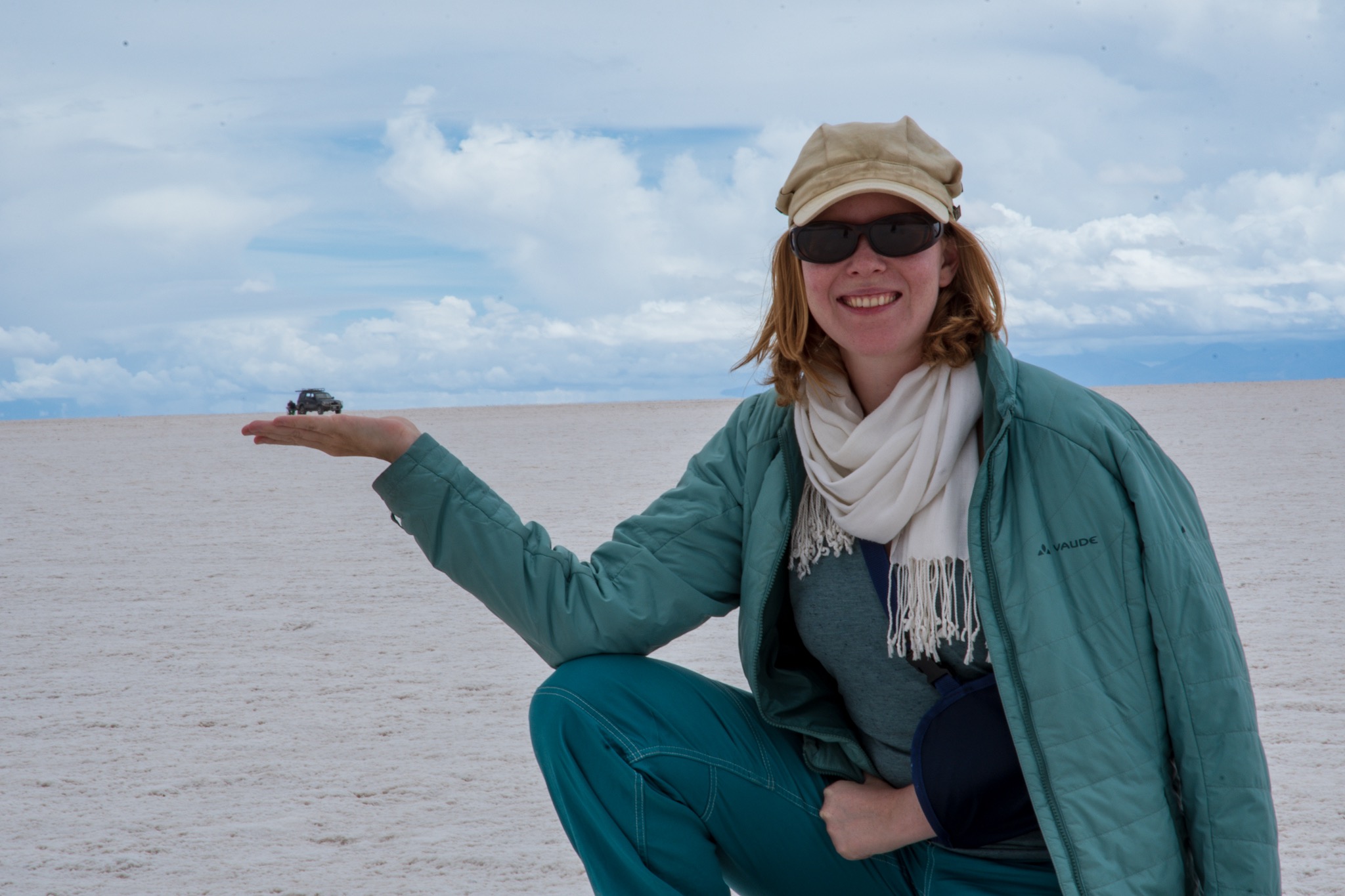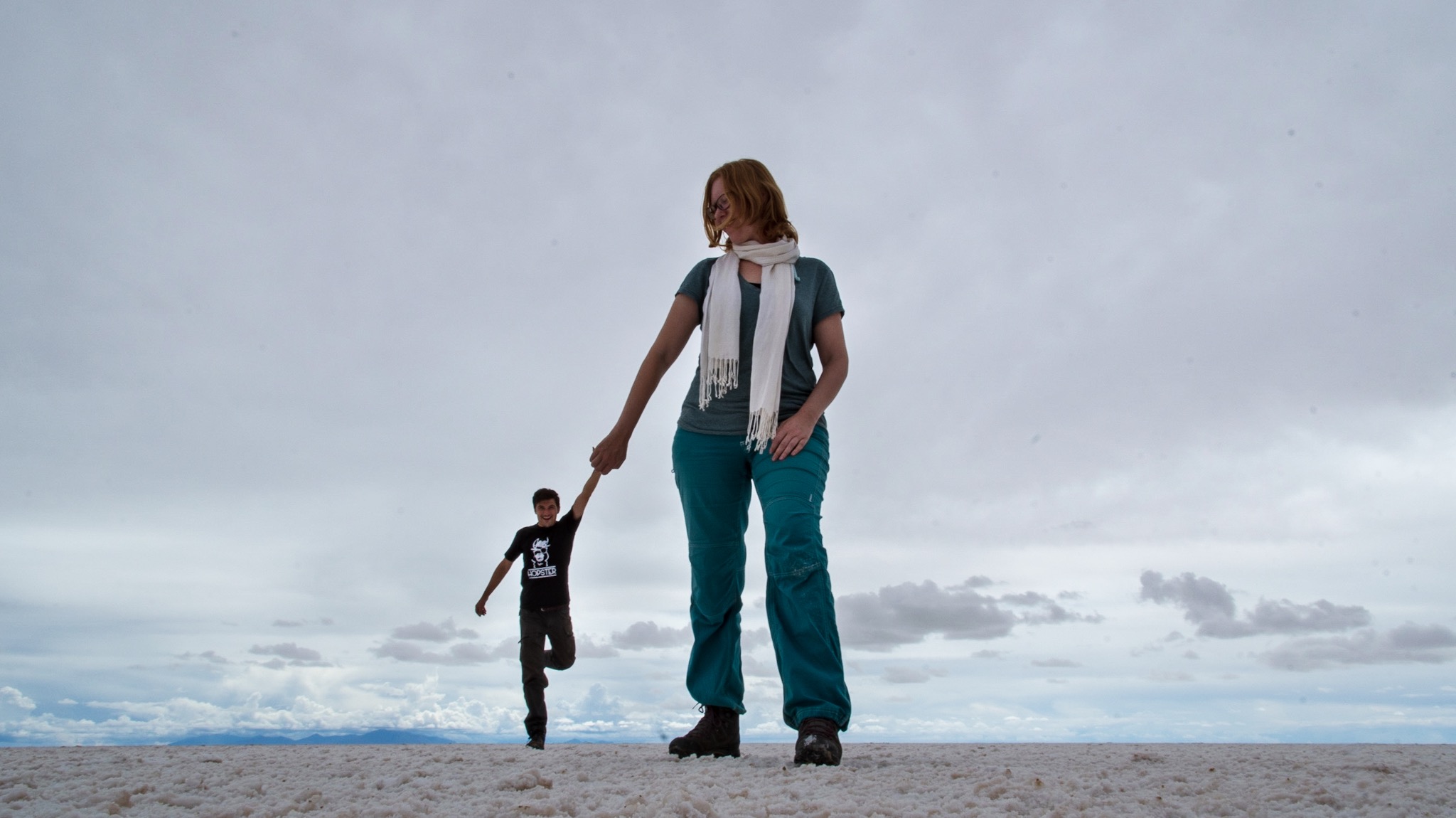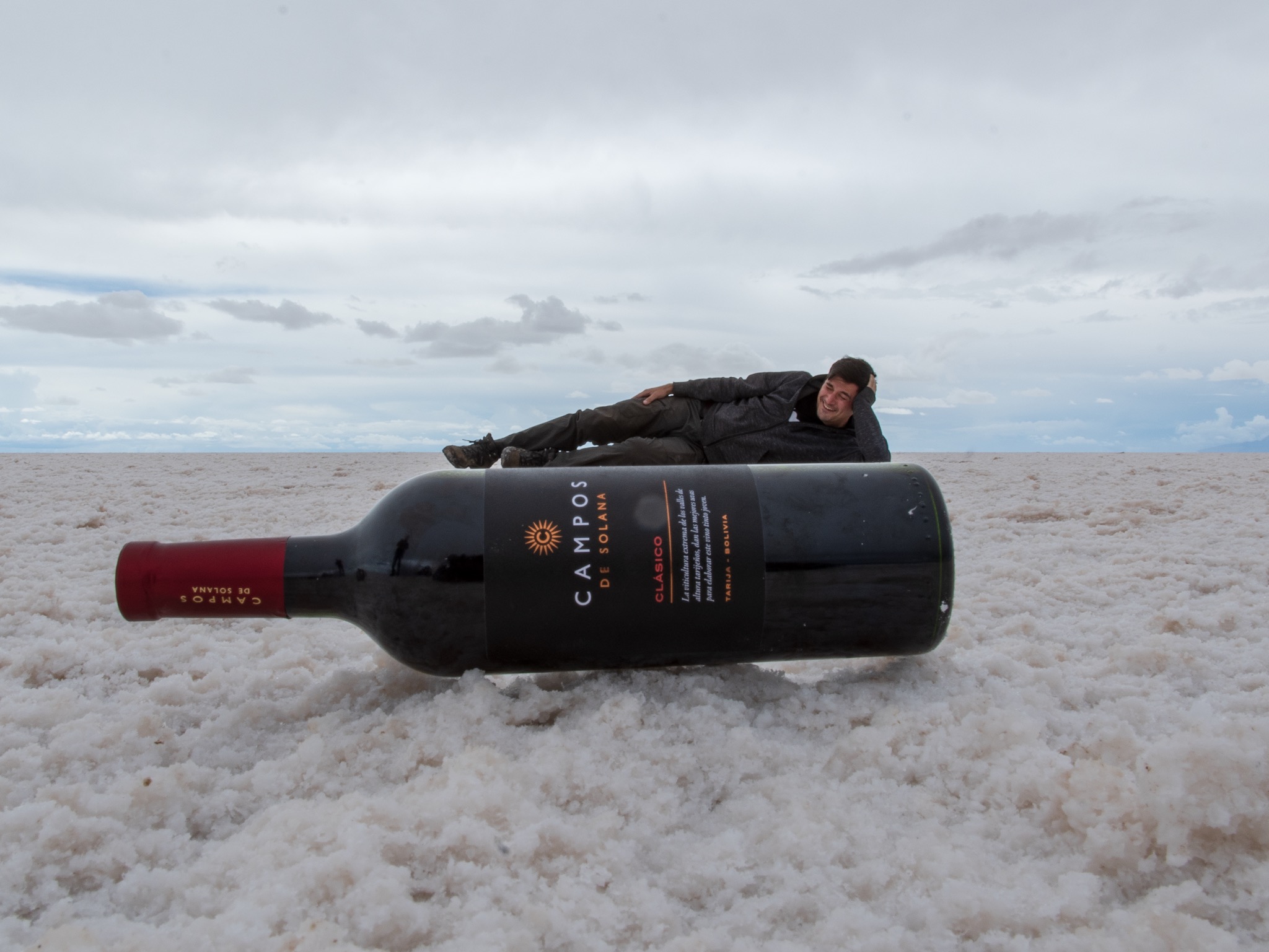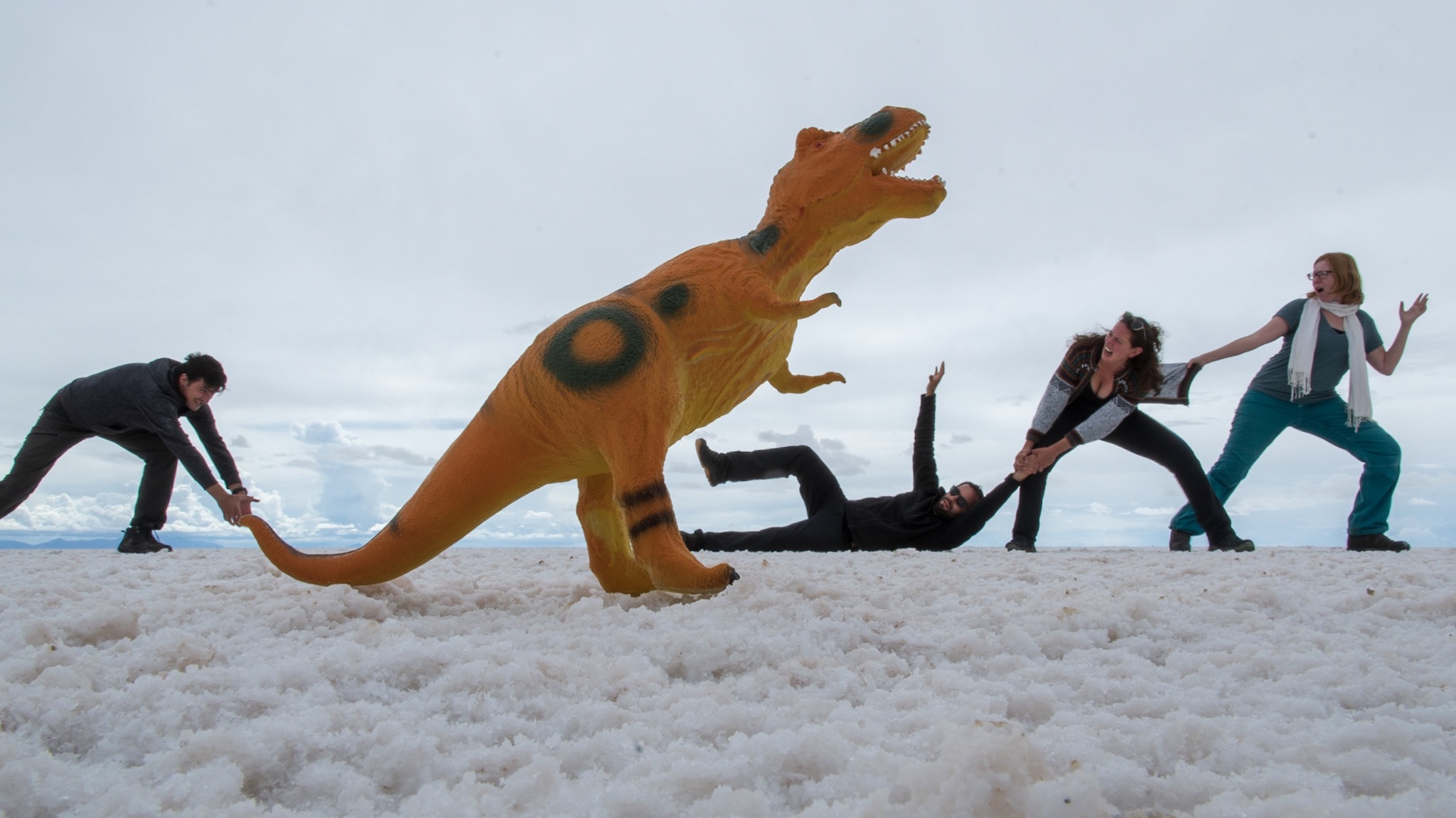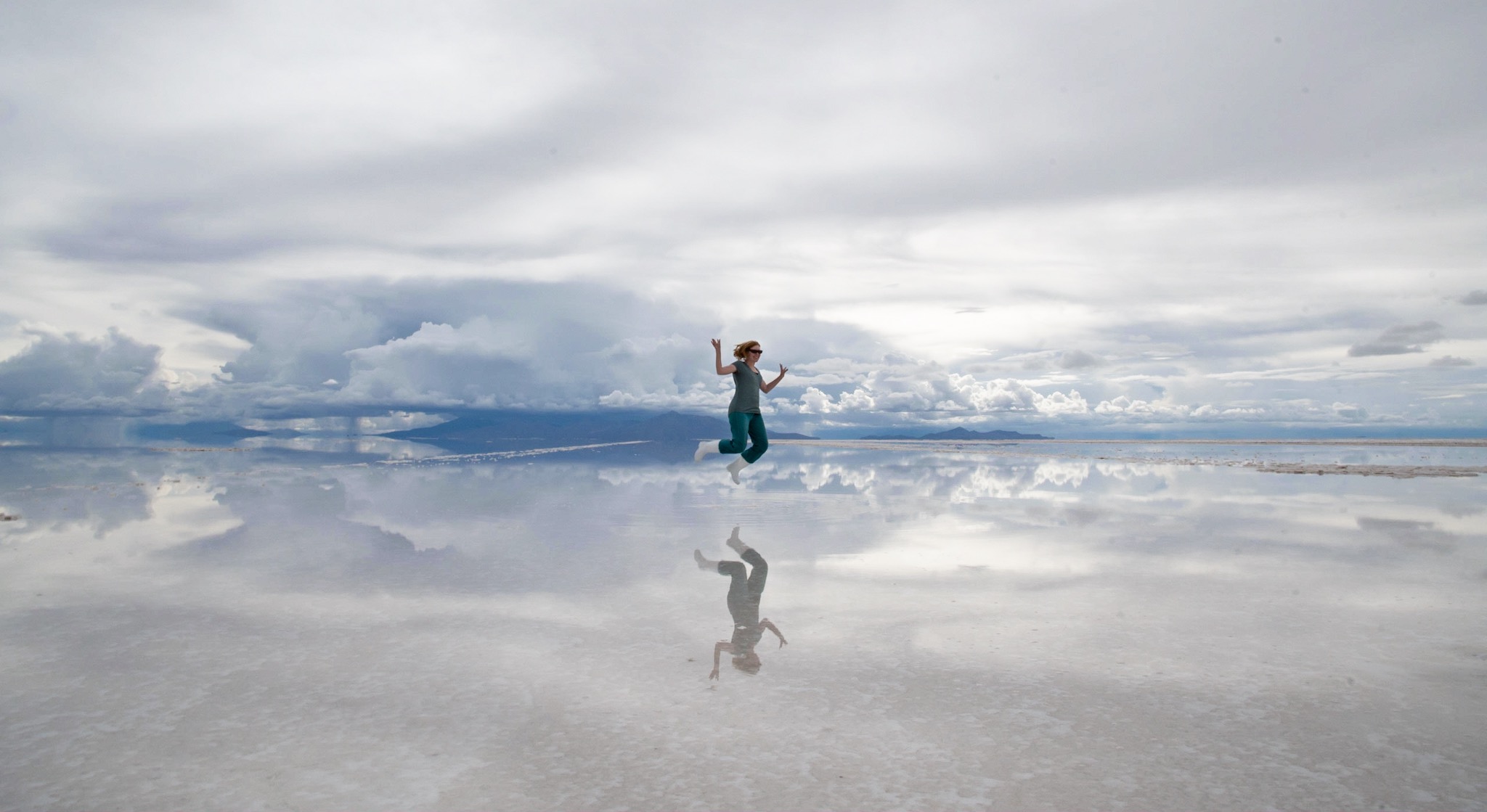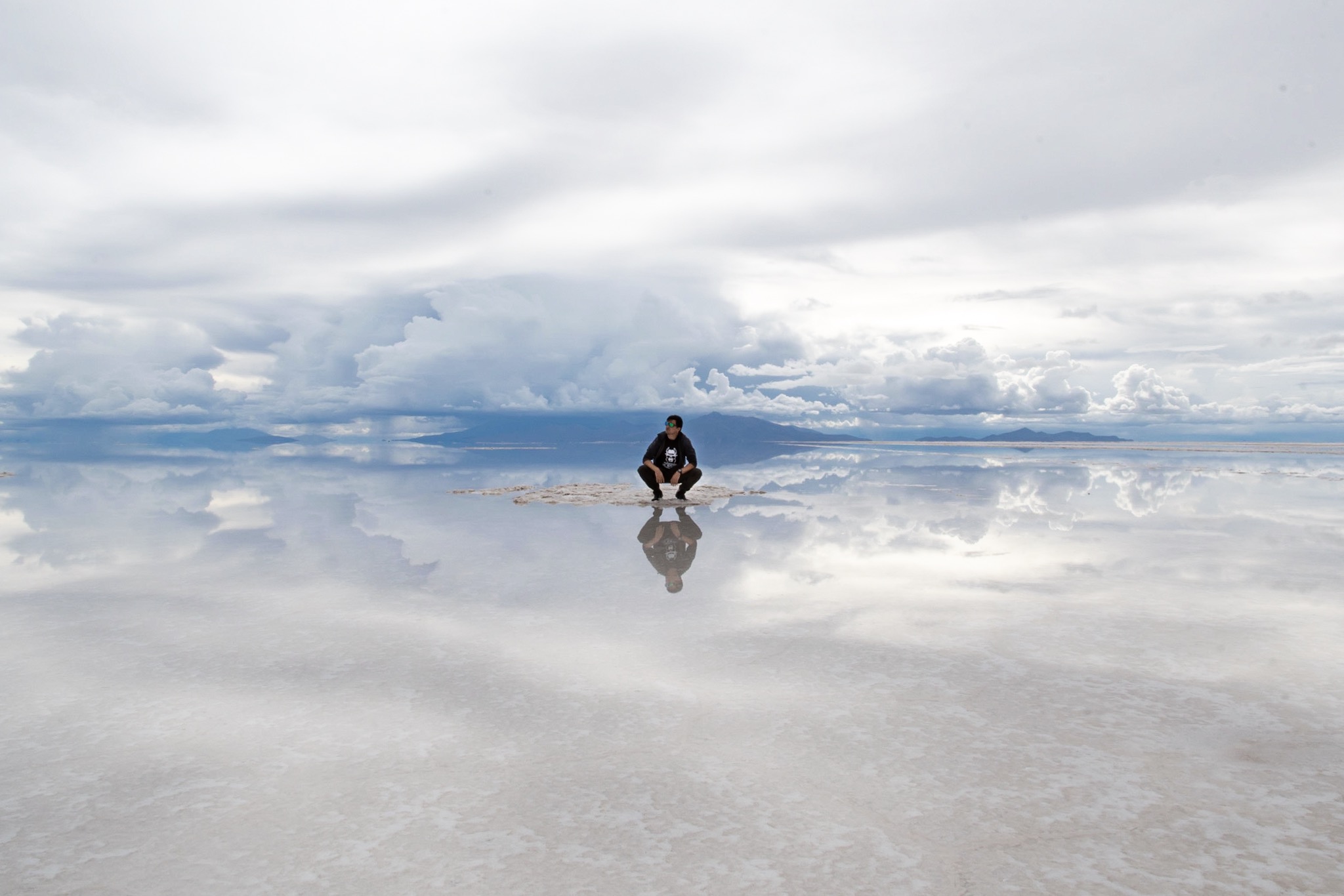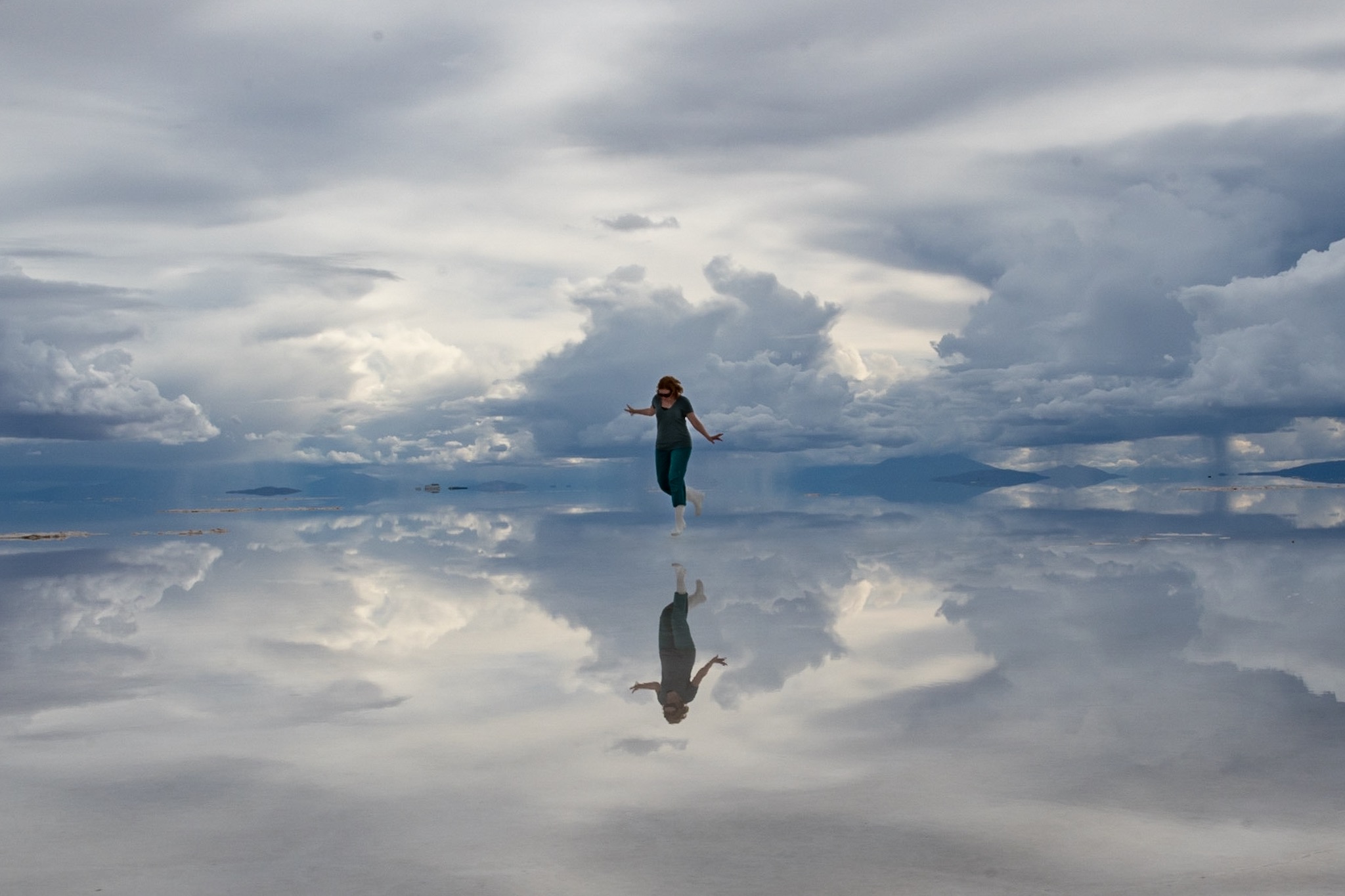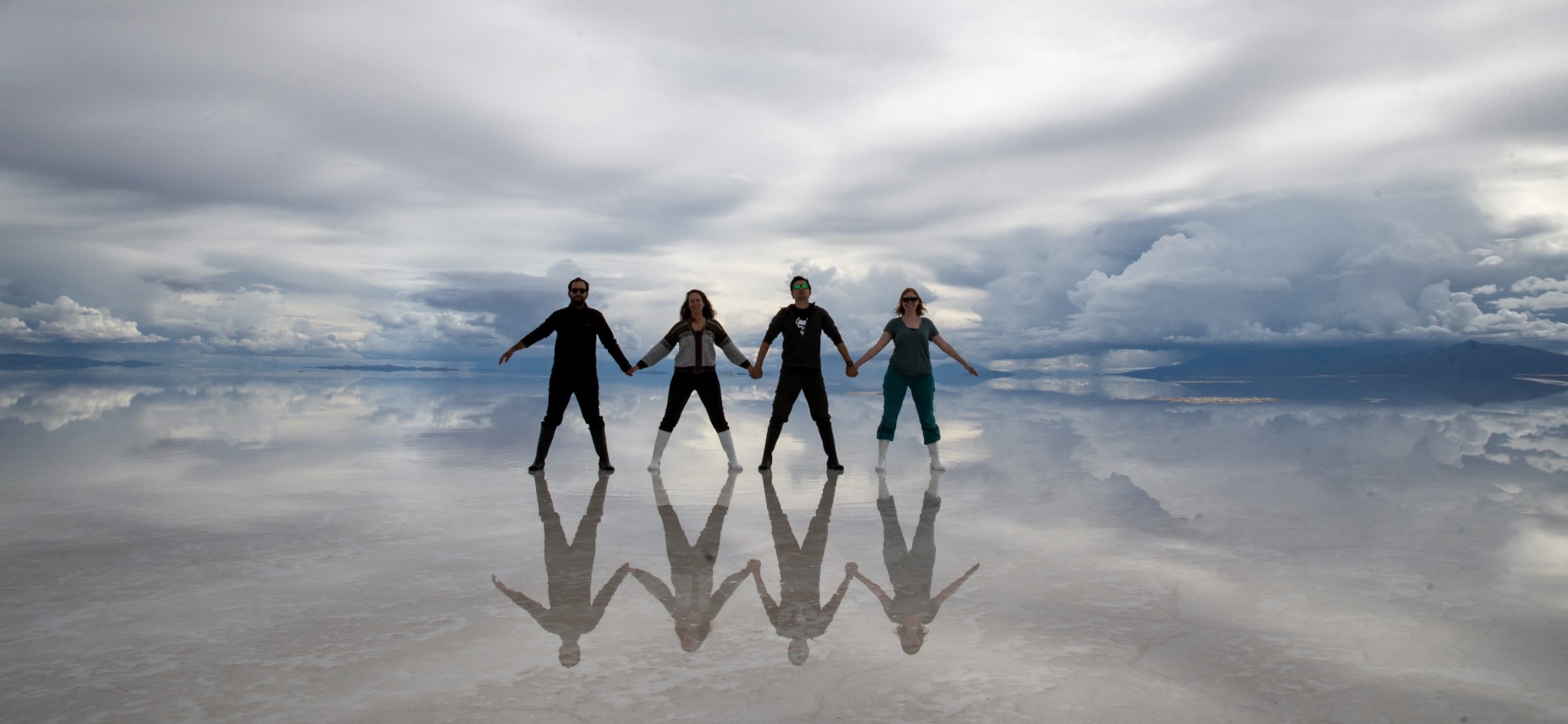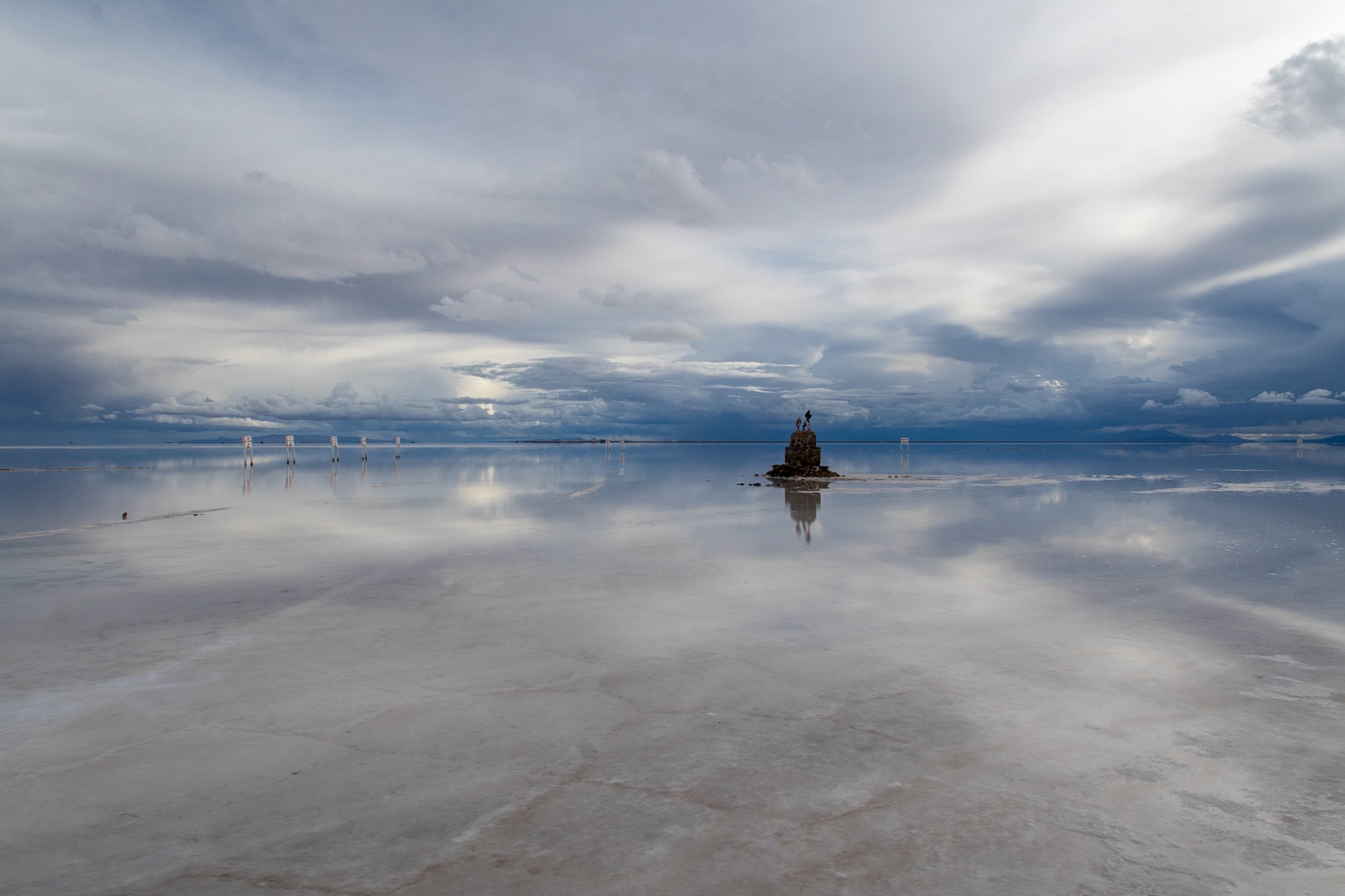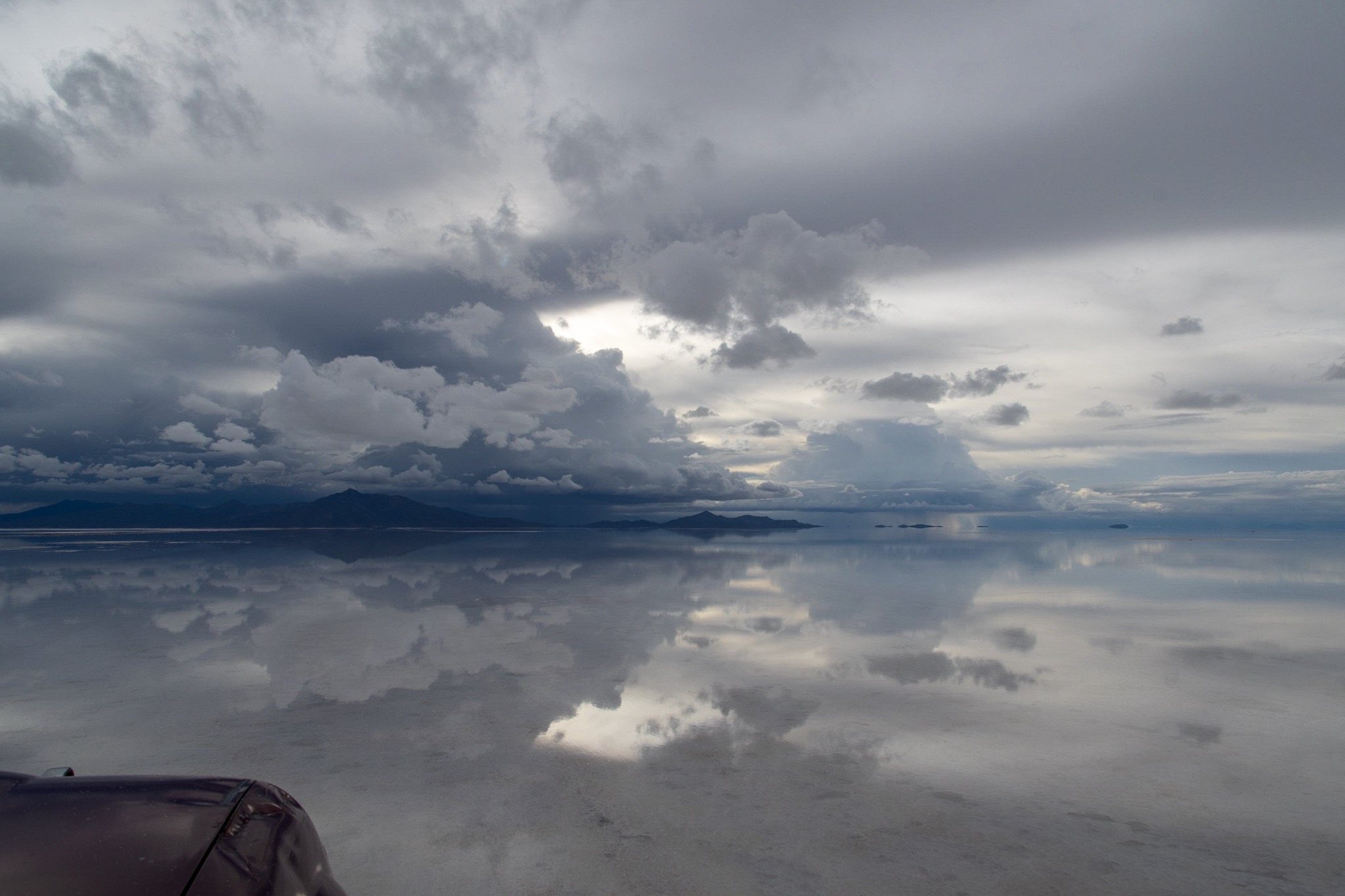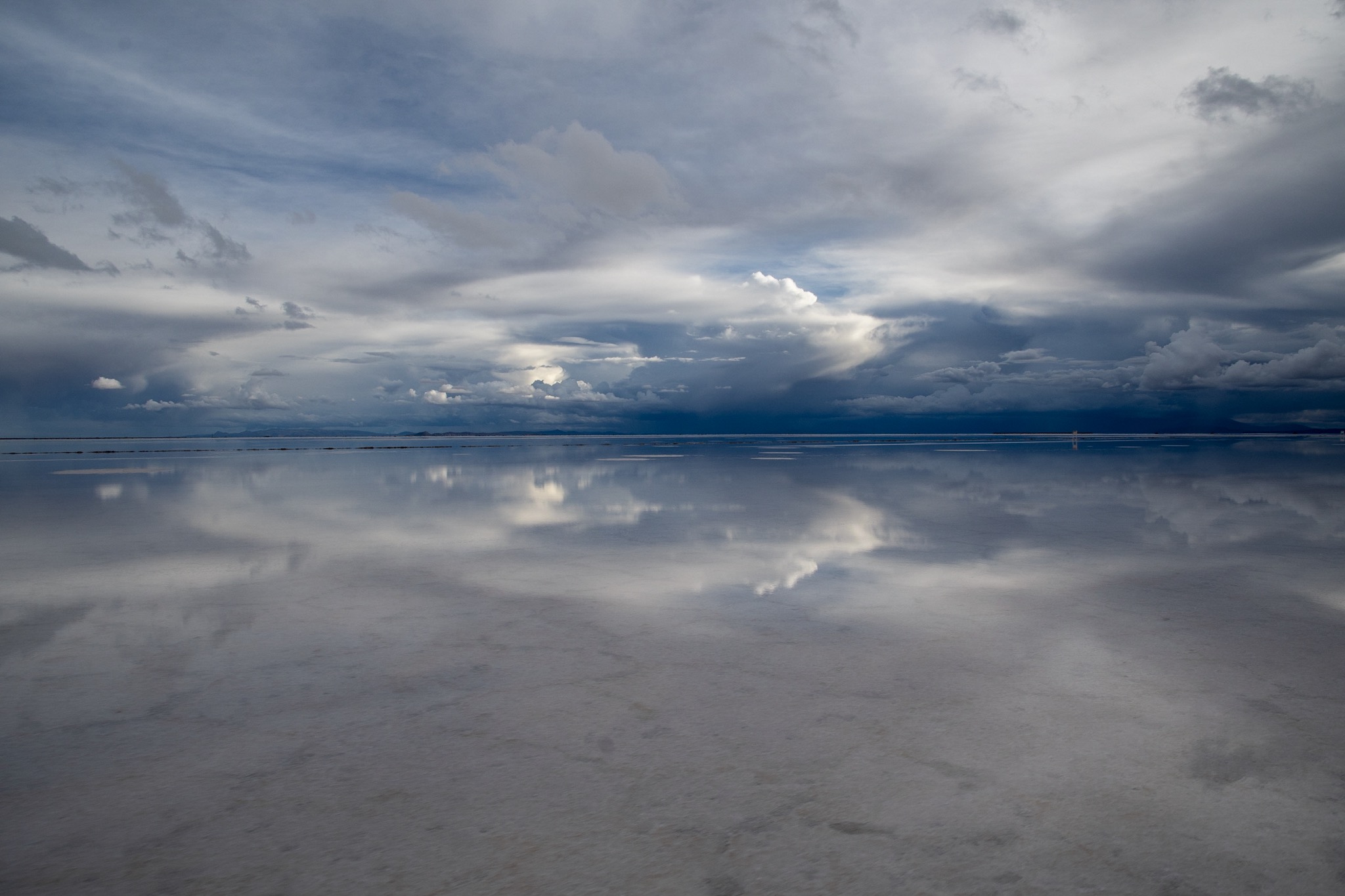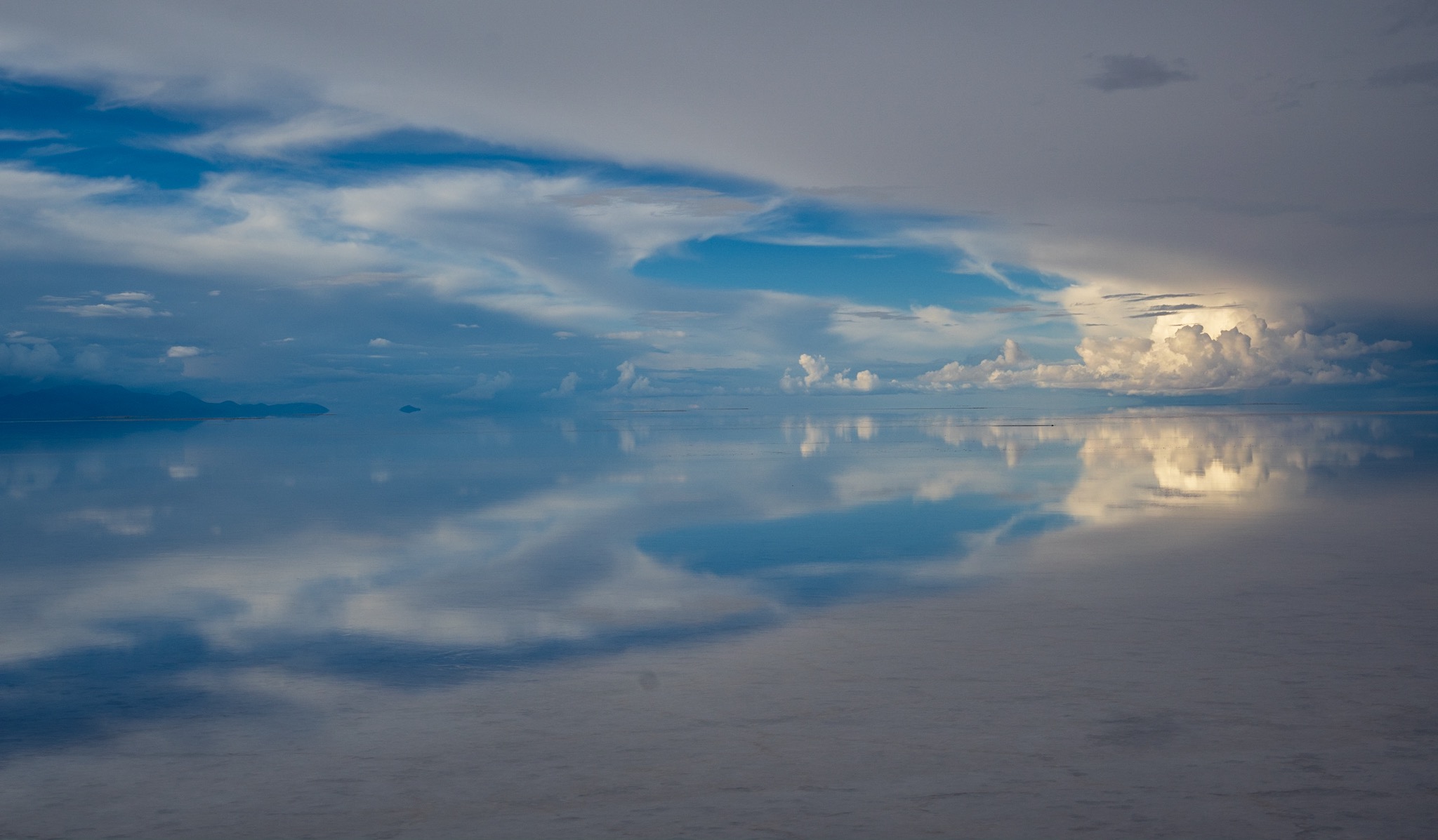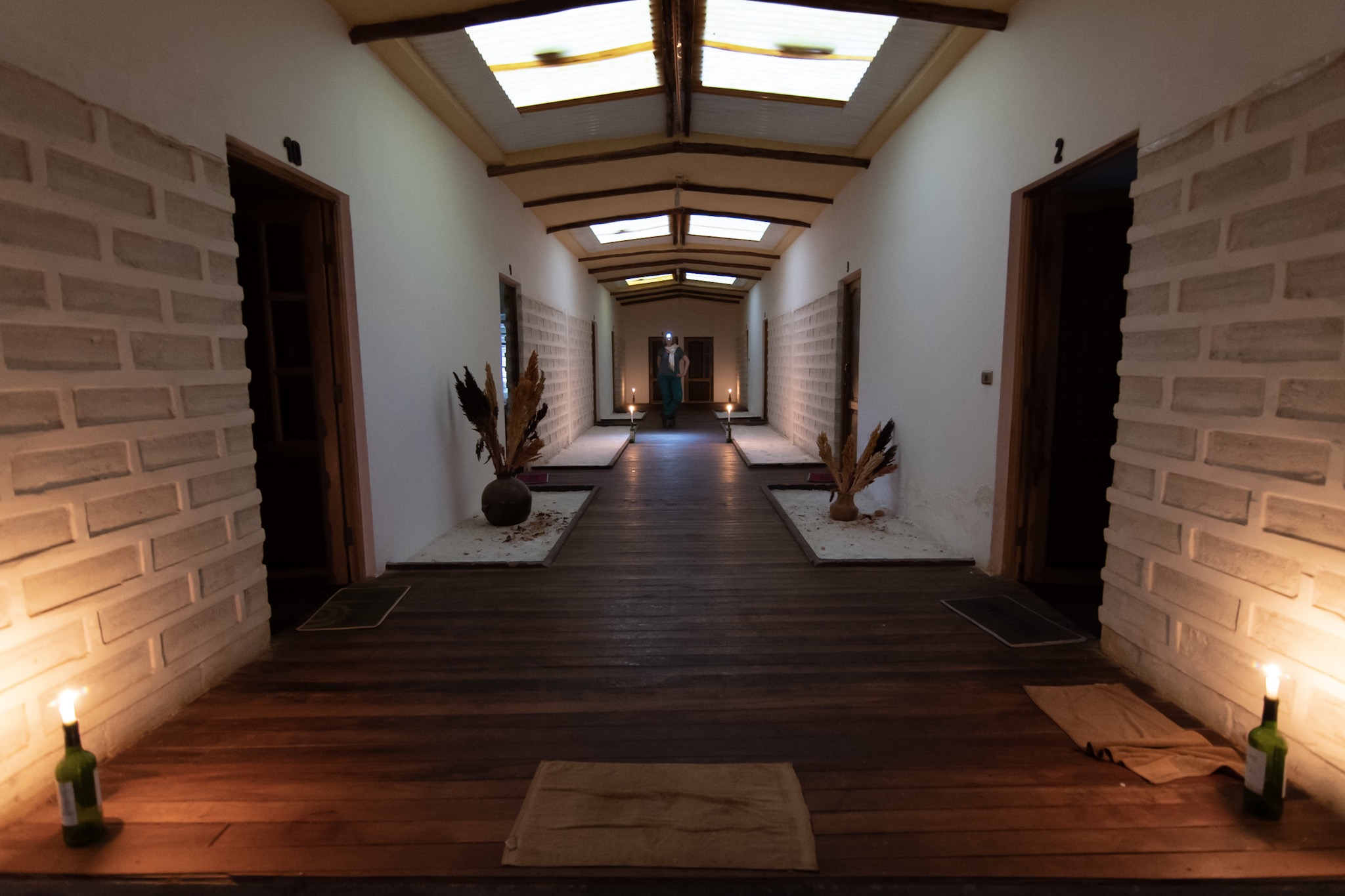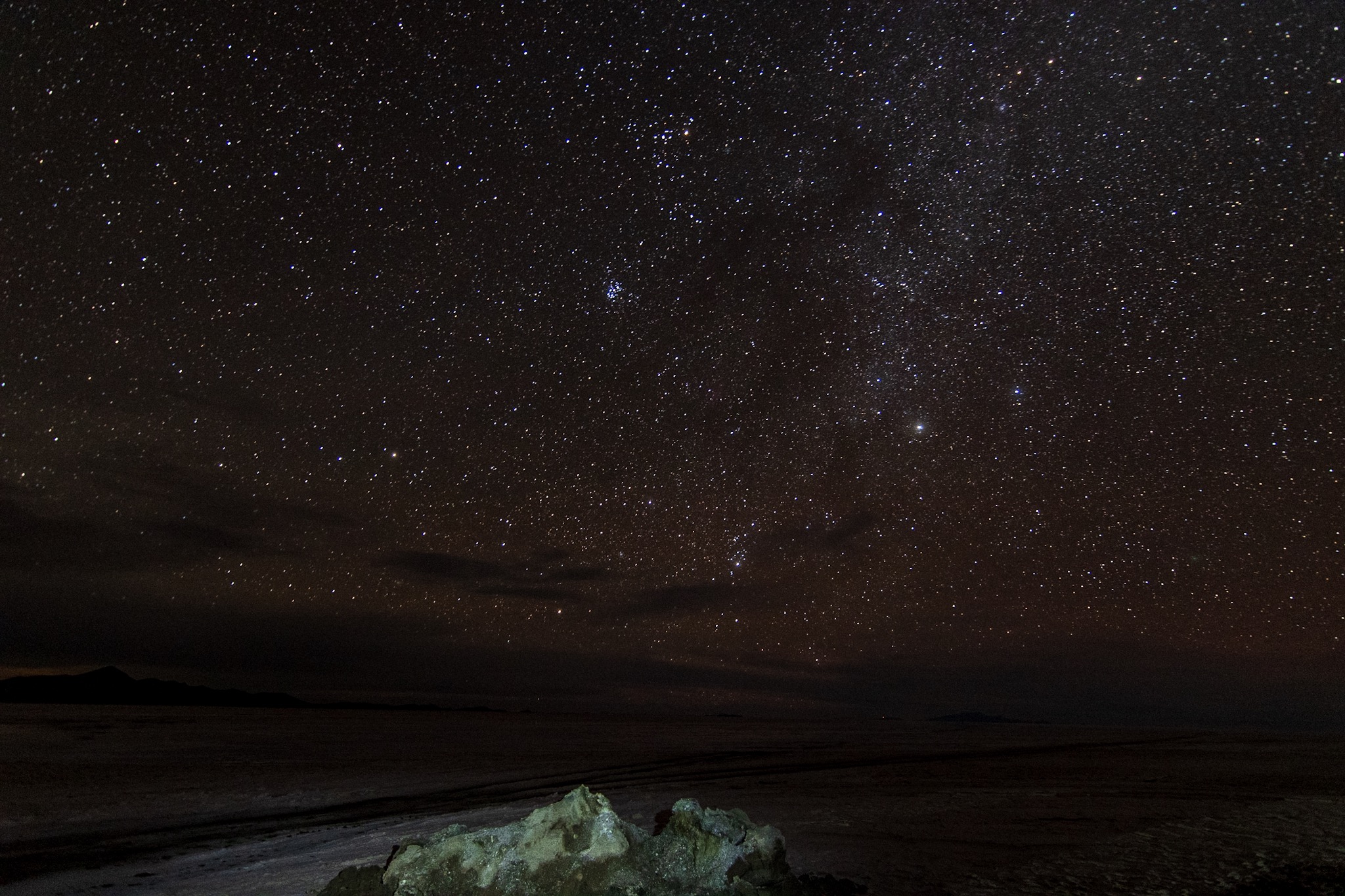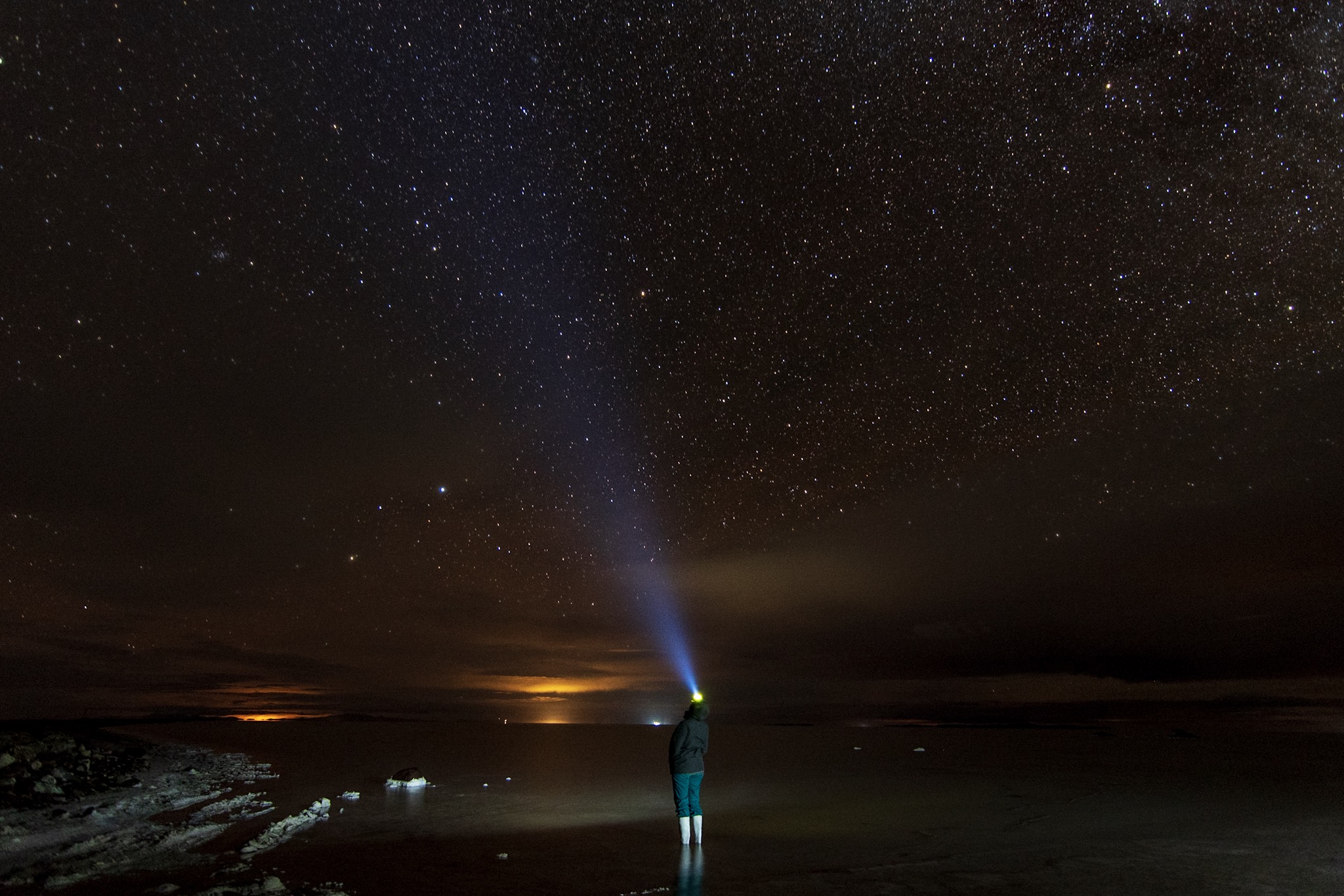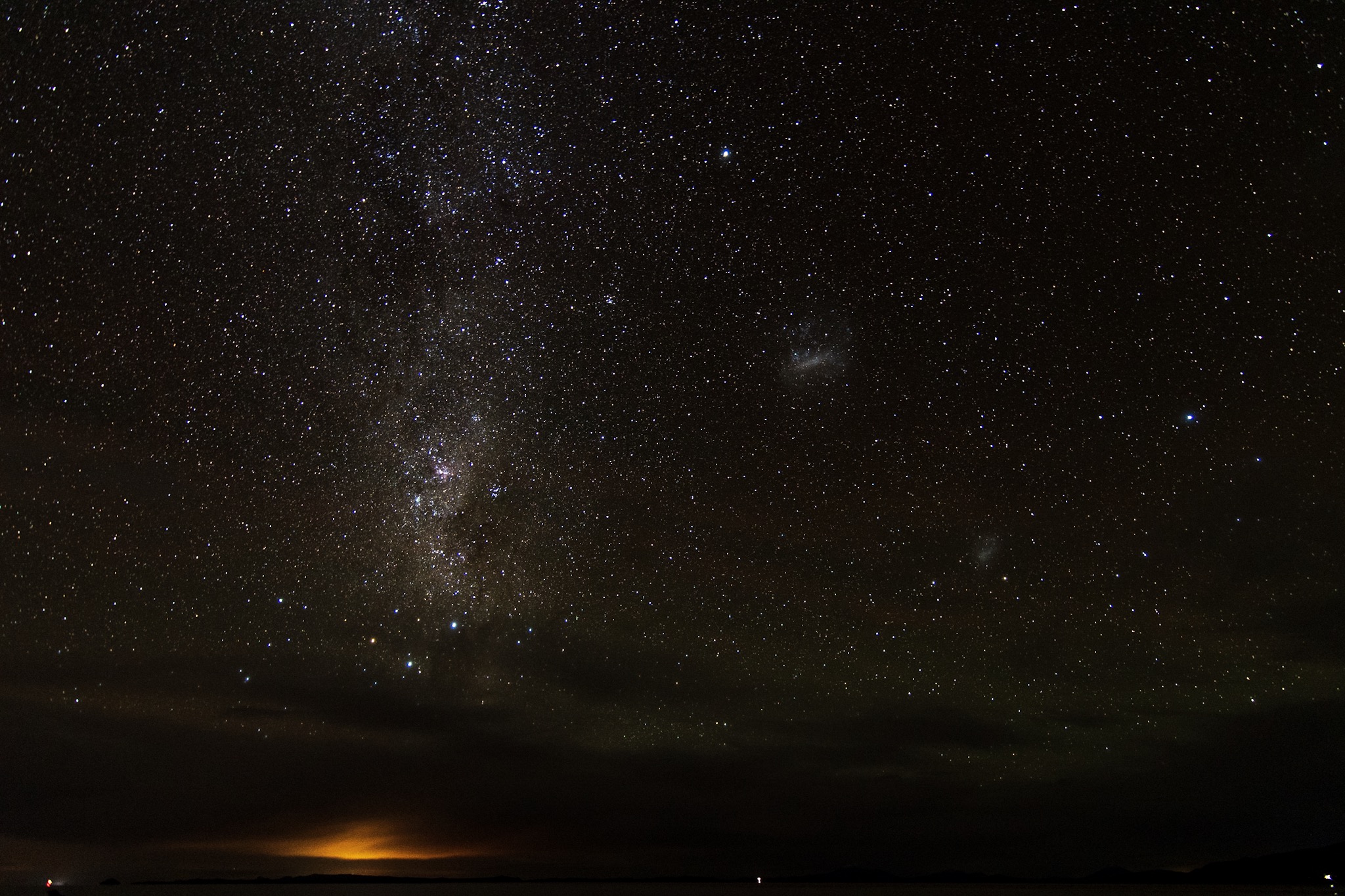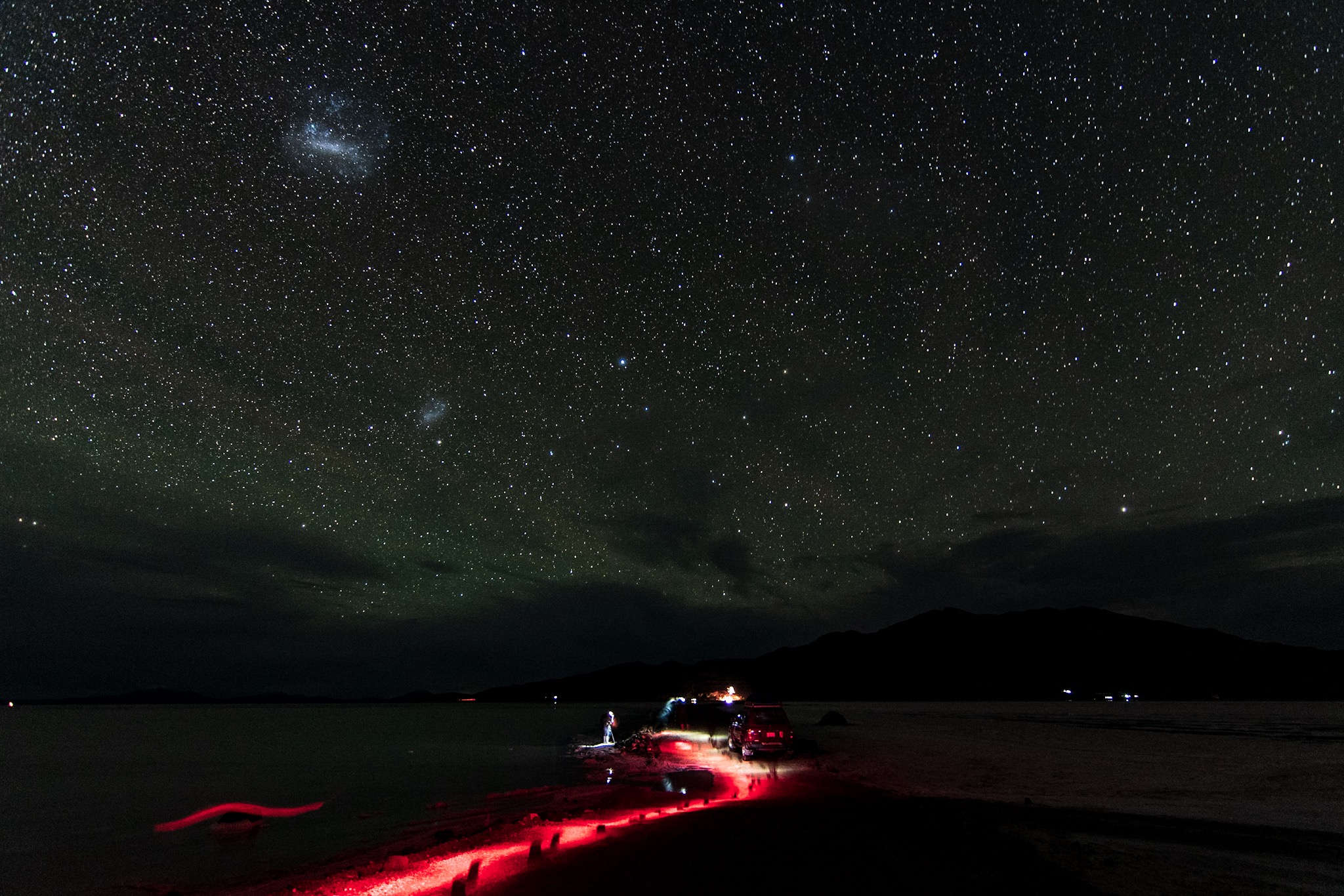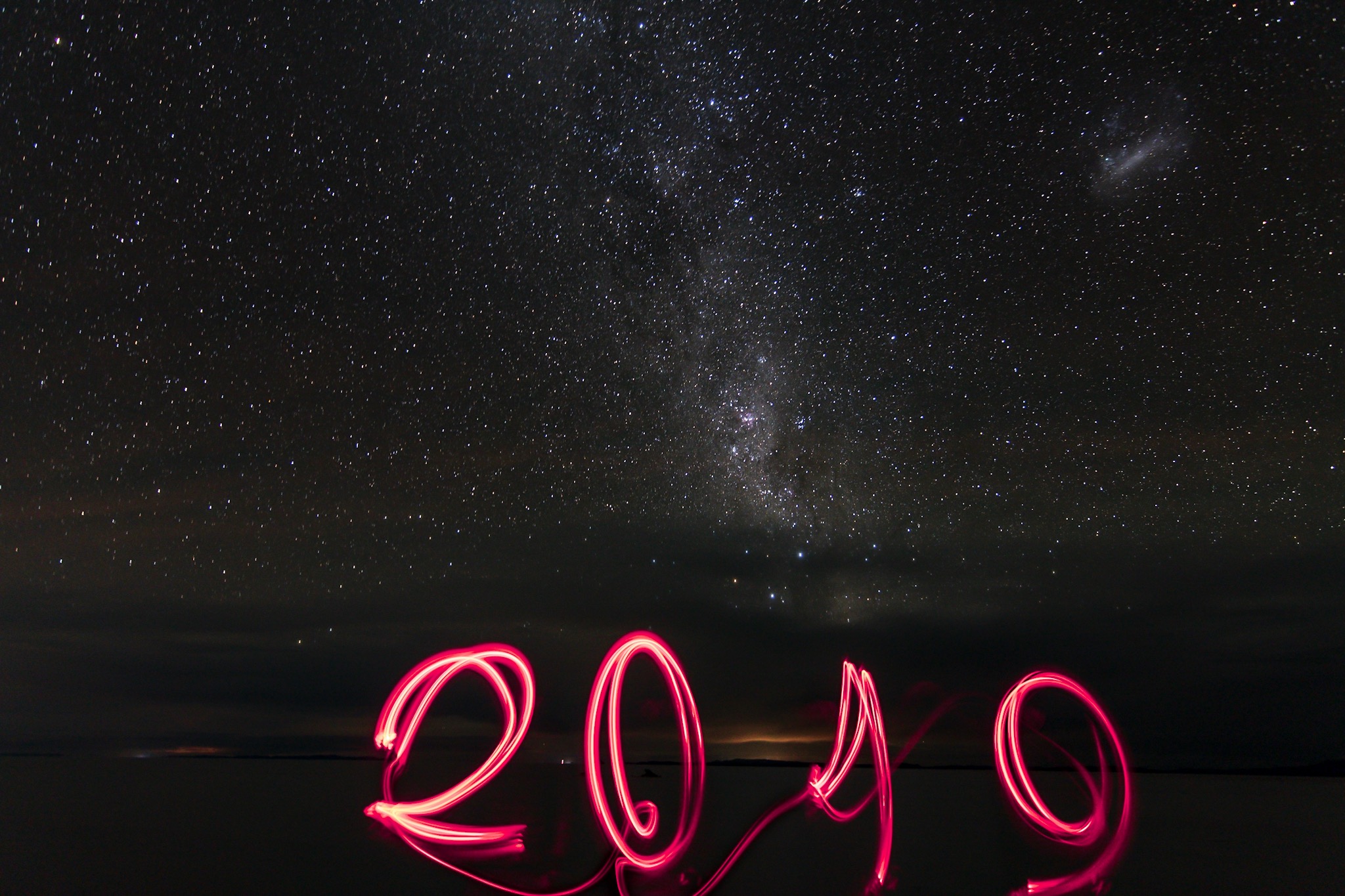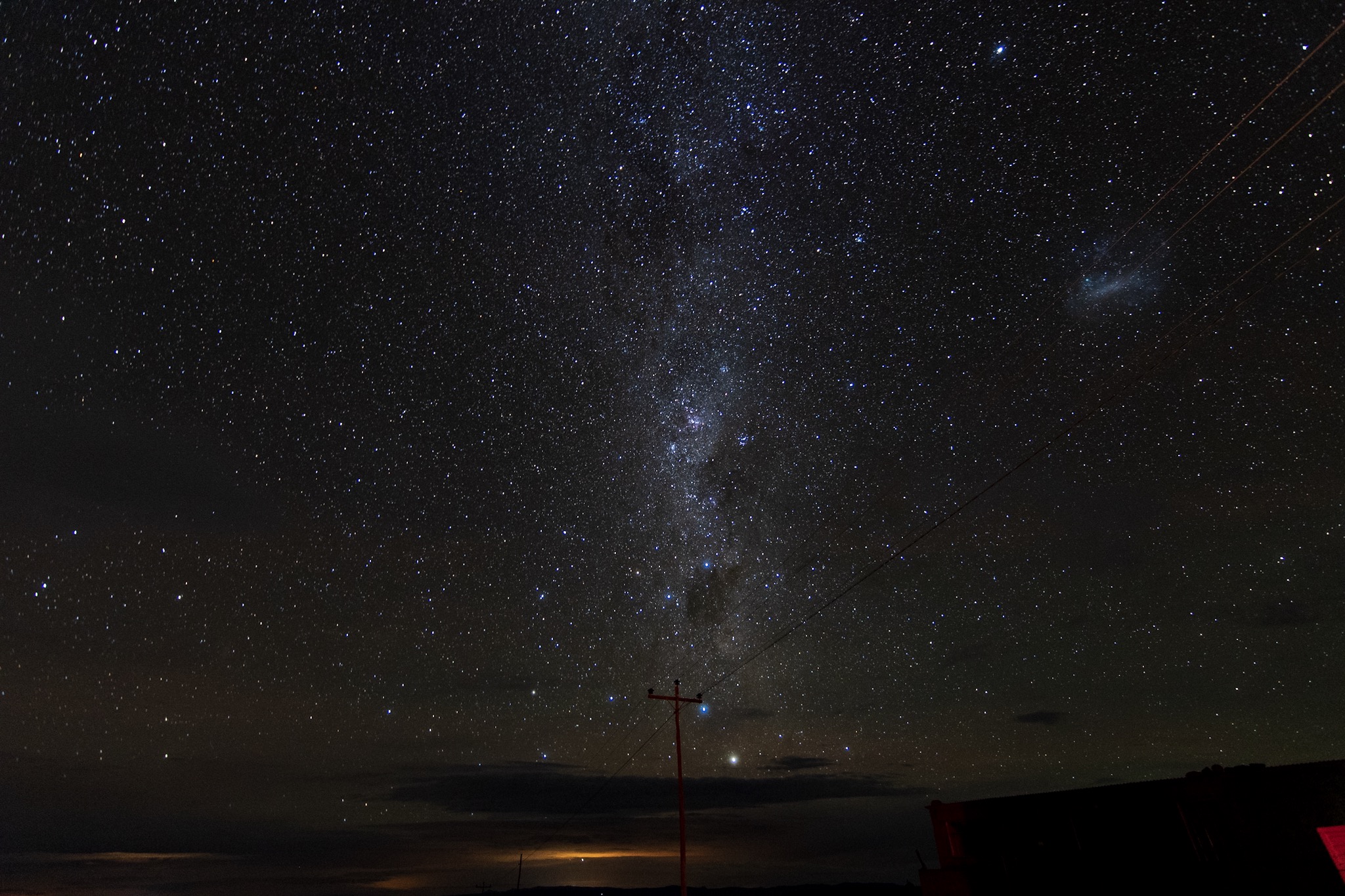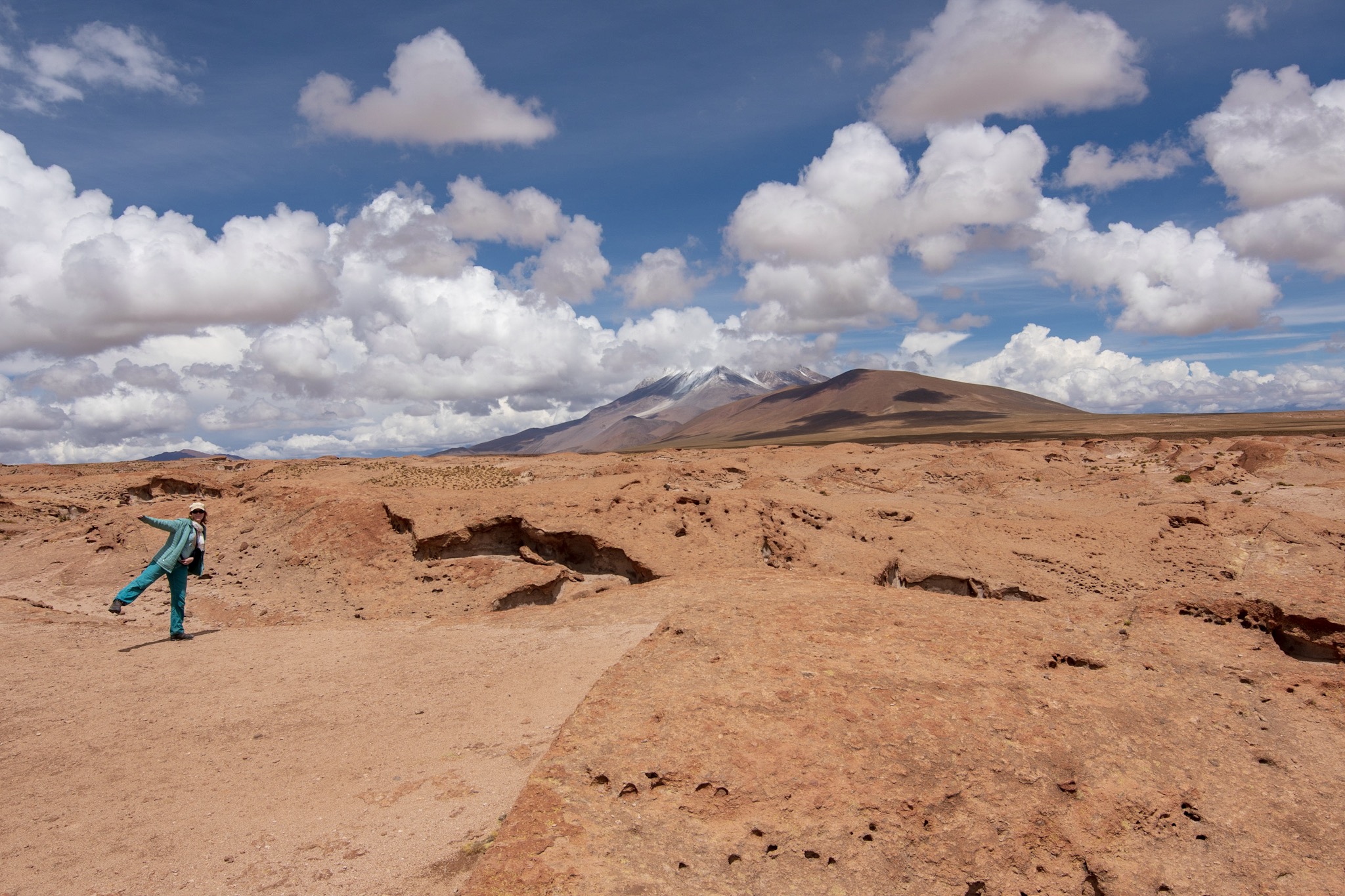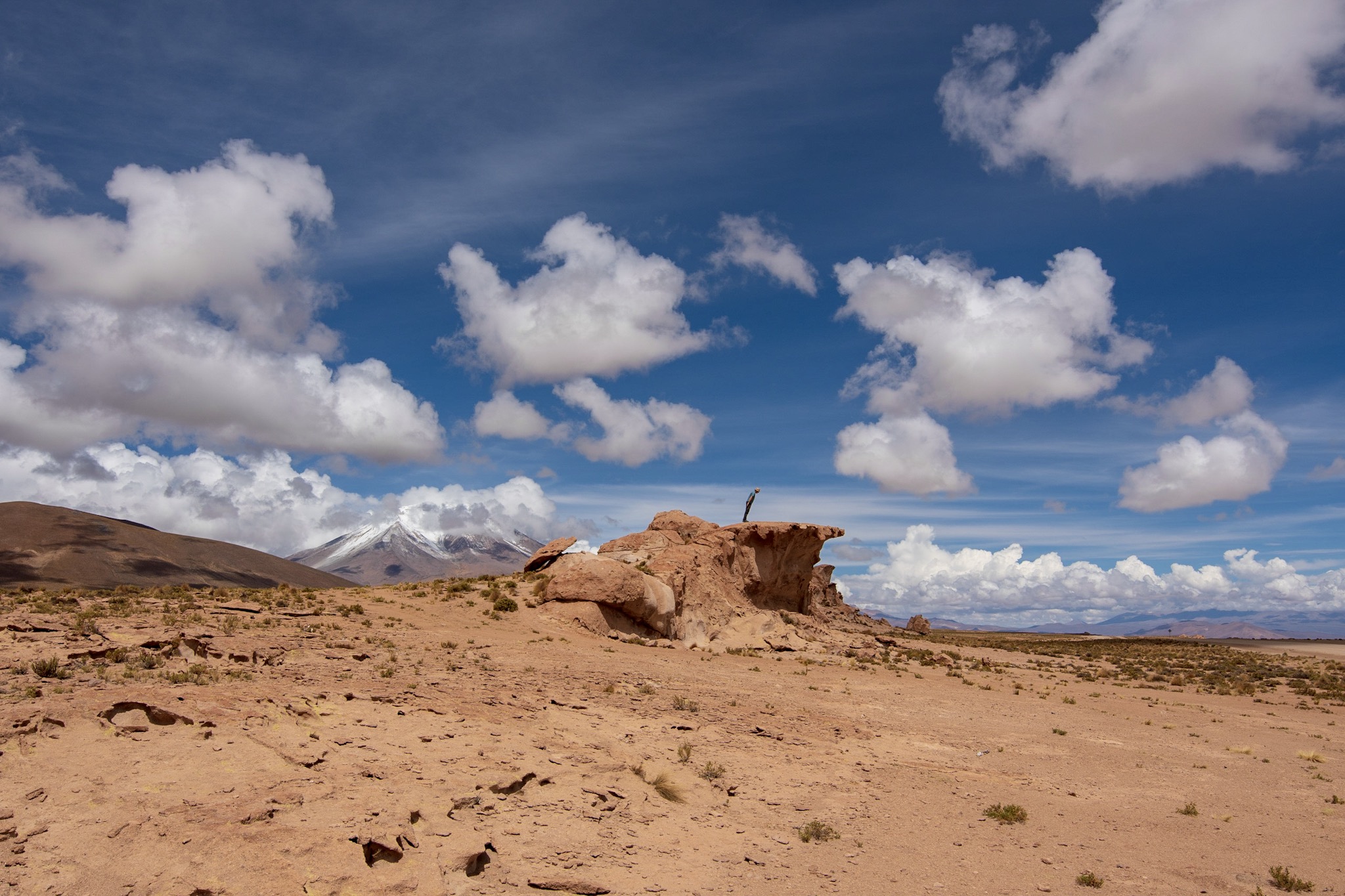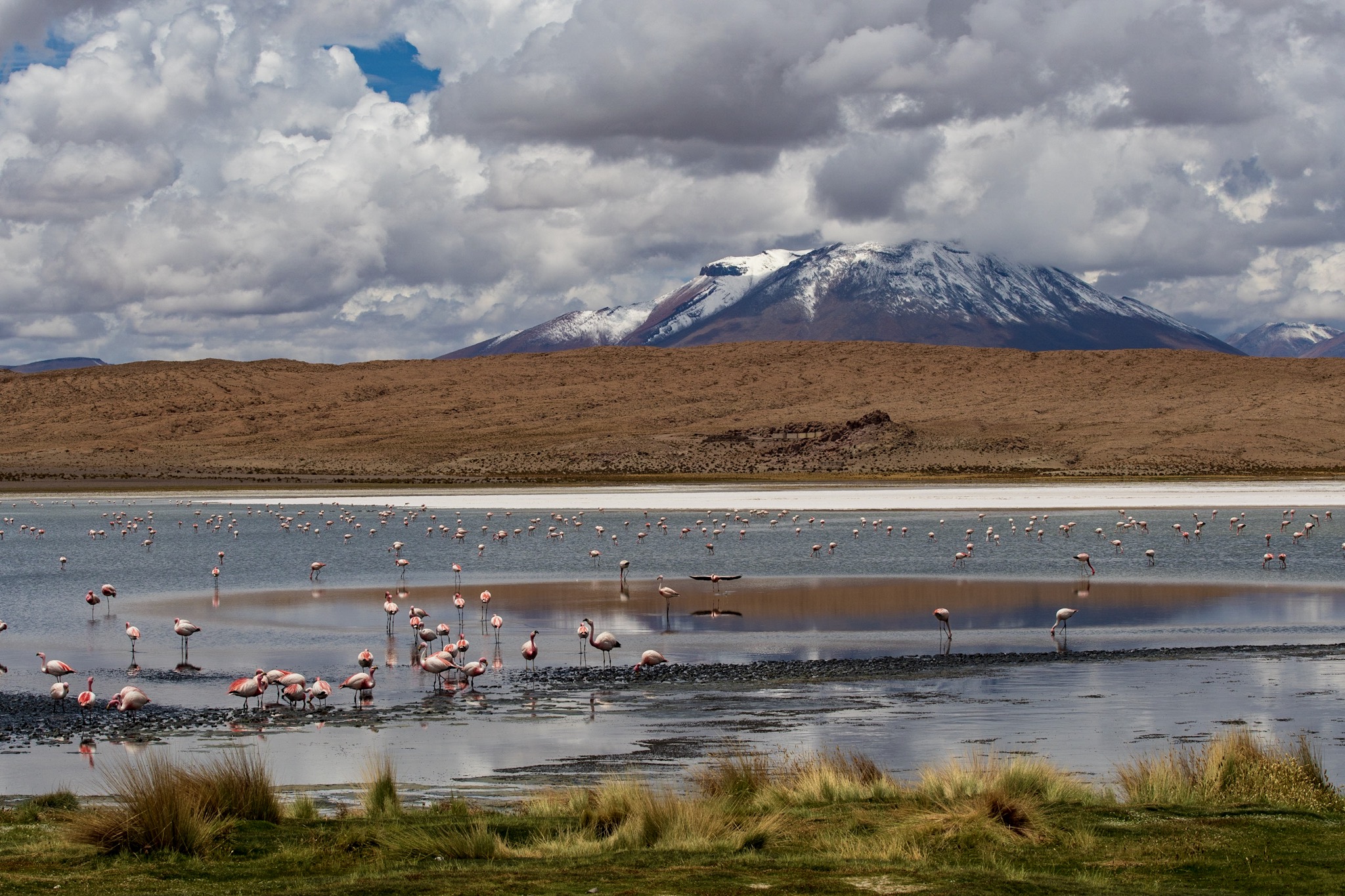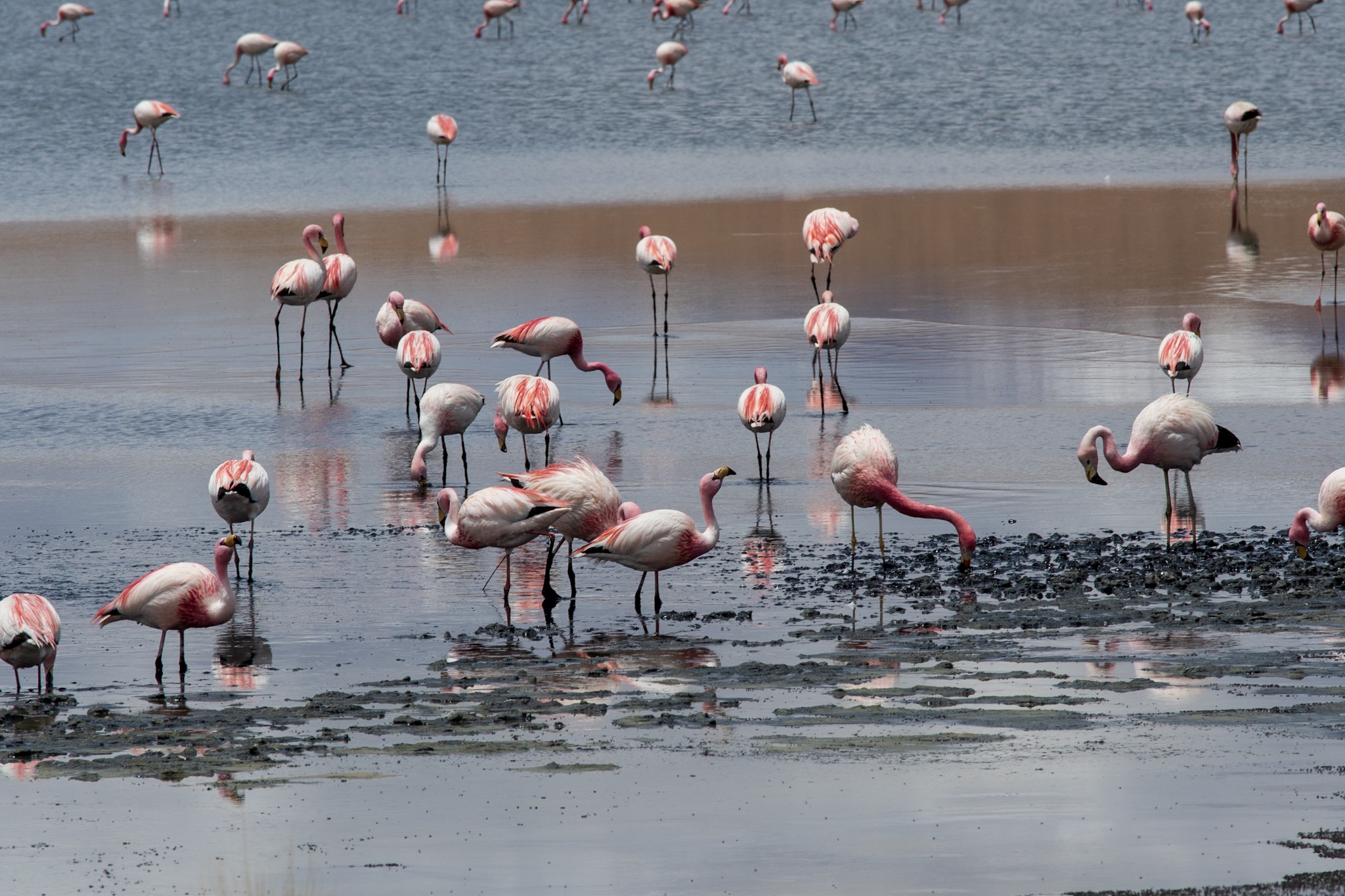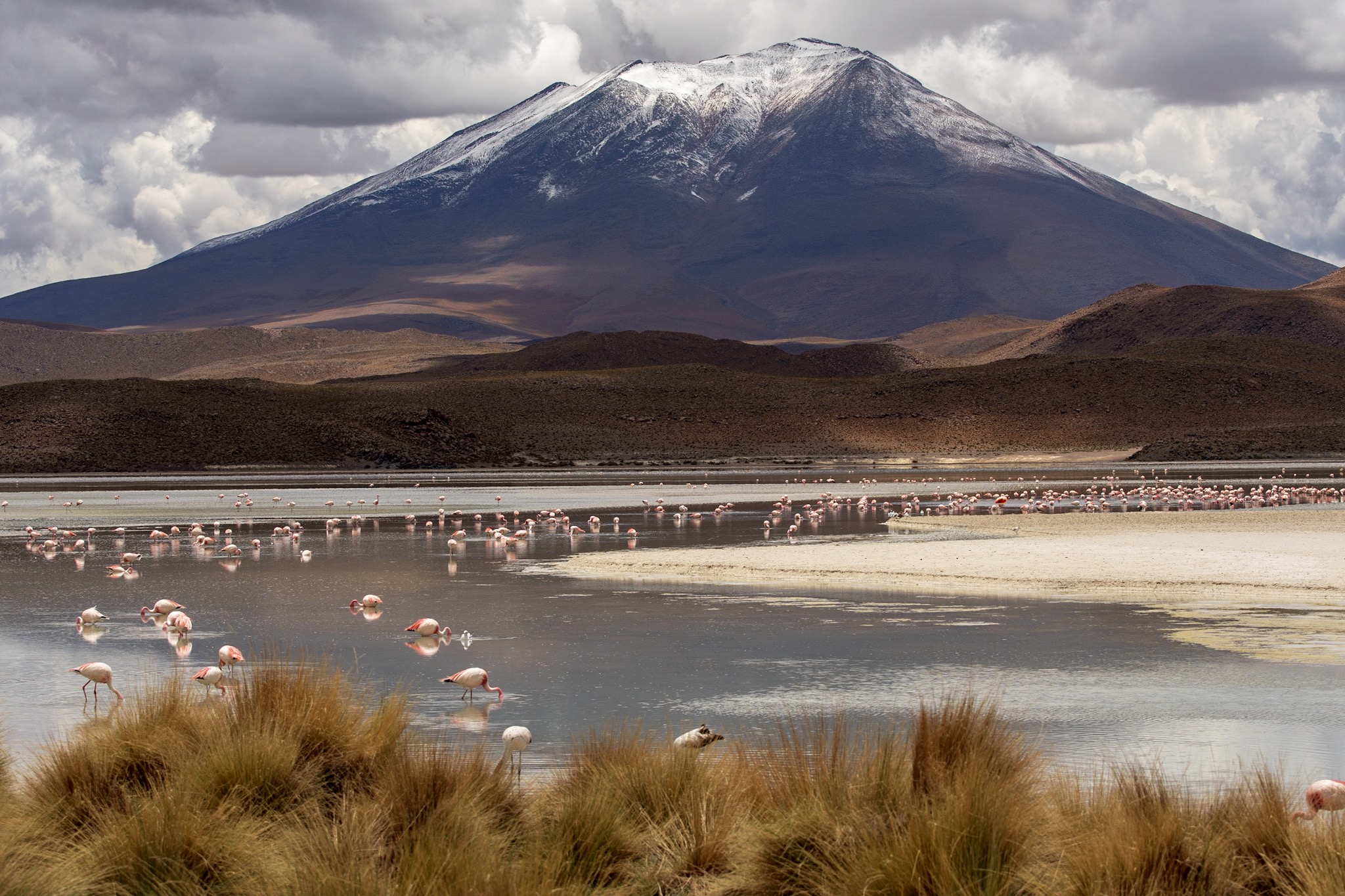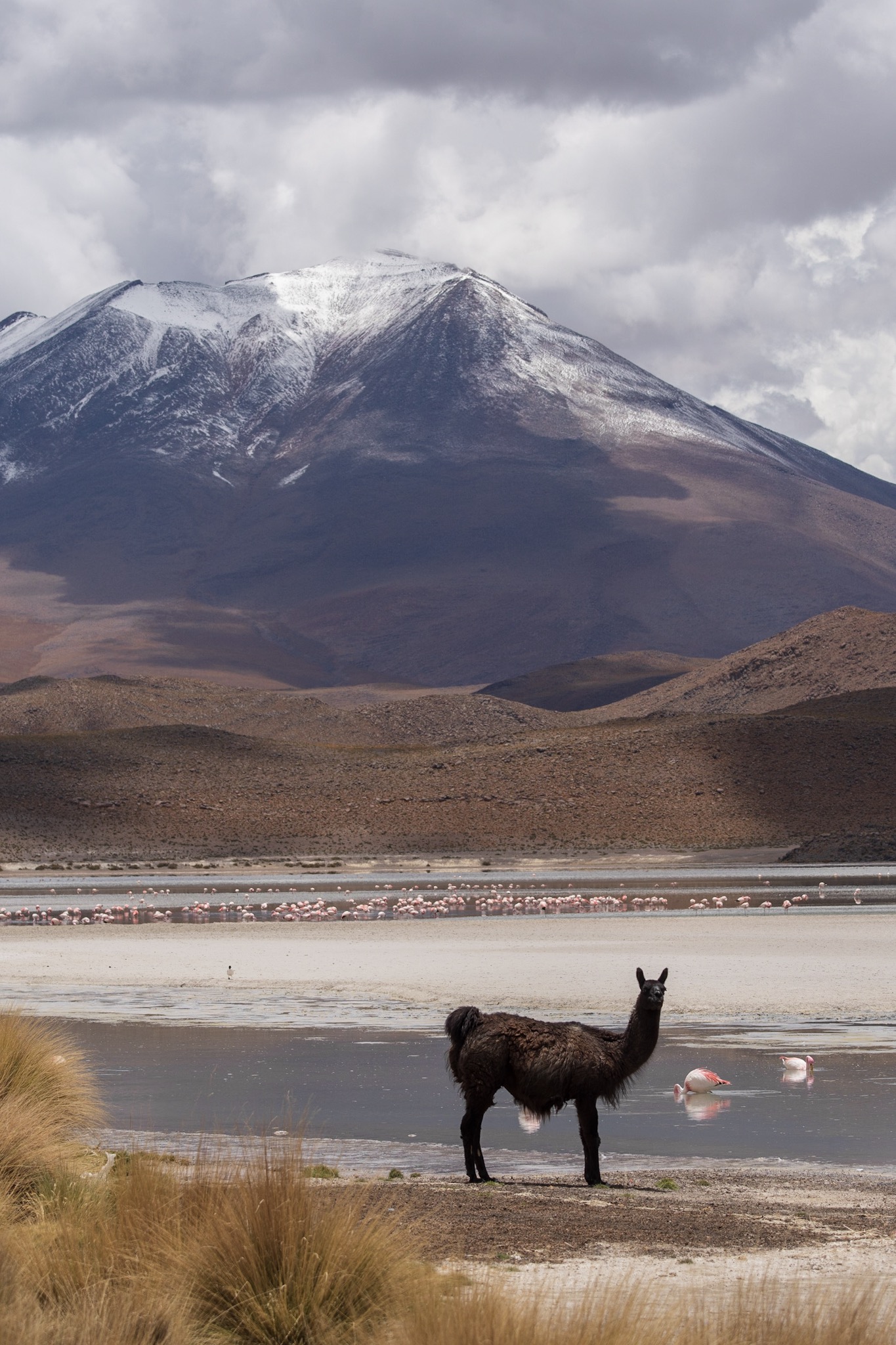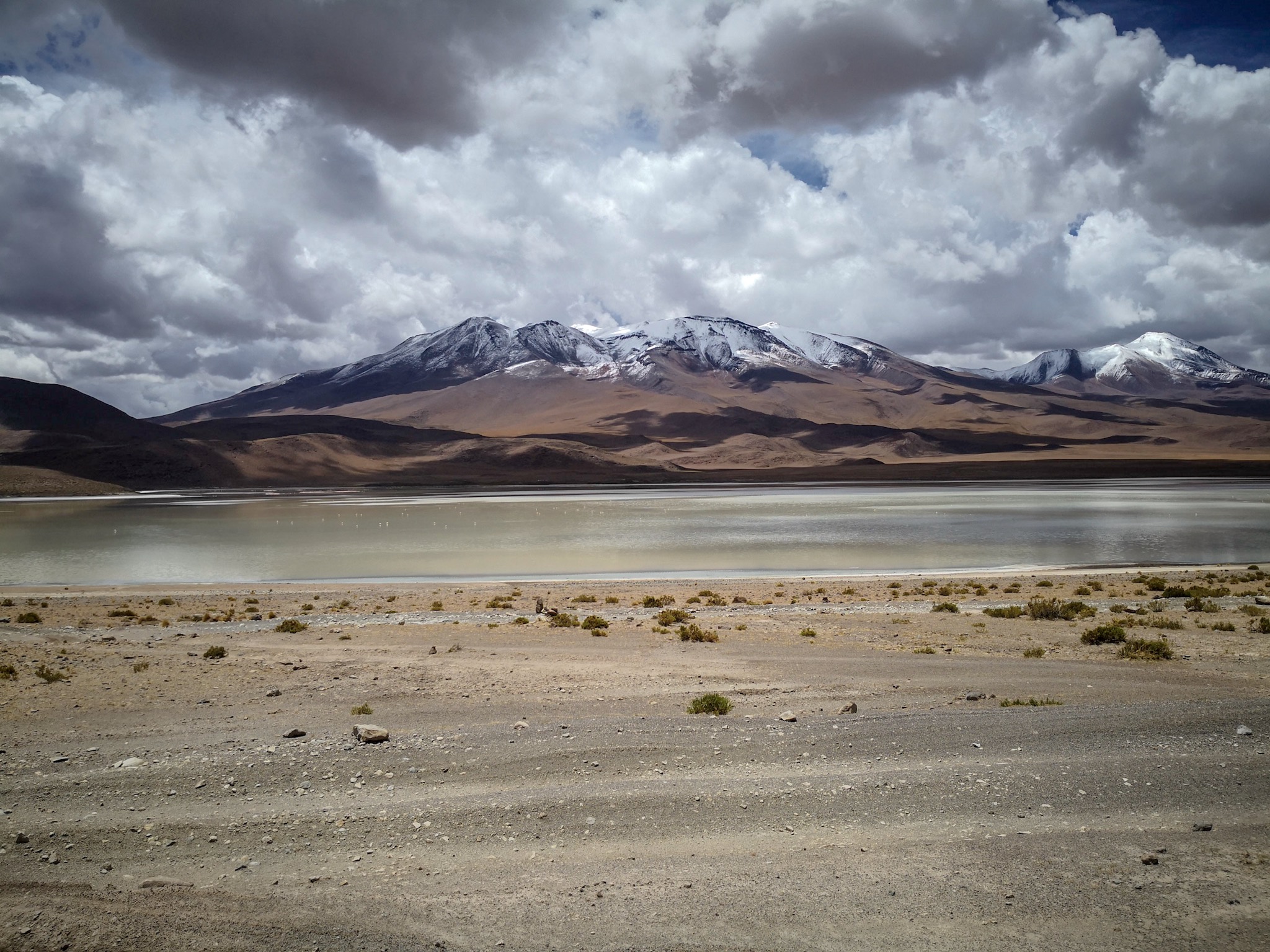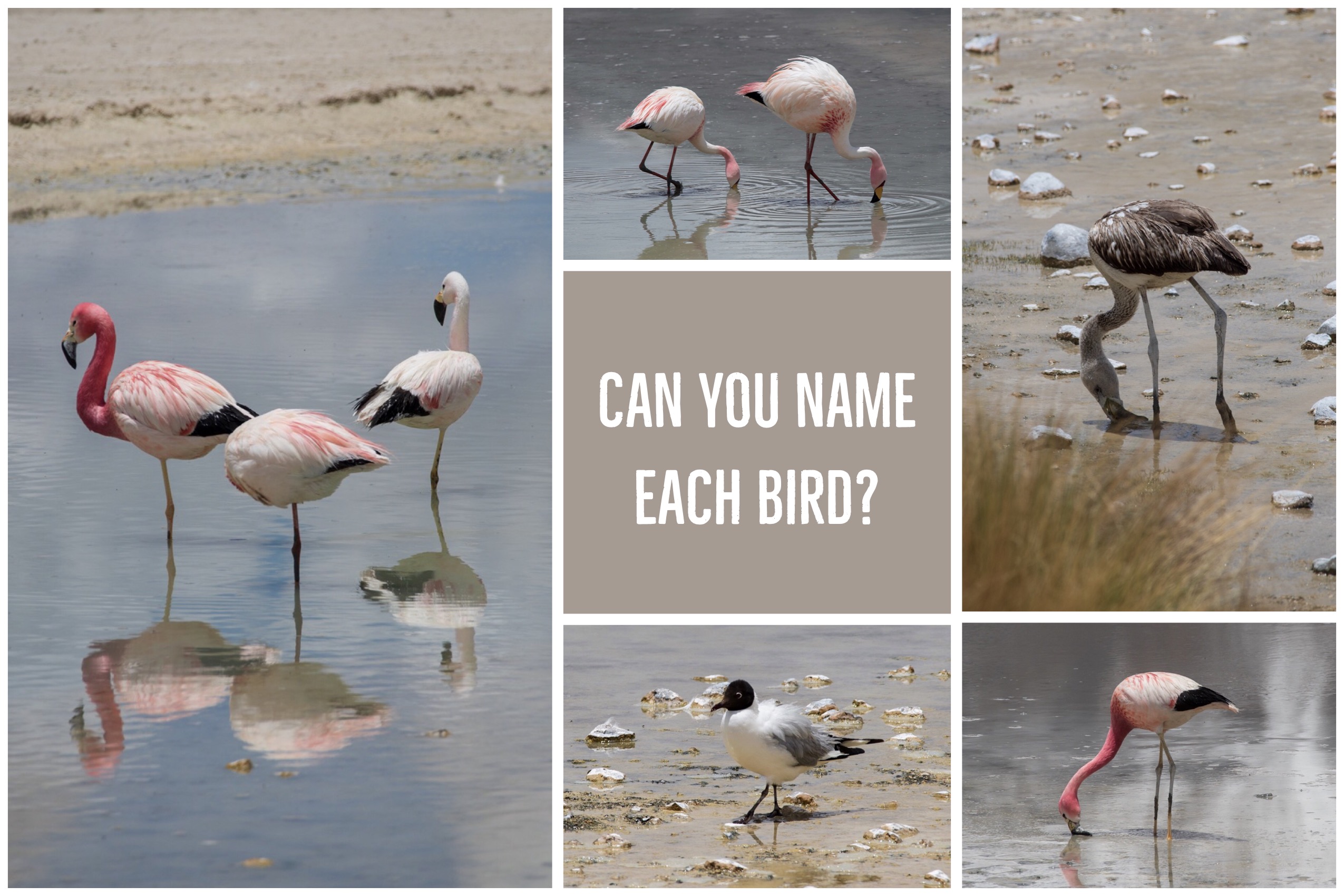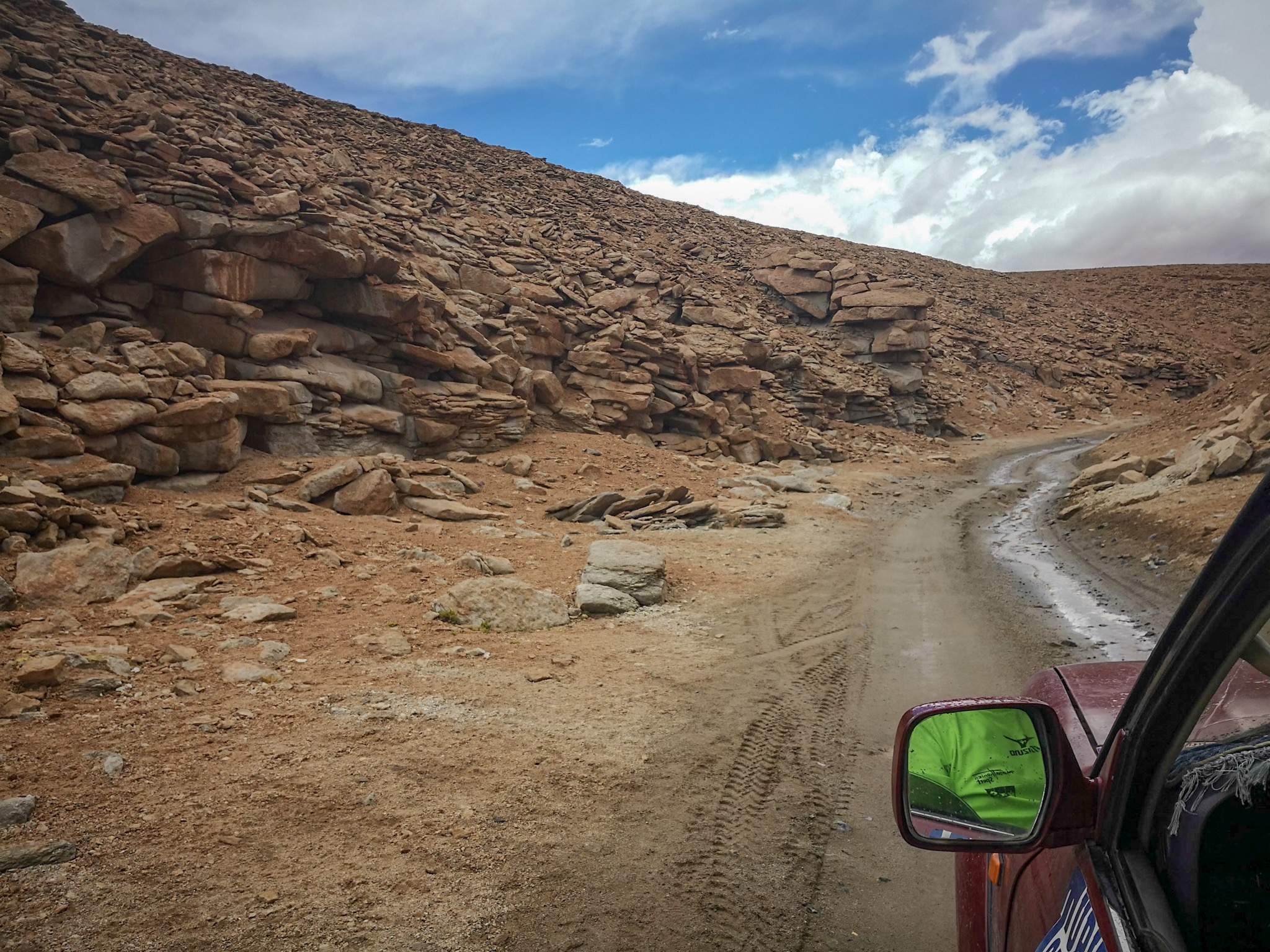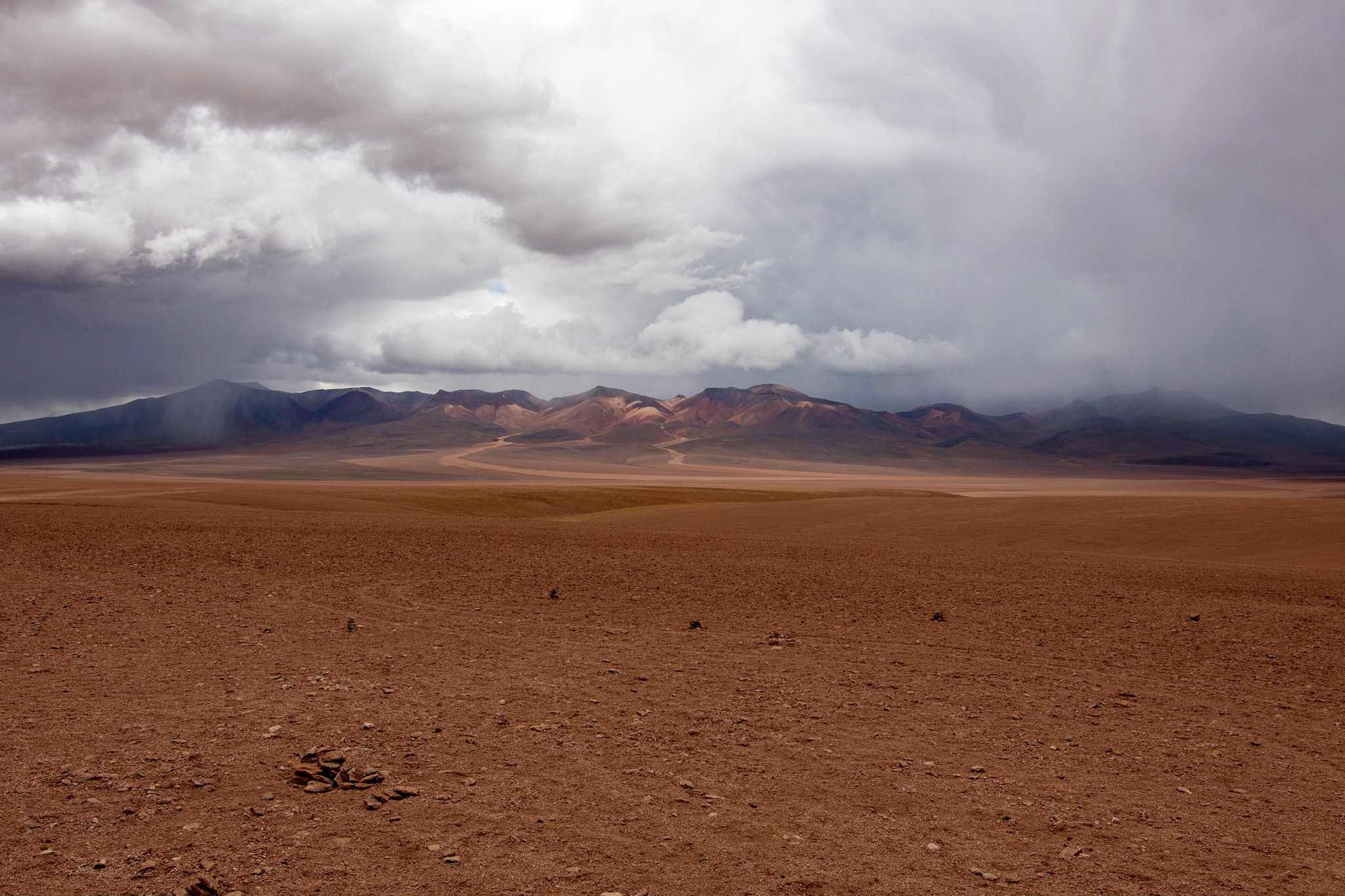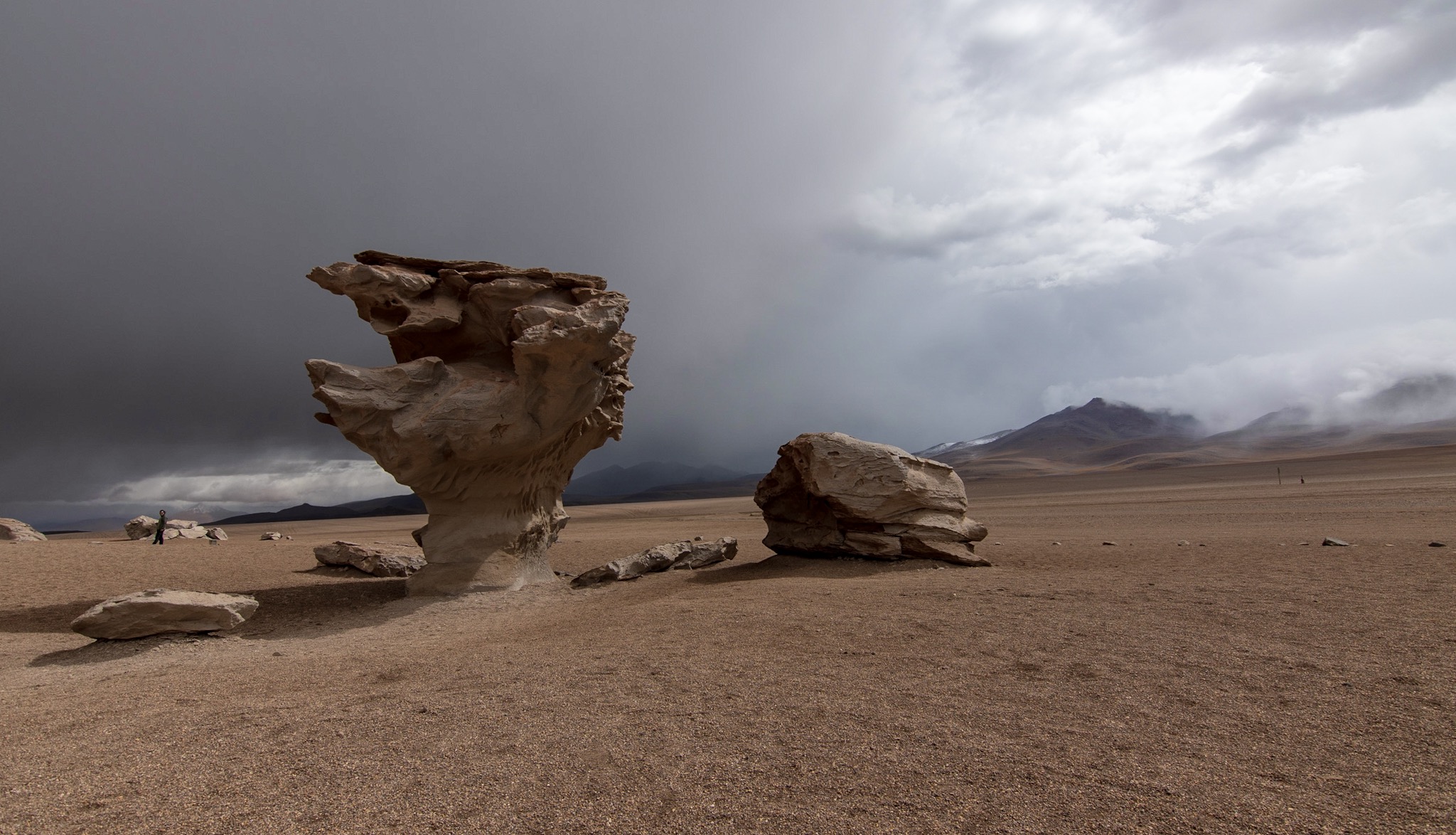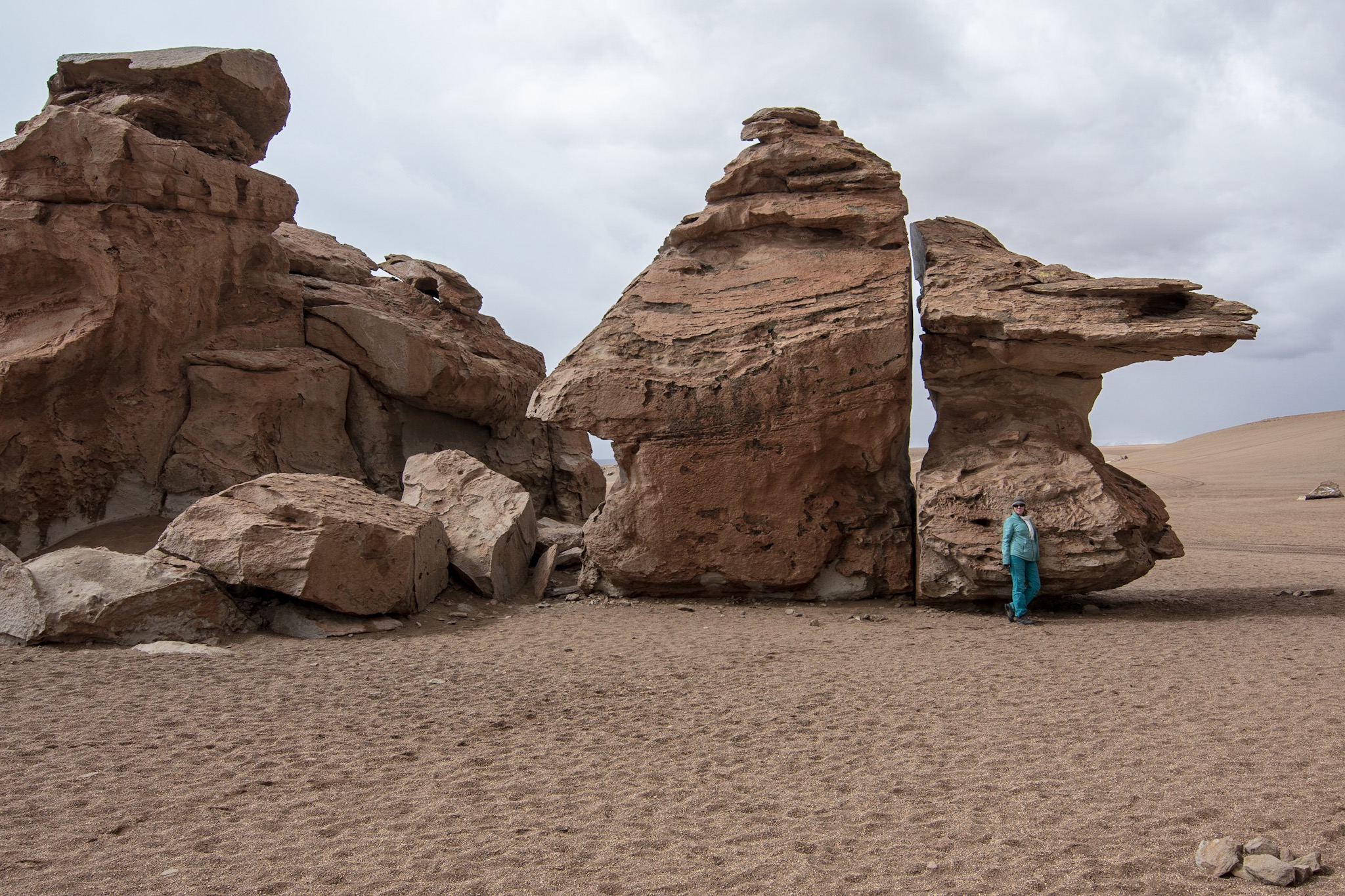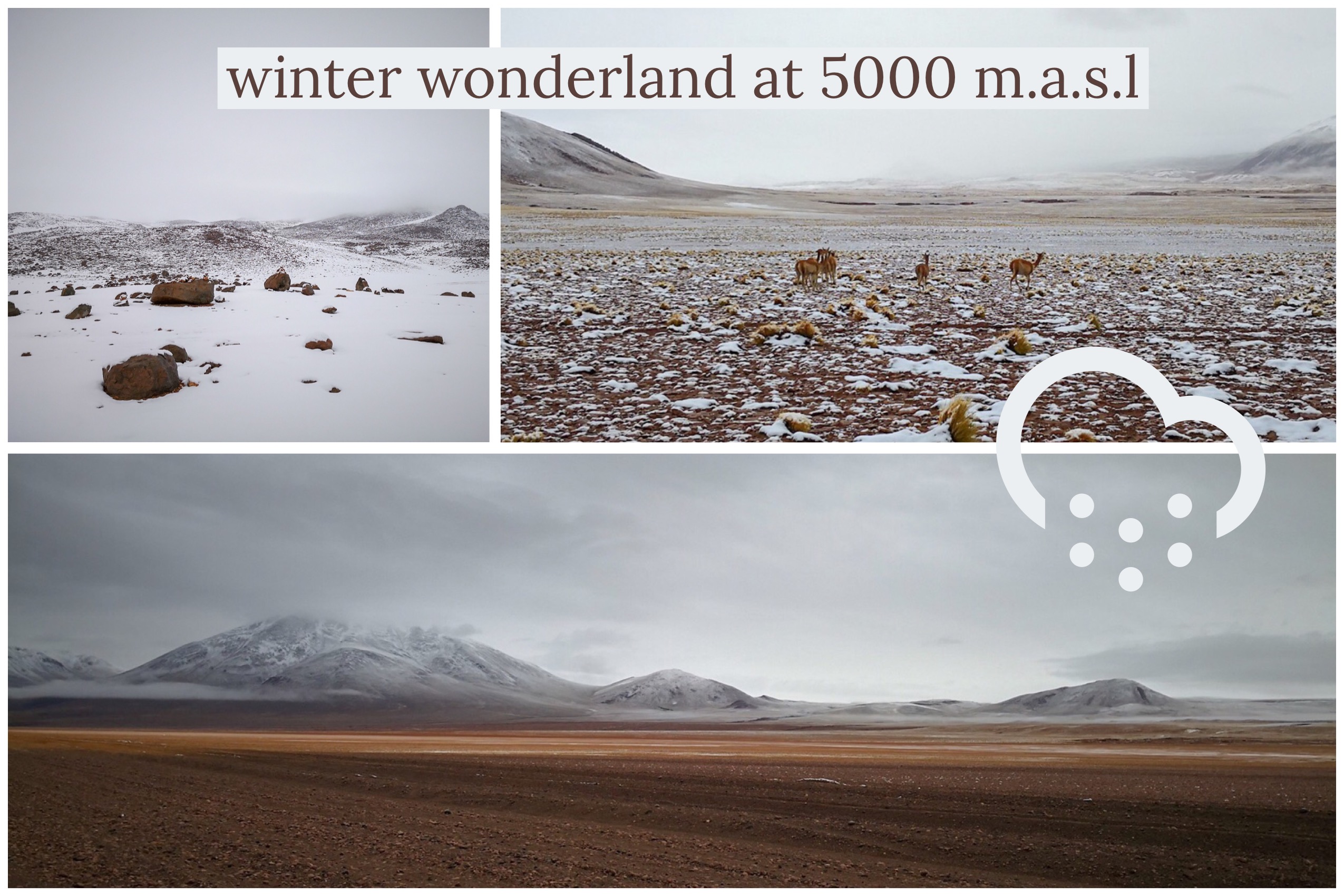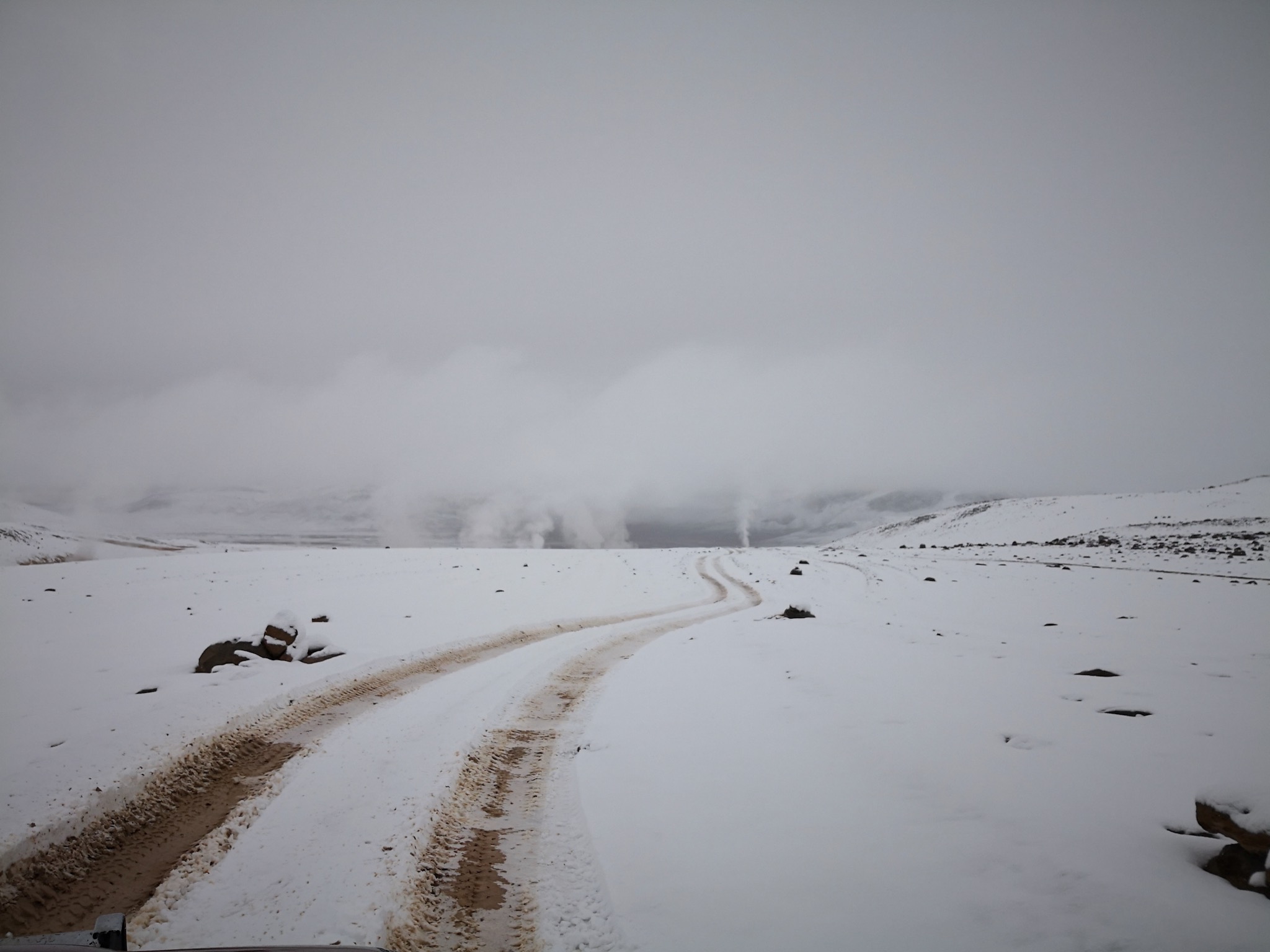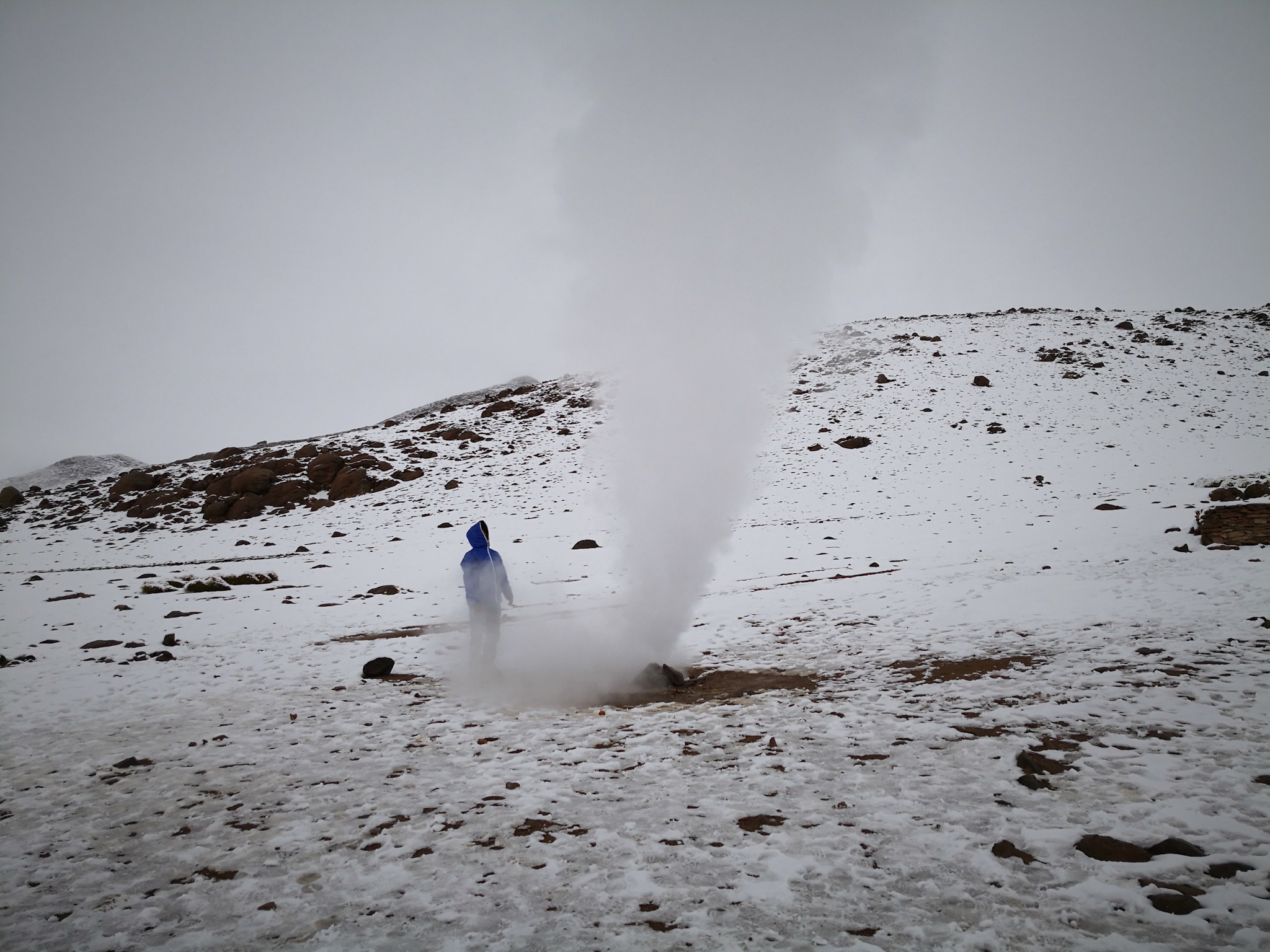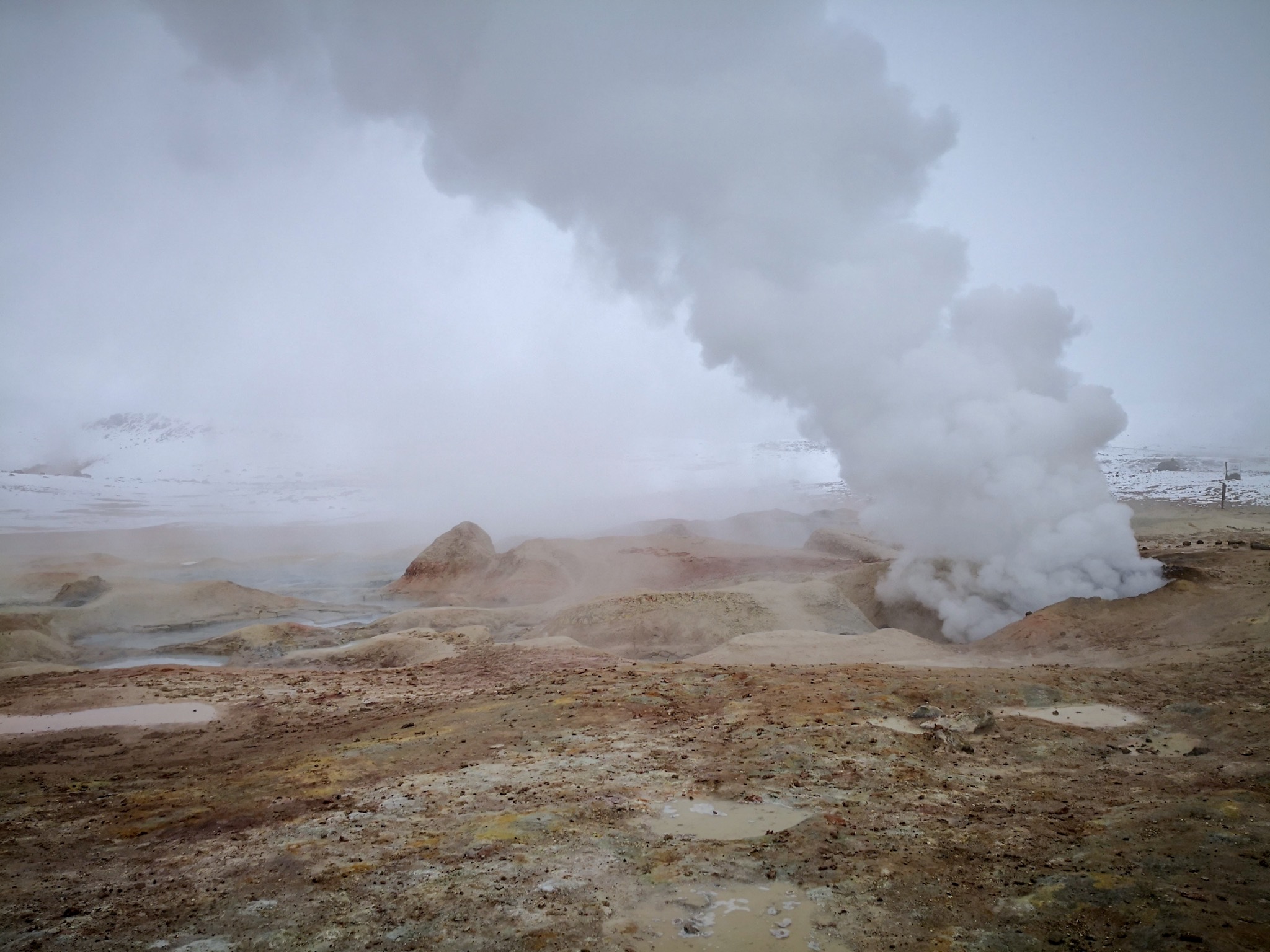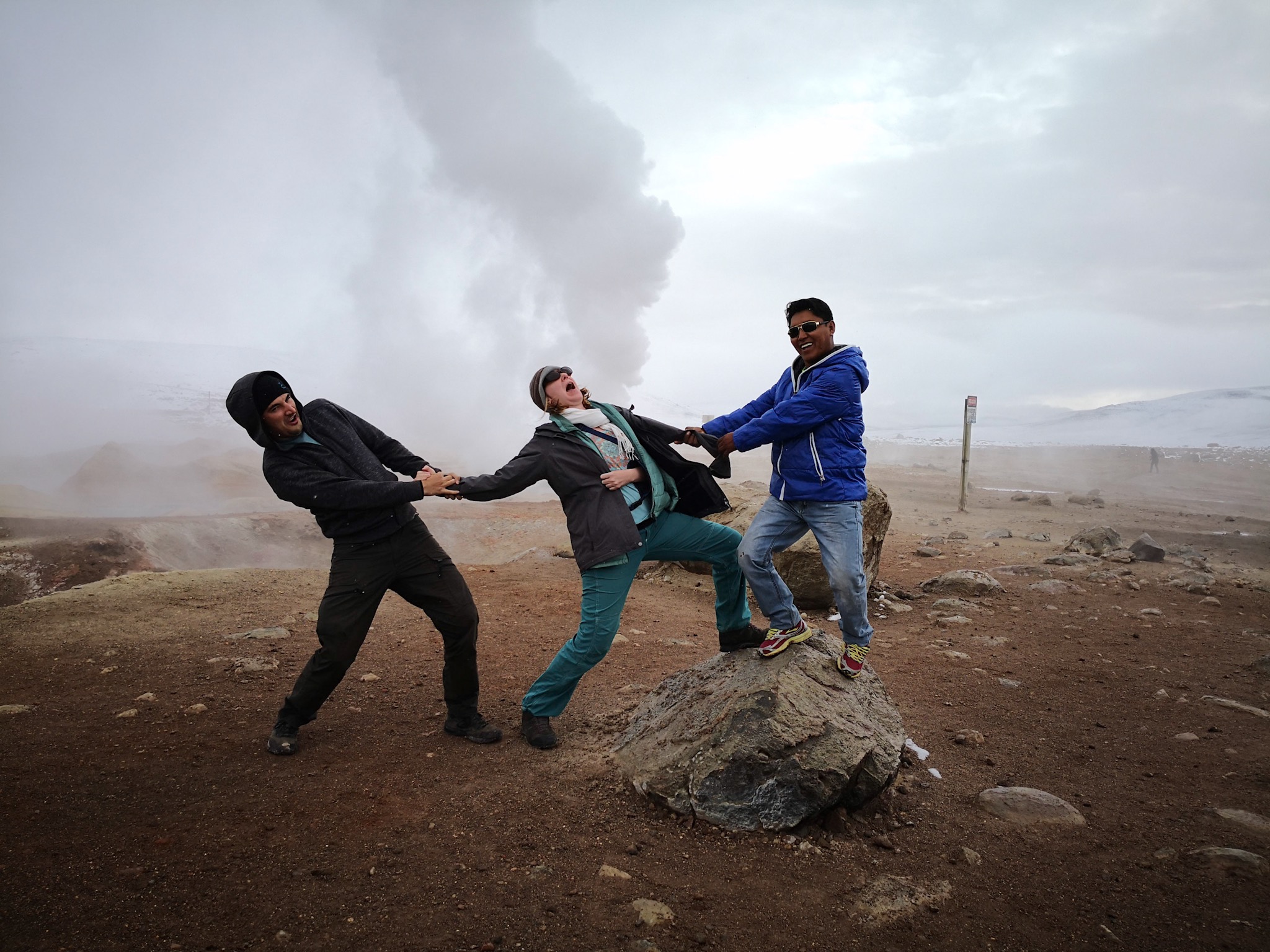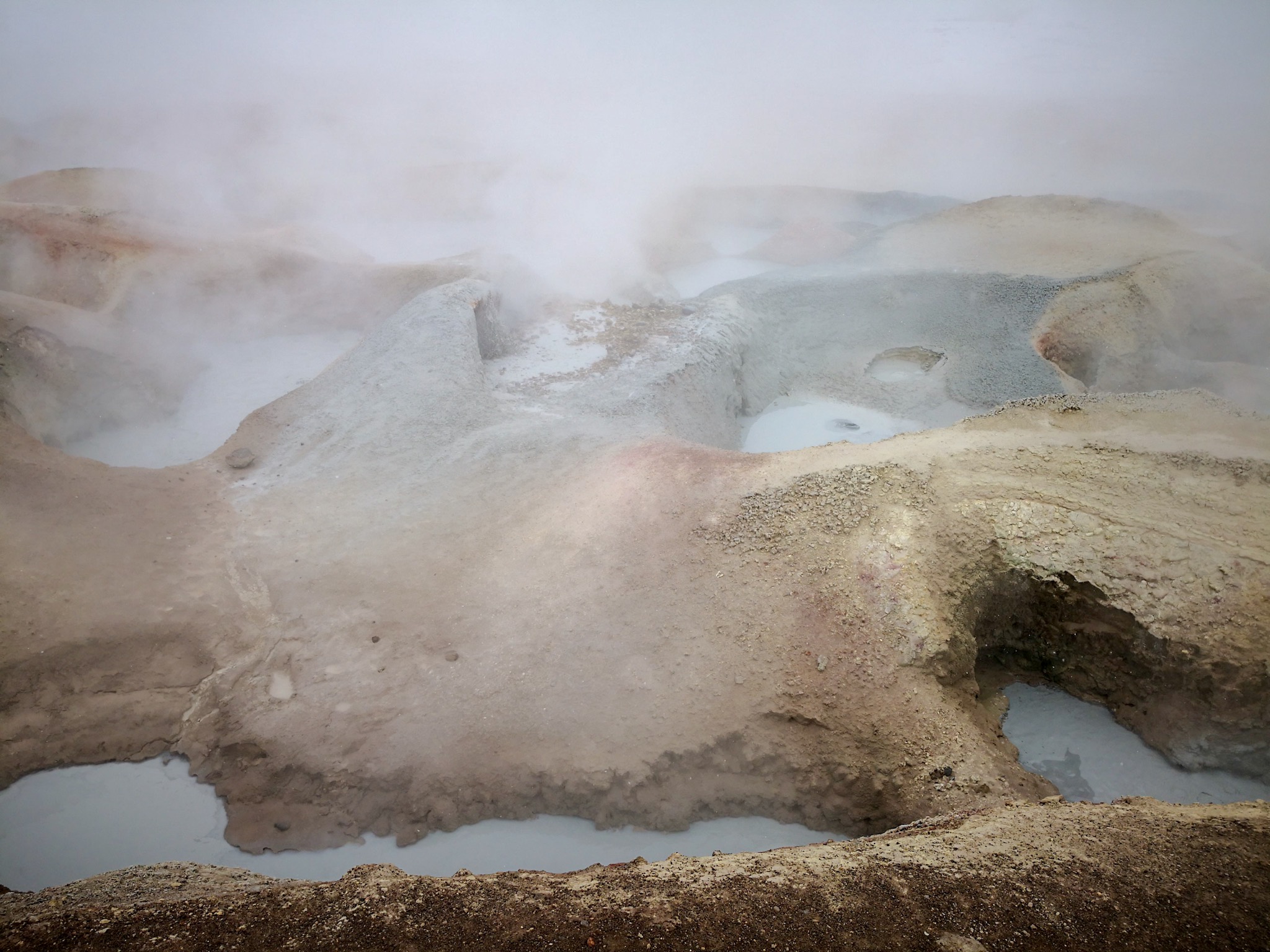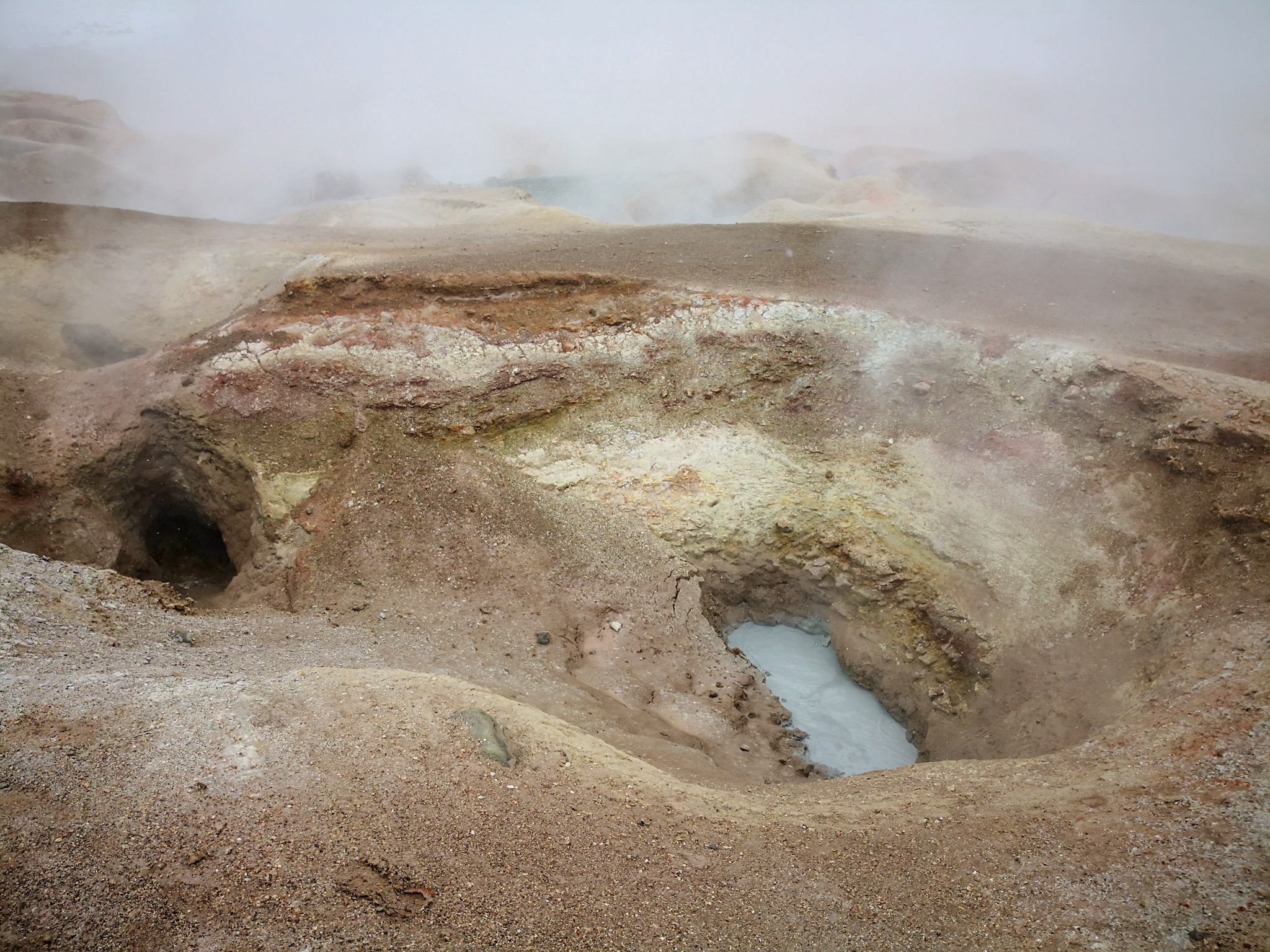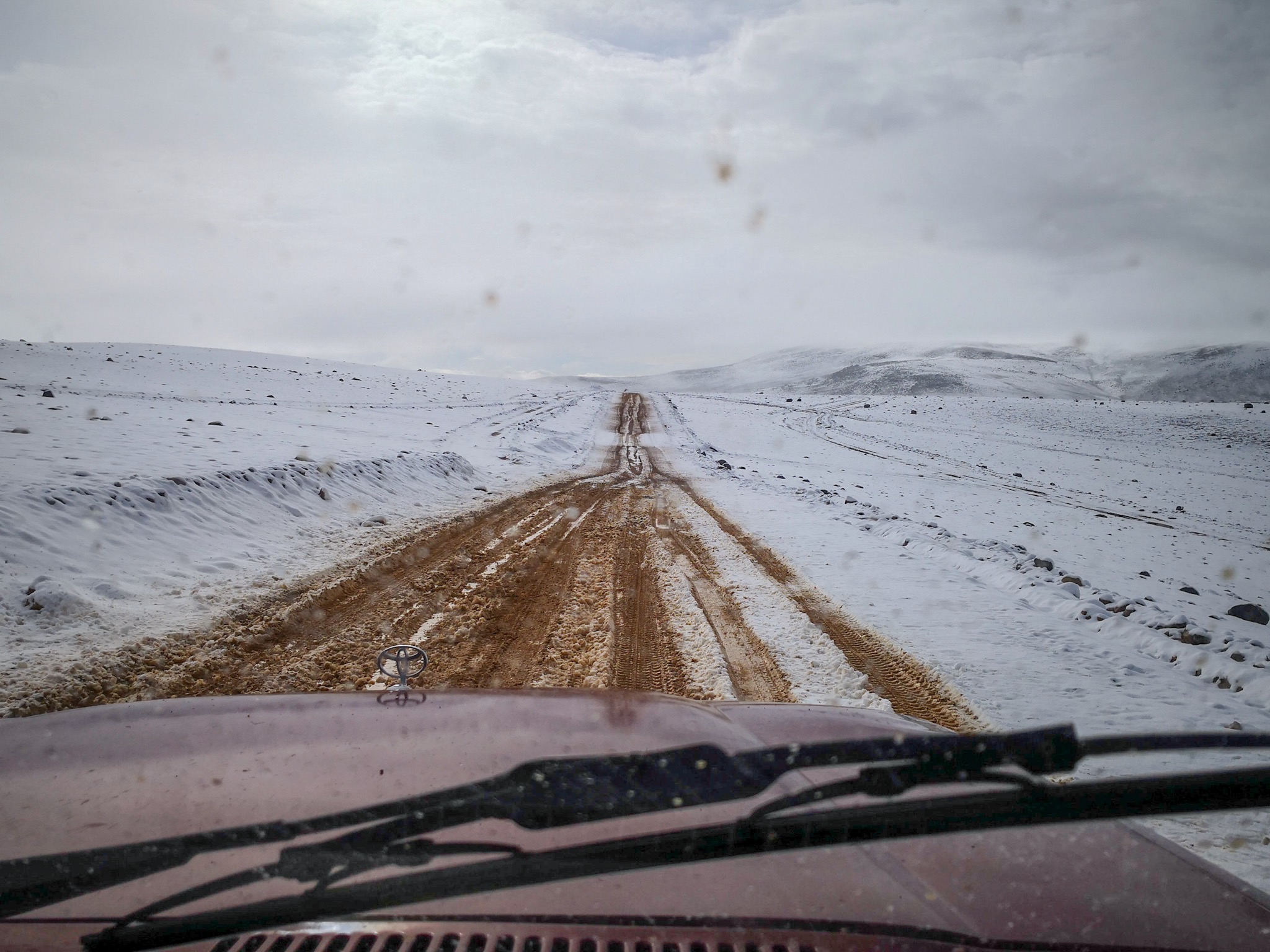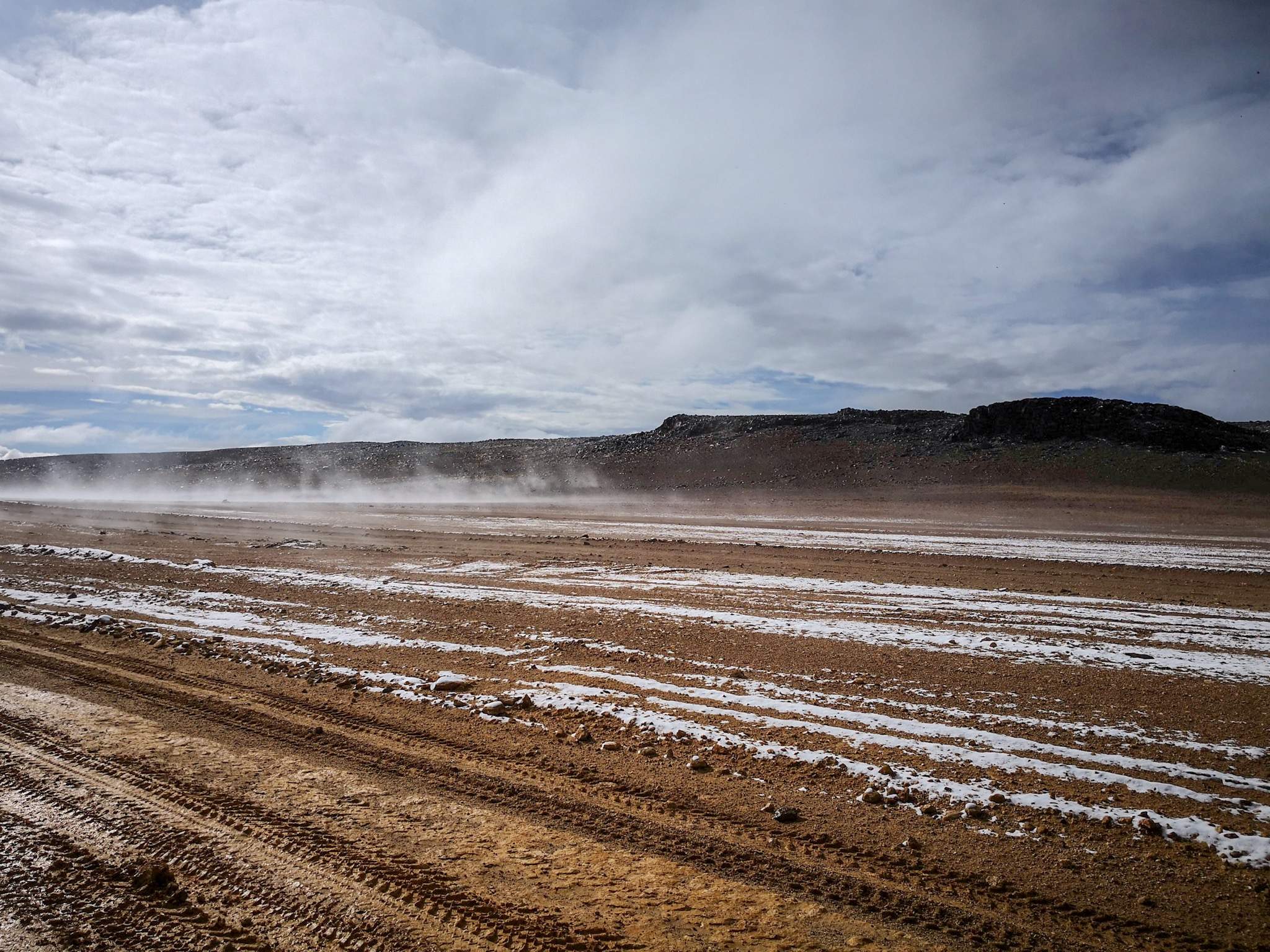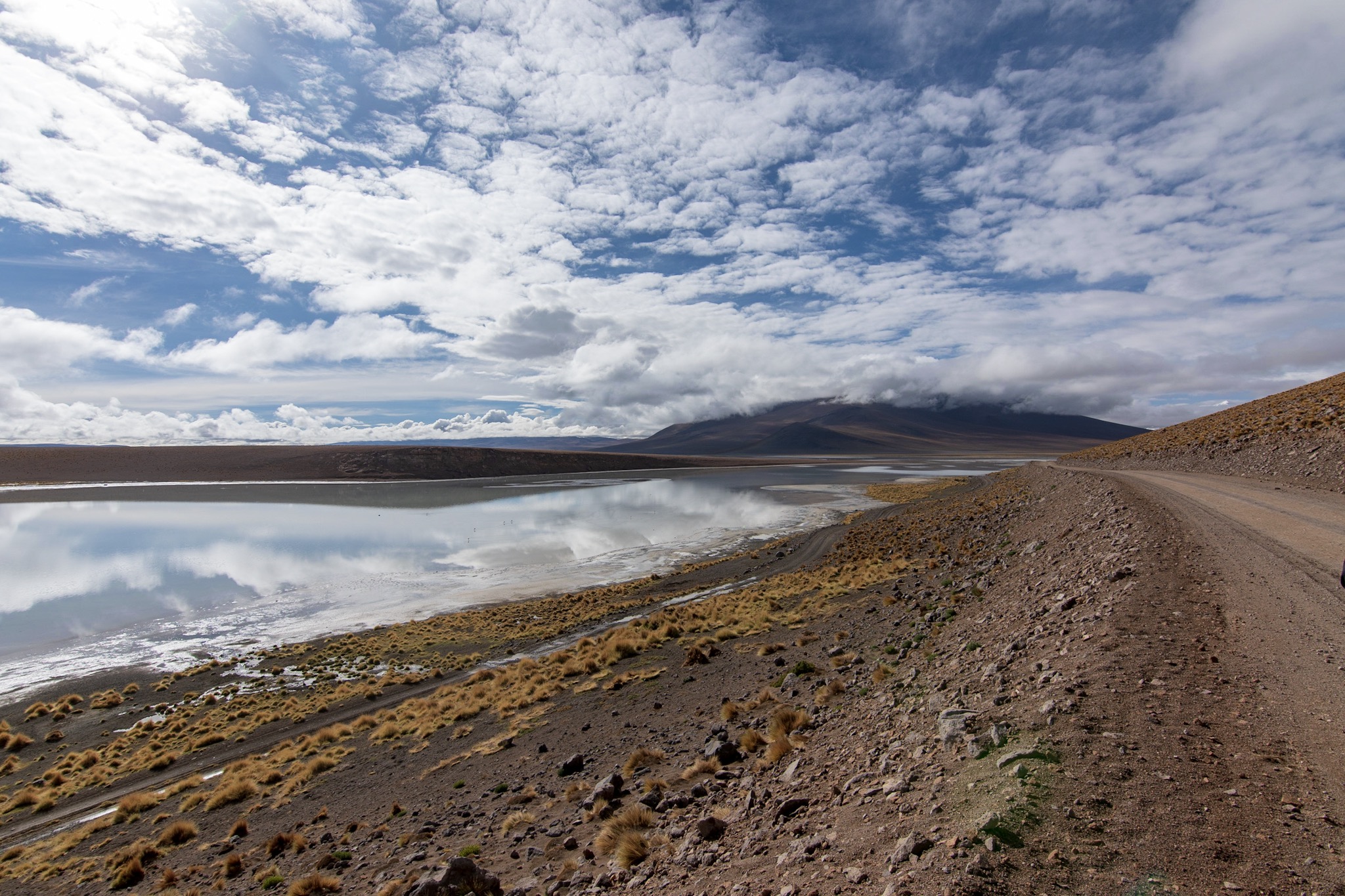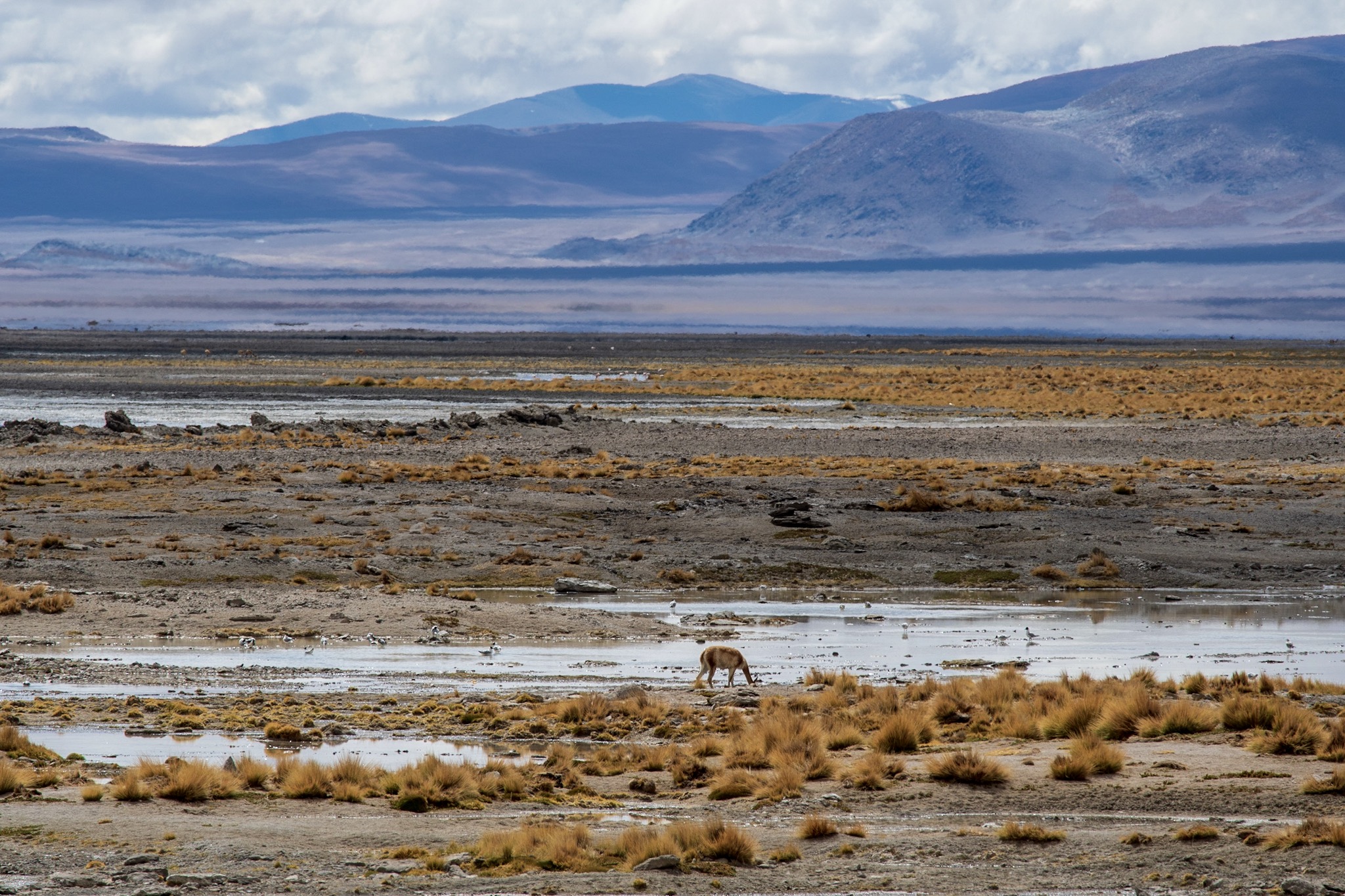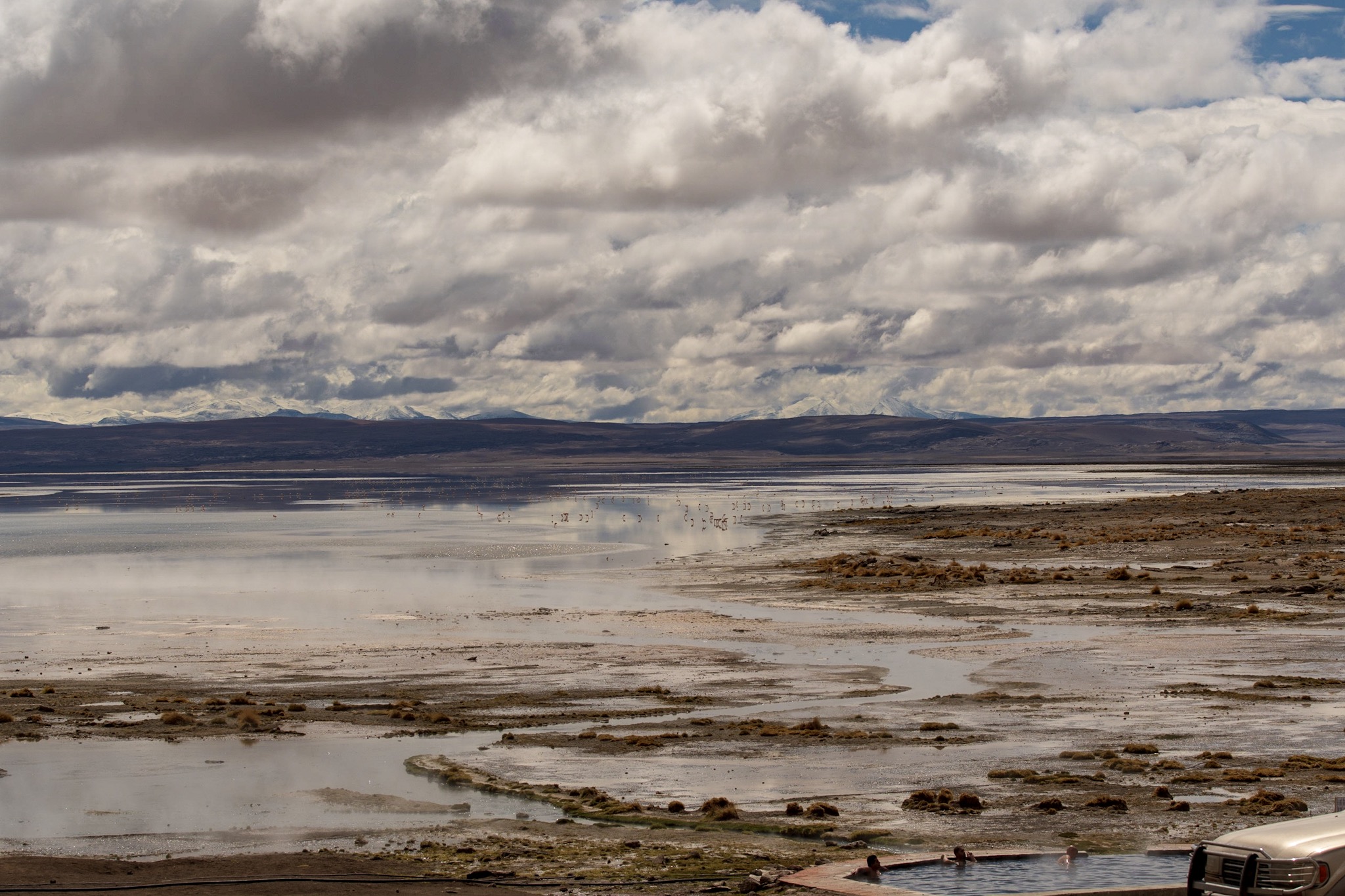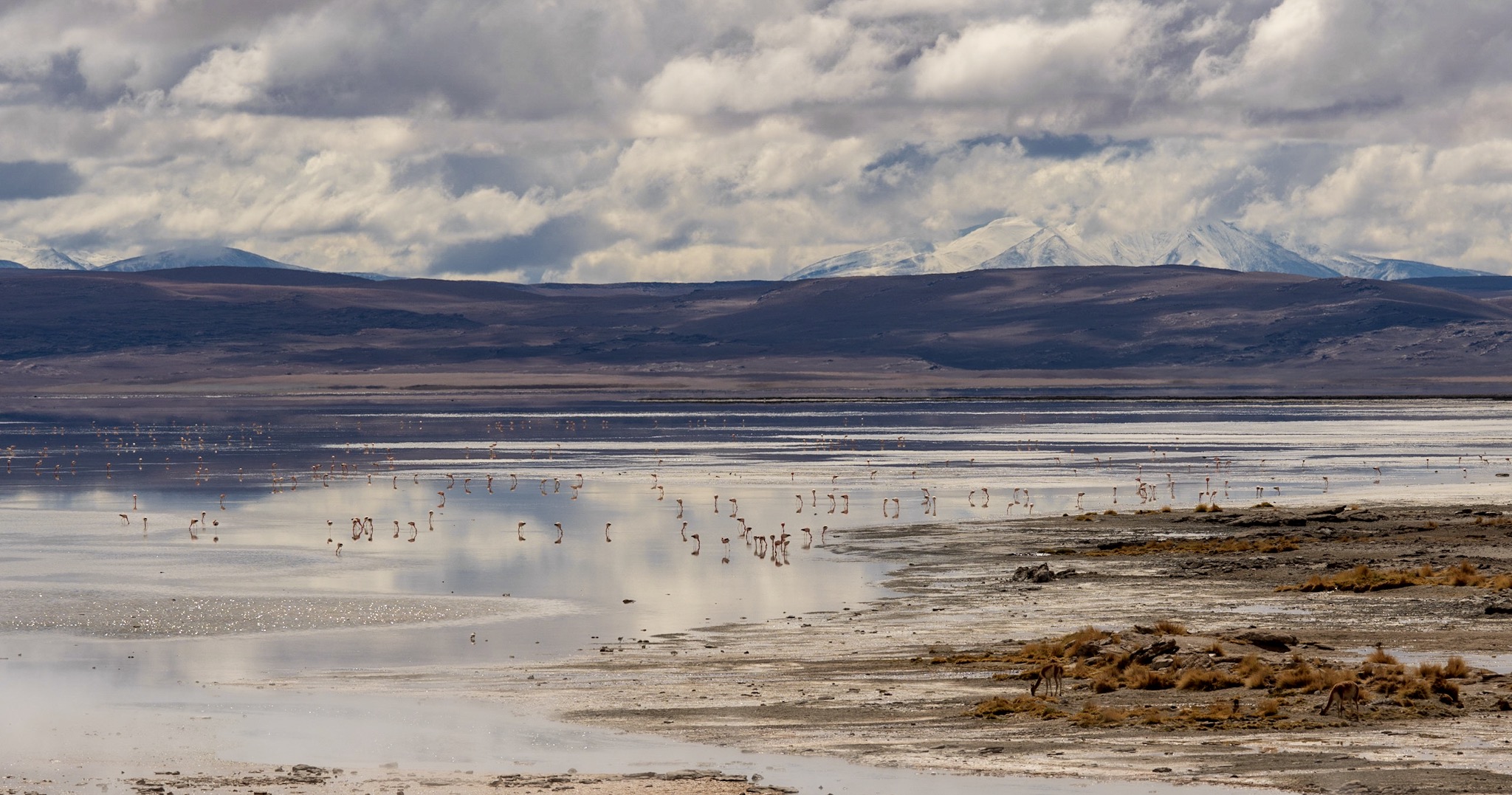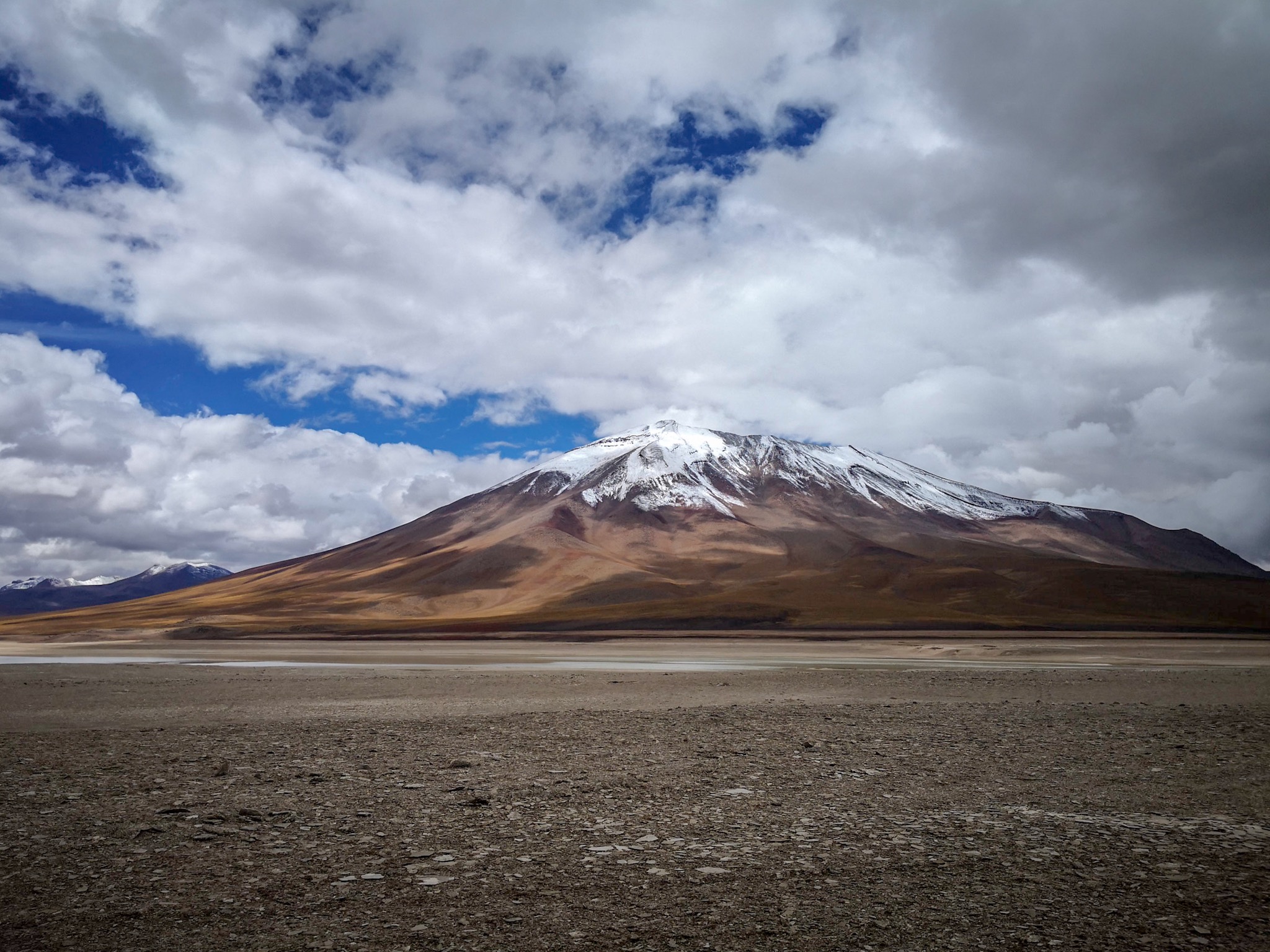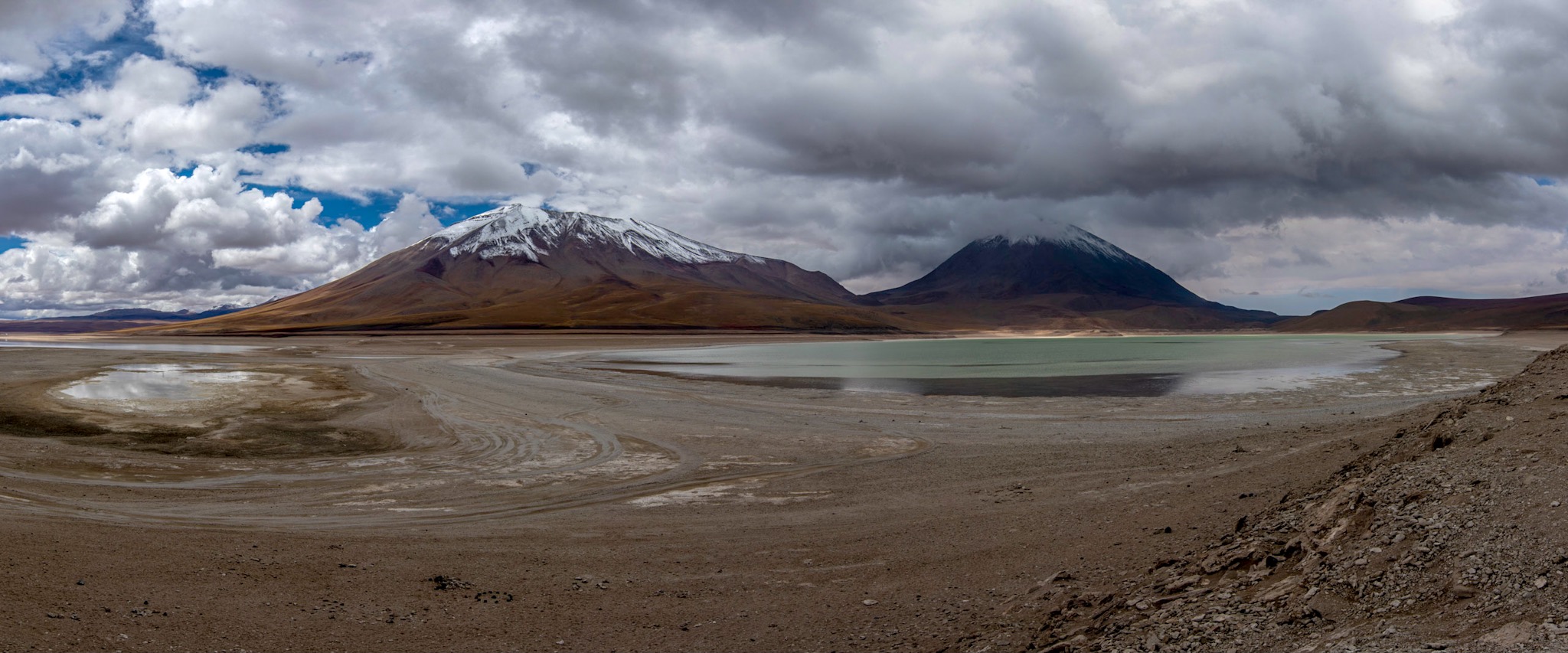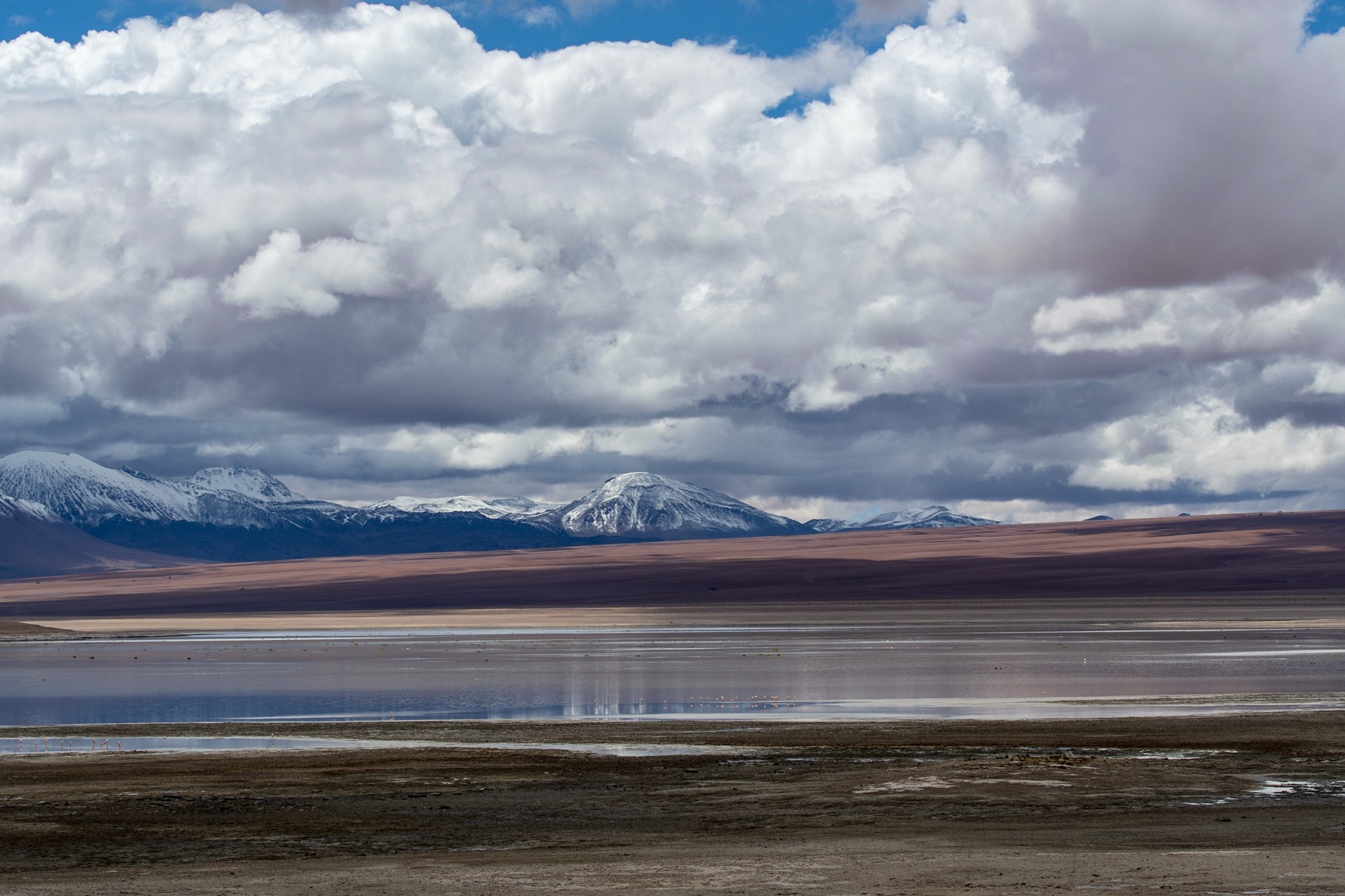Uyuni and the salt flats
On the tracks of Simon Bolivar
Da die Strasse nach Sucre sehr lang und beschwerlich ist und wir Dani's Schulter nicht zusätzlich belasten wollten, entschieden wir uns zu fliegen. Wir fanden einen recht günstig Flug mit der BoA, der Bolivianischen Airline. Der 40-minütige Flug war super sanft und angenehm. Die Fluggäste eher kurrlig, jeder zweite hatte ein riesiges kitschiges Weihnachtsgeschenk bei sich.
Die Stadt selber war sehr angenehm, viele gute Restaurants und Cafés und ein hübscher Stadtkern. Einzig die vielen Bettler, vor allem Kinder, waren nicht so toll. Zum ersten Mal sahen wir hier die freiwilligen Verkehrsordnungs-Zebras, sogar mit Weihnachtshütli ;) mehr dazu hier.
Since the road to Sucre is very long and arduous, we didn't want to put more stress than necessary on Dani's shoulder and we decided to fly. We found a quite cheap flight with BoA, the Bolivian airline. The 40-minute flight was super gentle and pleasant. The passengers were quite funny, every second person had a huge cheesy Christmas present with them.
The city itself was very pleasant, many good restaurants and cafés and a pretty town centre. Only the many beggars, especially children, were not so great. For the first time we saw the voluntary zebra traffic guys, even with a little Christmas hat ;) more on these funny zebras here.
Unser Hostel Kultur Berlin wird von einem Deutschen geführt und bot jeden Abend volles Programm und leckeres Essen und natürlich gutes Bier. Am Freitag Abend kamen wir in den Genuss der Bolivianischen Tanznacht. Die Tänzer führten jeweils verschiedene traditionelle Tänze auf mit unterschiedlichen Kostümen. War sehr laut und unterhaltsam.
Our hostel Kultur Berlin is run by a German and offered a full program every evening and delicious food and of course good beer. On Friday evening we came to enjoy the Bolivian dance night. The dancers performed different traditional dances with different costumes. Loud and entertaining.
Wenn man in Südamerika ist, stolpert man unmissverständlich über den Namen Simón Bolívar. Er ist der Urvater von den heutigen unabhängigen Staaten: Venezuela, Kolumbien, Ecuador und Panama. Auch Peru und Bolivien verdanken ihm viel, weshalb Bolivien sogar nach ihm benannt wurde. Im Nationalmuseum Casa de la Libertad in Sucre erhält man viel Einsichten in die politischen Bewegungen inkl. aller Präsidenten Boliviens (die sich bis Morales fast im Jahrestakt zu wechseln schienen). In diesem Haus wurde Bolivien gegründet und hier sind neben den Überresten auch die Ehrenwaffen und Auszeichnungen von Juana Azurduy de Padilla aufbewahrt, der berühmten Freiheitskämpferin von Bolivien und Argentinien. Bezüglich Argentinien: Wusstet ihr, dass die erste Flagge weiss-blau-weiss war anstelle wie heute blau-weiss-blau? Das allererste Exemplar dieser, quasi die Urflagge Argentiniens, ist ebenfalls hier anzuschauen.
If you are in South America, you will stumble over the name of Simón Bolívar sooner or later. He is like the forefather of today's independent states: Venezuela, Colombia, Ecuador and Panama. Peru and Bolivia also owe him a lot, which is why Bolivia was named after him. At the National Museum Casa de la Libertad in Sucre you get a lot of insights into the political movements incl. pictures of all the presidents of Bolivia (who seemed to change almost every year until Morales came along). In this house Bolivia was founded and besides the remains also the sword and honorary awards of Juana Azurduy de Padilla can be found here. She is a famous female freedom fighter of Bolivia and Argentina. Regarding Argentina: Did you know that the first flag was white-blue-white instead of blue-white-blue? The very first Argentinian flag can also be found here.
Ansonsten haben wir in Sucre nicht sehr viel unternommen, einzig das Saurier-Footprints Museum besuchten wir noch, mehr aus dem Verlangen heraus, noch etwas zu unternehmen. Das Museum befindet sich mitten in einem Kieswerk, das in vollem Betrieb steht. Daher auch die vielen Container vor der “Wand” mit den Abdrücken. Diese wurden durch die Arbeiter während Grabungen gefunden und gemeldet. Was uns richtig imponiert hat war, zu sehen, wie sich die Erde verändert durch die Plattenverschiebung. Die Wand mit den Abdrücken war nämlich ursprünglich ein Strand aus Lehmboden, wo die Saurier durch gingen, um zum Wasser zu kommen.
Otherwise we didn't do a lot in Sucre, we only visited the Saurier-Footprints Museum, more out of the desire to do something. The museum is located in the middle of a gravel plant that is in full operation. Therefore you see many containers in front of the footprint wall. These prints were found and reported by the workers during excavations. What really impressed us was to see how the earth changed by the movement of the tectonic plates. The wall with the prints was originally a beach of clay soil, where the dinosaurs went through to come to the water.
Blood for Silver - the old Mining Town Potosi
Mit dem Bus gings weiter nach Potosi, eine alte Minenstadt die bereits von den Inkas genutzt wurde. Die erste spanische Besetzung baute dank Zwangsversklavung der Bevölkerung intensiv ab, was zu einer weltweiten Silberinflation führte und rund 8 Millionen Toten. Viele der hart arbeitenden Indigenen starben durch die extremen Bedingungen, besonders da sie meist nicht aus den Bergregionen stammten und Potosi auf 4000 Höhenmeter liegt.
Der Berg Cerro Rico gibt bis heute noch Silber- und Zinnvorkommen her, welches unter haarsträubenden Sicherheits- und Umweltbedingungen gewonnen wird (Quecksilber ist unerlässlich für die Silber Gewinnung). Wer keine Platzangst hat, darf sich das harte Leben der Minenmenschen von nahem ansehen und auf dem lokalen Markt Dynamit kaufen (ganz legal). Obwohl Kinderarbeit offiziell verboten ist, arbeiten auch heute noch um die 800 Kinder in den Minen.
Da Dani noch etwas unflexibel war liessen wir die Minentour aus und erkundeten den Dorfkern mit seinen Kolonialbauten.
By bus we went on to Potosi, an old mining town which was already used by the Incas. The first Spanish occupation mined heavily thanks to slavery, which led to a worldwide silver inflation and about 8 million deaths. Many of the hard-working indigenous people died from the harsh conditions, especially as they did not come from the mountain regions and Potosi is at 4000 metres in altitude.
The Cerro Rico mountain still has silver and tin deposits which are obtained under outrageous safety and environmental conditions (quicksilver is indispensable for the silver extraction). Those who do not have a claustrophobia may look at the hard life of the miners from up close and buy dynamite on the local market (quite legal). Although child labour is officially prohibited, around 800 children still work in the mines.
Since Dani was still somewhat inflexible, we didn't go to the mines and instead explored the village centre with its colonial buildings.
Zu Weihnachten suchten wir uns ein nettes Restaurant das offen hatte, mit wenig Erfolg. Viele waren geschlossen oder überfüllt. Mit etwas Glück ergatterten wir den letzten Tisch in einem kleinen Restaurant. Wenig später kam ein zweites Pärchen rein, wurde aber abgewiesen weil es keinen Platz mehr hatte, doch an unserem Tisch hatten locker noch zwei weitere Personen Platz. So stand Dani auf und fragte den Besitzer ob das Pärchen nicht zu uns sitzen könnte. Der Besitzer meinte dass ginge nicht, schliesslich sei das unser Tisch, worauf Dani meinte: Aber Señior heute ist doch Weihnachten! Worauf er lachend einwilligte. Das Pärchen aus Frankreich war super froh, auch sie waren schon seit einer Stunde am suchen. So feierten wir Weihnachten mit neuen Freunden.
At Christmas we were looking for a nice restaurant that was open, with little success. Many were closed or crowded. With a bit of luck, we got hold of the last table in a small restaurant. A Little later a second couple came in, only to be turned down because it had no space left. However our table could easily fit two more people. So Dani got up and asked the owner if the couple could sit with us. The owner declined, since it was our table. To which Dani said: But Señior today is Christmas! He laughed and agreed. The couple from france was super happy, they too had been looking for an hour. That's how we celebrated Christmas with new friends.
Tupiza - the resting place of legendary villains and good food
Unser nächste Ziel war Tupiza. Der Legende nach sollen hier Butch Cassidy und Sundance Kid ihr jähes Ende gefunden haben, dank der Bolivianischen Armee. Uns interessierte aber eher die spezielle Landschaft.
Diesmal mussten wir einen Nachtbus nehmen, wovor Dani etwas Bammel hatte, da die Schulter immer noch schmerzte bei Anstrengungen oder Erschütterungen bei den Schotterstrassen. Doch zum Glück war die Strasse bereits zum Teil asphaltiert und die Sitze gross und bequem. Zu unserem erstaunen kamen wir fast eine Stunde früher an als geplant. So klopften wir um 4 Uhr morgens an die Tür vom Hotel Mitru und fielen sogleich ins bequeme Bett.
Our next destination was Tupiza. Legend has it that Butch Cassidy and the Sundance Kid met their end at the hands of the Bolivian army near Tupiza. Although we were more interested in the beautiful landscape around here.
This time we had to take a night bus, which Dani was a bit scared of, as her shoulder still hurt during efforts or tremors on the gravel roads. But luckily the road was already partly paved and the seats large and comfortable. To our amazement, we arrived almost an hour earlier than planned. So we knocked on the hotel Mitru door at 4 o'clock in the morning and immediately fell into the comfortable bed.
Wir starteten mit zwei kleinen Rundkursen in Tupiza. Etwas ausserhalb entlang des Flusses hatten wir eine tolle Aussicht Richtung Stadt zwischen rostroten Hügeln. Die Hügel färben sich mal in grau, weiss oder sogar schwarz durch ihre verschiedenen Metallbestandteile. Weiter nördlich erheben sich zwei hohe Steinsäulen, die Porongas.
We started with two small circuits in Tupiza. A little outside along the River we had a great view towards the city between reddish hills. The hills sometimes color in grey, white or even black because of their various metal components. Further north, two tall stone columns rise, the Porongas.
Am Nachmittag gings zur Teufelspforte, der Puerta del Diablo. Zwei Felsen die Senkrecht auf einer Ebene stehen umringt von Kakteen. Weiter hinten im Tal erheben sich hohe Steintürme, welche Tal der Machos genannt werden, wegen ihrer Phallusform, wir fandens lustig. Folgt man dem Fluss weiter westlich kommt man zum Inka Canyon. Wir liefen bis zum kleinen Wasserfall und genossen die Abkühlung im Schatten.
In the Afternoon we went to the Devil's Gate, the Puerta del Diablo. Two rocks that stand vertically on a plane surrounded by cactuses. Further back in the valley, high stone towers rise, which are called the Valley of Machos, because of their phallus shape, we found it quite funny. If you follow the river further west you get to the Inca canyon. We walked up to the small waterfall and enjoyed the coolness in the shade.
Im Süden gibt es den Canyon del Duende. Von dort aus konnten wir dem fast ausgetrockneten Flussbett weit in den Canyon folgen. Auf dem Rückweg fuhren wir noch zu einem Aussichtspunkt über das Tal und den Fluss Rio San Juan. Auch hier sahen wir einige Goldwäscher, aber bedeutend weniger als in Ecuador.
To the South there is the Canyon del Duende. From there we were able to follow the almost dried-up riverbed far into the Canyon. On the way back we drove to a lookout over the valley and the river Rio San Juan. Again, we saw some gold washers, but significantly less than in Ecuador.
Die Fahrt war sehr holprig, weshalb wir die letzte Tour ausfallen liessen, die böse Schulter wollte nicht mehr. So relaxten wir am und im tollen Pool unseres Hotels.
Kulinarisch war Tupiza bis auf die Tamale sehr eingeschränkt, vor allem da viele der Restaurants geschlossen waren und sogar die Einheimischen verwirrte: Waaas geschlossen?! Wieso?... Ja hätten wir auch gerne gewusst, aber zum Glück entdeckten wir dadurch, dass unser Hotel ebenfalls Essen anbot. Sehr beschränkt wegen den Feiertagen, sie hatten auch keine Karte sondern kochten was aus den Zutaten, die sie gerade hatten. Und wooow, so gutes und gesundes Essen hatten wir schon lange nicht mehr.
The ride was very bumpy, which is why we left the last tour out, the bad shoulder didn't want any more. We relaxed at and in the great pool of our hotel.
Culinary vice, Tupiza was very limited to the Tamale, especially as many of the restaurants were closed and even the locals were confused about it: Whaat closed?! Why?... Yes, good question, but luckily we discovered that our hotel also offered food. Very limited due to the holidays, they also had no fix menu but cooked something from the ingredients they had. And maaan we haven't had such good and healthy food for a long time.
On the road to Uyuni - the prettiest town in the world
Endlich, am 30. Dezember startete unsere 4-tägige Reise zum zweiten mega Highlight, der grössten Salzpfanne der Welt. Unser Fahrer/Guide Carmelo erwartete uns mit seinem Toyota Landcruiser am Morgen vor dem Hotel. Die Fahrt ging durch das karge Hochland mit Roadtrip Musik aus den 90ern, Mr. President und Co. Mittagessen gab's im kleinen Minen Städtchen Atocha, wo gerade mal alle paar Tage ein Zug durchfährt.
Finally, on the 30th our 4 day journey to the biggest salt flats of the world started. Our driver/guide Carmelo was waiting for us with his Toyota Landcruiser in the morning in front of the hotel. The ride went through the barren highlands with roadtrip music from the 90s, Mr. The President and Co. We had Lunch in a small mining town Atocha, where only every day a train passes or maybe two.
Auf der Hochebene Richtung Uyuni sahen wir die berühmten Darwin-Nandus. Sie sehen aus wie Strausse, aber nicht verwandt. Sind viel kleiner und farblich perfekt getarnt. Auch viele Vicuñas tummelten sich im Steppenland. In der Ferne sahen wir bereits erste Spiegeleffekte durch Wasseransammlungen in der Salar, doch leider waren viele Regenwolken am Himmel. Viel Regen bedeutet, dass wir den Salar nicht überqueren können mit dem Auto. So kamen wir etwas angespannt in Uyuni an, der wohl schönsten Stadt Südamerikas, wie Carmelo scherzend betonte.
Neben den Schlammstrassen und Abbruchhäusern fanden wir unsere Unterkunft besonders sexy. Schräge Möbel und Vorhängeschloss für die Türe, kein Klopapier und Duschen kostete extra, für ganze 5min. Wir entschieden uns für Katzenwäsche, schliesslich hatten wir noch einige gewaschen Filabé's bei uns, um den Dreck von der Haut zu kriegen.
On the plateau towards Uyuni we saw the famous Darwin-Nandus. They look like ostriches, but are not related. They're much smaller and blend in perfectly. The planes also got many Vicuñas. In the far distance we saw first mirror effects of water accumulations in the Salar, but unfortunately many rain clouds were in the sky. Much rain means we can't cross the Salar by car. So we were a bit on edge when we arrived in Uyuni. It's probably the most beautiful city in South America, Carmelo joked. Besides the muddy streets and broken down houses we found our accommodation particularly sexy. Slant furniture and a padlock for the door, no toilet paper and showers who cost extra for 5min, haha. We decided on a sponge bath instead, after all we had some washed Filabé's with us to get the dirt off the skin.
Am nächsten Tag trafen wir unsere Reisebegleiter für die Salar Tour: Anna und Polynikis aus Griechenland und unsere Köchin Aby.
The next day we met our travel companions for the Salar Tour: Anna and Polynikis from Greece and our cook Aby.
End Station Graveyard
Etwas ausserhalb von Uyuni ist der Zug Friedhof, hier verrotten um die 100 Züge die im Jahr 1872 für die Ferrocarril de Antofagasta a Bolivia gebaut wurden. Uyuni diente als wichtigster Handelsknoten, um Rohstoffe wie Natriumnitrat und andere Salze, aber auch Metalle aus den Minen im Landesinneren in die Hafenstädte am Pazifischen Ozean zu transportieren. 1940 brach die örtliche Industrie zusammen und die Züge wurden aufgegeben. Heute tummeln sich hier mehrheitlich Touristen und Graffiti Künstler.
Shortly after Uyuni is the train cemetery. Around a 100 trains built in 1872 for the Ferrocarril de Antofagasta a Bolivia are rotting here. Uyuni served as the most important trading hub to transport raw materials such as sodium nitrate and other salts, but also metals from the inland mines to the inland towns of the Pacific Ocean. In 1940, the local industry collapsed and the trains were abandoned. Today, the place is busy with tourists and graffiti artists.
Salt Flats here we come!
Beim Eingang zur Salzpfanne sahen wir einige Tümpel, bei denen Luft rausblubberte. Unser Mittagessen hatten wir im Salzmuseum gleich neben dem Dakar Rally Monument, welches wie das Museum gänzlich aus Salz erbaut wurde.
At the entrance to the salt flat we saw some pools where air bubbled out. Our lunch was in the Salt Museum right next to the Dakar Rally Monument, which was built entirely of salt like the museum.
Danach empfing uns die unendliche Weite der Salar. Auf über 3000 Meter und dem weissen Untergrund ist die Sonne besonders stark. Wir versuchten uns an einigen der berühmten Fotos mit optischen Täuschungen, doch leider wollte weder unsere Kamera noch das Handy so richtig. Zum Glück wusste Carmelo wie. Gekonnt navigierte er uns in die richtigen Positionen. Aber es war hart und am Ende waren unsere Nerven blank.
We finally reached the neverending planes of the Salar. Over more than 3000 meters height and with the white background, the sun is particularly strong here. We tried to do some of the famous optical illusion photos, but unfortunately neither our camera nor the mobile phone getting it right. Luckily, Carmelo knew how, skillfully he navigated us into the right positions. But it was hard and in the end we had no nerves anymore.
Erschöpft vom Foto Workout gings in Richtung unserer Unterkunft im Salzhotel. Die Sonne senkte sich und unter uns stieg stetig das Wasser. Der Himmel war bedeckt mit Wolken und zum ersten Mal sahen wir den unglaublich schönen Spiegeleffekt im Wasser. Mit Gummistiefeln bewaffnet gings zum zweiten Fotoshooting des Tages. Wir konnten uns fast nicht satt sehen.
Exhausted from the photo workout we drove towards our accommodation in the salt hotel. The sun was going down and the water was rising steadily. The sky was covered with clouds and for the first time we saw the incredibly beautiful mirror effects in the water. Armed with rubber boots we prepared our self for the second photo shoot of the day. We could hardly get enough of it.
Auf unserer Weiterfahrt begegneten wir einigen Motorradfahrern und anderen Jeeps, die sich ihren Weg durch das salzige Nass bahnten. Kurz vor dem Ende kams noch zu einem kurzen abtauchen der Autospitze im Salzwasser. Doch unser Jeep schaffte es auf die andere Seite, nochmals Glück gehabt. Im Hotel angekommen wurde das Auto gründlich mit Wasser gereinigt, da das Salz sonst Schäden anrichtet. Durch einen Stromausfall fehlte es an Licht, so assen wir unser mega leckeres Silvesteressen bei Kerzenschein.
On our continuing journey we met some motorcycle riders and other Jeeps who made their way through the salty wetness. Shortly before the end of the salt flats, the car took a dip in the deeper salt water. Luckily our jeep made it to the other side. Once in the hotel the car was cleaned thoroughly with water, as the salt would otherwise cause damage to the engine. Due to a storm electricity was not working, so we enjoyed our mega-delicious Silvester meal with candlelight.
Silvester is here!
Kurz nach 9 Uhr Abends fing es kräftig an zu regnen und nach zwei Stundes war ein klarer Sternenhimmel zu sehen. So konnten wir um 11 Uhr nochmals zur Salar fahren und Sterne fotografierend ins neue Jahr rutschen!
Shortly after 9 pm, it began to rain and after two hours a clear starry sky awaited us. So we went out to the Salar again at 11 o'clock and spent new years eve taking pictures of the stars.
It was super cold, but worth every second. Satisfied and exhausted we fell into bed at 2 am and looked forward to the next few days.
Today's menu: Volcanoes with frozen lava on a flamingo dressing.
Weiter gings hoch in die Berge Richtung Chile. Neben vielen Lavaformationen, Vulkanen und klassischen Lamas, gab's zum Dessert noch Lagunen in unglaublich schönen Farben mit vielen Flamingos zu sehen.
We continued on to the mountains in the direction of Chile. In addition to many lava formations, volcanoes and classic lamas, there were lagoons in incredibly beautiful colors with many flamingos to see.
Jede Lagune hatte eine unterschiedliche Färbung wegen ihrer speziellen Wasserzusammensetzung und entsprechend unterschiedliche Bewohner. Diese sind meist Flamingos, da die alkalischen oder salzigen Lagunen die idealen Nahrungsquellen sind. Manche Gewässer haben hohe Anteile an Chloriden, Natriumcarbonaten, Sulfaten oder Fluoriden. Unter solchen Bedingungen kann kaum ein anderes Wirbeltier existieren, die Flamingos trinken dennoch das Wasser und ernähren sich von den wenigen Organismen, die diese Umwelt tolerieren. Wo Fische abwesend sind, gibt es mehr zu essen für Flamingos. Obwohl Flamingos oft für Vögel tropisch-warmer Regionen gehalten werden, sind sie vor allem auf der Südhalbkugel der Erde in gemässigten und kalten Zonen zu finden.
Each lagoon had a different colour due to its special water composition and corresponding inhabitants. These are mostly flamingos, as the alkaline or salty lagoons are the ideal food sources. Some waters have high levels of chloropids, sodium carbonates, sulfates or fluorides. Under such conditions, there is hardly any other vertebrate, but the flamingos drink the water and feed on the few organisms that are able to tolerate such environment. Where fish are absent, there is more to eat for flamingos. Although flamingos are often assumed to be living in tropical-warm regions, they are mainly found on the southern hemisphere of the earth in moderate and cold areas.
James Flamingos sind eher klein und zeichnen sich durch ihre pink-grauen Beine aus. Die Anden Flamingos haben gelbe Beine und eine schwarze Schwanzspitze. Von allen Flamingos ist er eher blass rosa. Chile Flamingos sind die wohl am meist verbreiteten und oft in Zoos anzutreffenden Vögel. Ihre Beine sind grau und haben rote Gelenke. Könnt ihr die verschiedenen Arten auseinanderhalten?
James Flamingos are rather small and can be distinguished by their pink-grey legs. The Andes Flamingos have yellow legs and a black tail. Out of all the flamingos, it's rather pale pink. Chile Flamingos are the most common and often seen in zoos. Their legs are grey and have red joints. Can you keep the different species apart?
Insgesamt hatten wir mega Glück was das Wetter anging. Am Himmel waren immer wieder dunkle Wolken zu sehen aber geregnet hat es kaum.
Overall we were really lucky with the weather. There were some dark clouds but there was almost no rain.
Reaching the limit
Unser Landcruiser fuhr weiter höher und höher bis wir auf rund 5000 Meter riesige Lavaformationen vor uns erblickten. Jeder Schritt war anstrengend und Kopfschmerzen gab's als Beilage noch dazu, yay!
Our landcruiser continued higher and higher until we were roughly on 5000m where we reached huga formations of lava rocks. Every step was heavy and we got headache as a souvenir on top, yaaay!
Dem Wüstenfuchs schien das ganze nix auszumachen, gelangweilt spazierte er um die Felsen und Menschen die ihre Smartphones zückten und sich in Pose warfen. Endlich ging es wieder etwas runter zur Laguna Colorada, bekannt für ihre Farben- und Flamingo-Vielfalt. Doch als wir dort ankamen, windete und regnete es in Strömen. Wir sprangen aus dem Auto, Dani voran als menschliches Windschild, gefolgt von Rado mit der Kamera unter der Jacke, Klick, Klick und schnell wieder ins Auto. Brrrr…
The desert fox wandered around the rocks looking bored and didn't seem to be impressed by all the tourists posing and trying to photograph themselves. Eventually, we continued further down to Laguna Colorada, known for its variety of colours and flamingos. But when we arrived there, it was windy as hell and pouring buckets. We jumped out of the car, Dani went ahead as a human windshield, followed by Rado with the camera under the jacket, click, click and quickly back into the car. Brrrr…
Unser nächstes Hotel lag auf über 4400 Metern. Für einen kleinen Aufpreis bekamen wir ein Privatzimmer mit Bad. Durch den starken Regenfall waren einige Duschen unter Wasser und Strom gab's nur von 9-11 Uhr. Zum Glück blieb unser Raum einigermassen trocken.
Am nächsten Morgen dann die Überraschung, über Nacht hatte es geschneit! Wir freuten uns wie kleine Schulkinder und wollten schon Schneemänner bauen gehen, doch Carmelo winkte mit der Uhr. Wenn wir die Geysire sehen wollen müssen wir jetzt los, mennooo...
Our next hotel was on over 4400 m.a.s.l. For a small extra charge we got a private room with a bathroom. Due to the heavy rainfall some showers were under water and electricity was only avalable from 9 to 11pm. Fortunately, our room stayed mostly dry.
On the next morning the surprise: it snowed overnight! We were happy like little schoolchildren and wanted to build snowmen, but Carmelo waved with the clock. If we want to see the geysers we would have to leave now…Oh maaaan
Als wir die Hügelkuppe erreichten lagen vor uns Schnee, Schlamm und Wolken. Doch beim näheren betrachten sah man, dass es nicht nur Wolken sondern Dampf der Geysire war. Das Feld war riesig, überall blubberte und spuckte es farbigen Schlamm. Uns wurde richtig warm in der Nähe dieser Dampfmonster.
As soon as we reached the top we were surrounded by snow, mud and clouds. Upon looking a bit closer we realised, that it was not only clouds but mostly steam from the geysers. The field around us was huge and everywhere it was blubbering and spitting colorful dirt. We got really warm close to those steam monsters.
Der Weg schlängelte sich langsam die Hügel runter und so schnell der Schnee kam, war er auch schon wieder weg. Dafür begrüsste uns eine weitere Lagune, bei der wir in heissen Quellen baden konnten. Die Einrichtung ist sehr sehr spartanisch, aber egal. Neben dem Becken tummelten sich Flamingos und Vicuñas im Wasser, was will man mehr.
The way slowly went downwards and as fast as the snow came it disappeared again. Soon we reached another lagoon where we could soak in hot springs. The facilities were really basic but next to the basins some lamas and vicunas strolled around, what more could we wish for.
Der Grenzübergang näherte sich, aber zuerst mussten wir noch durch die Salvador Dali Wüste. Die heisst so weiiil sie im entferntesten Ähnlichkeit mit einem seiner Bilder hat (und weil sie unbedingt einen Namen haben wollten für die Gegend). Ansonsten hat sie rein gar nix mit dem Künstler zu tun.
The border crossing approached, but first we had to drive through the Salvador Dali desert. The desert has its name for the slight resemblance to the landscape in one of his paintings. Otherwise it has connections to the artist.
Als letztes besuchten wir noch die Lagunen Blanca und Verde (weiss/grün). Ihre einzigartige mineralische Zusammensetzung gibt den zwei Lagunen ihre Färbung. Obwohl es hier teilweise extrem kalt wird (-56°C) gefriert die grüne Lagune Dank dieser Mineralien nicht zu. Allerdings ist sie deshalb für Wasservögel und Menschen hoch giftig. Der Vulkan im Hintergrund ist Licancabur auf 5,868 m.
The last stop was at the Lagunas Blanca and Verde (white/green). Their unique mineral composition gives the two lagoons their colorings. Although it is sometimes extremely cold here (-56°C) the green lagoon does not freeze thanks to these minerals. However, it is therefore highly toxic for water birds and people. The volcano in the background is Licancabur at 5,868 m
Vor der Ausreise zauberte uns Abigail noch ein leckeres Essen aus den Resten der Vortage. Wir verabschiedeten uns herzlich von Carmelo und Aby und gaben ihnen ein Teil unserer Esswaren mit, die nicht über die Grenze durften.
Before leaving, Abigail managed again to create a delicious meal from the remnants of the previous days. We gave our heartfelt goodbye to Aby and Carmelo and left them some of our food, which was not allowed to cross the border.

